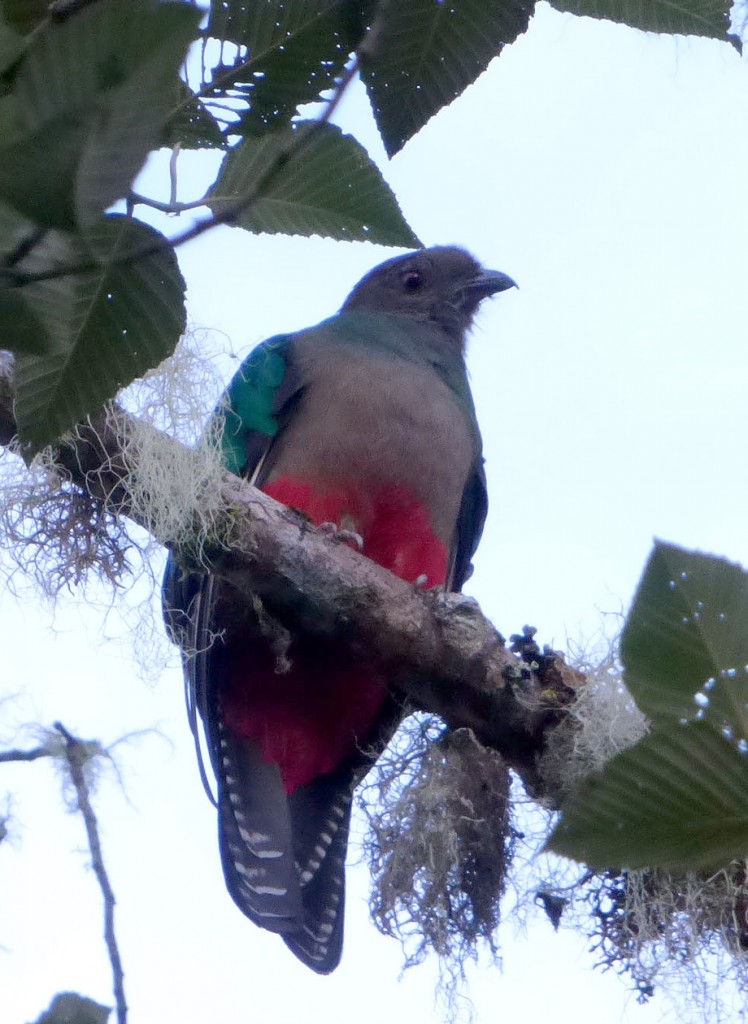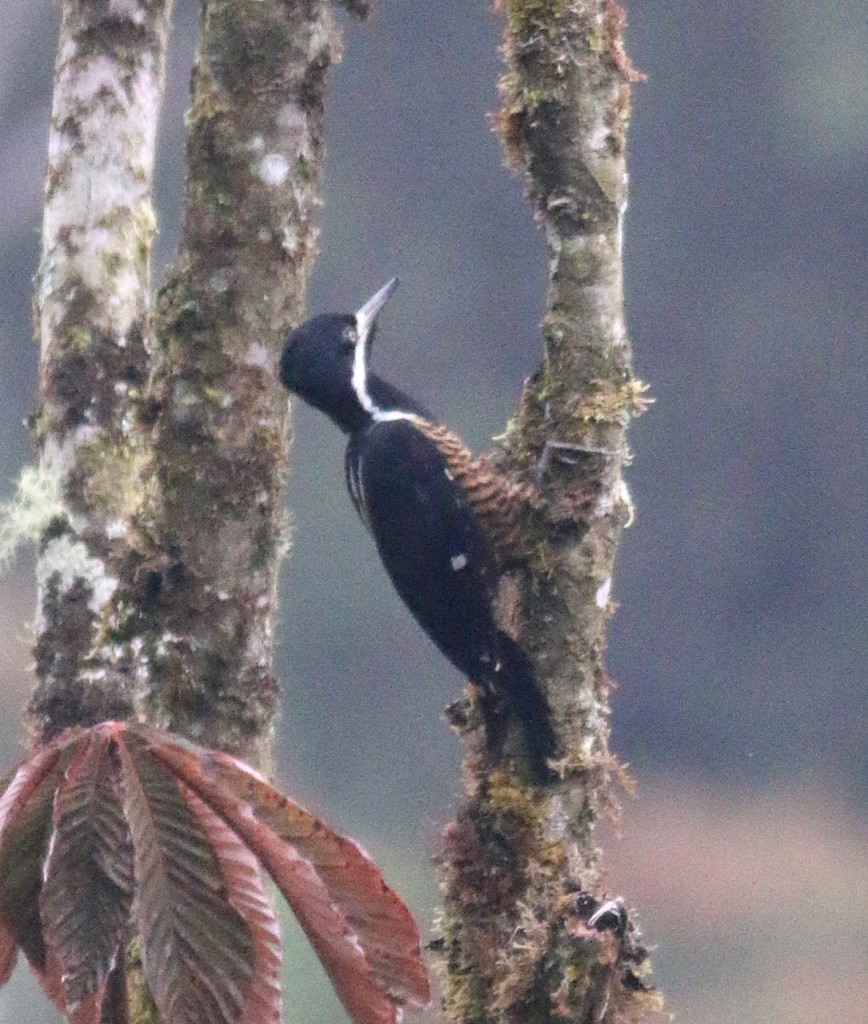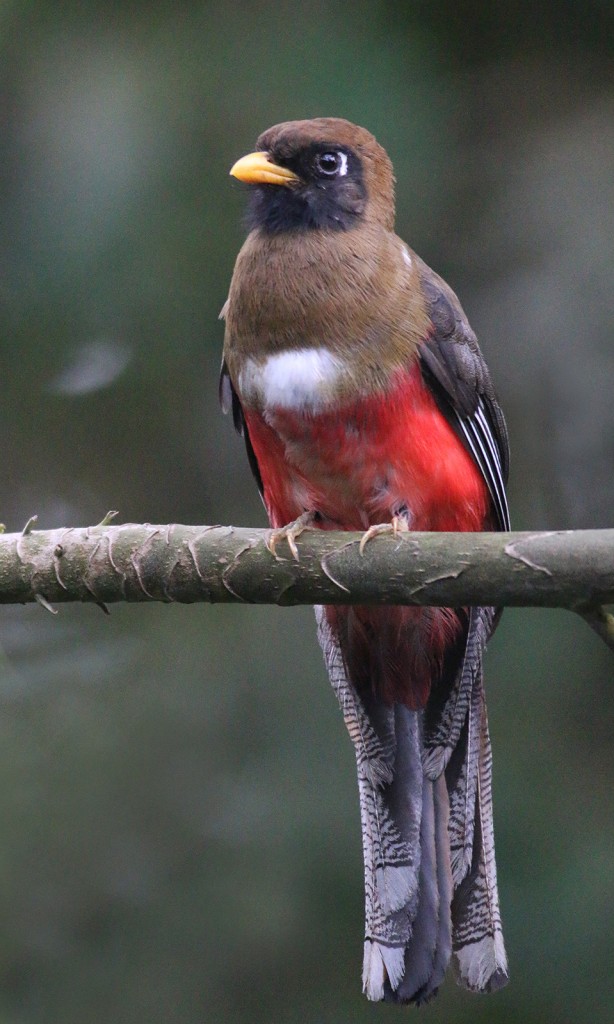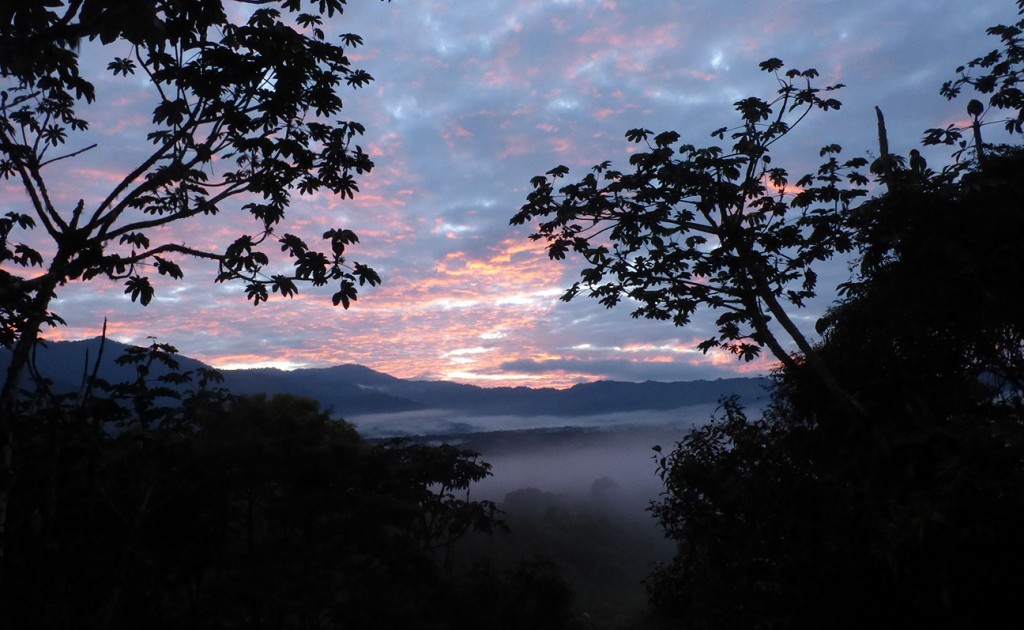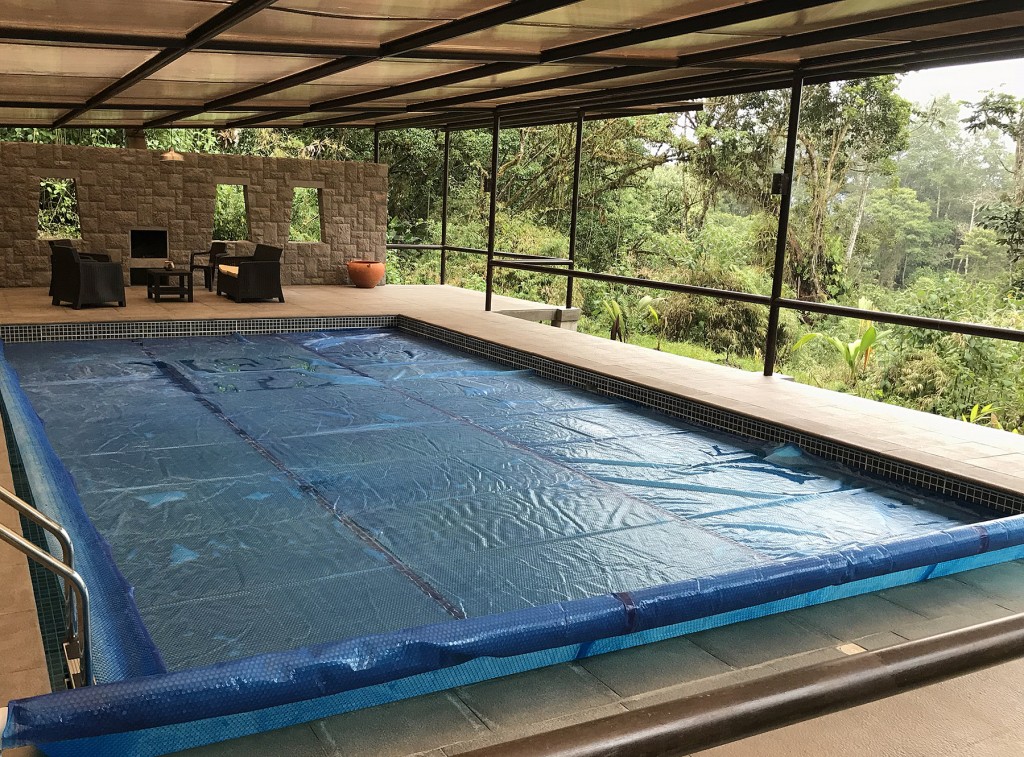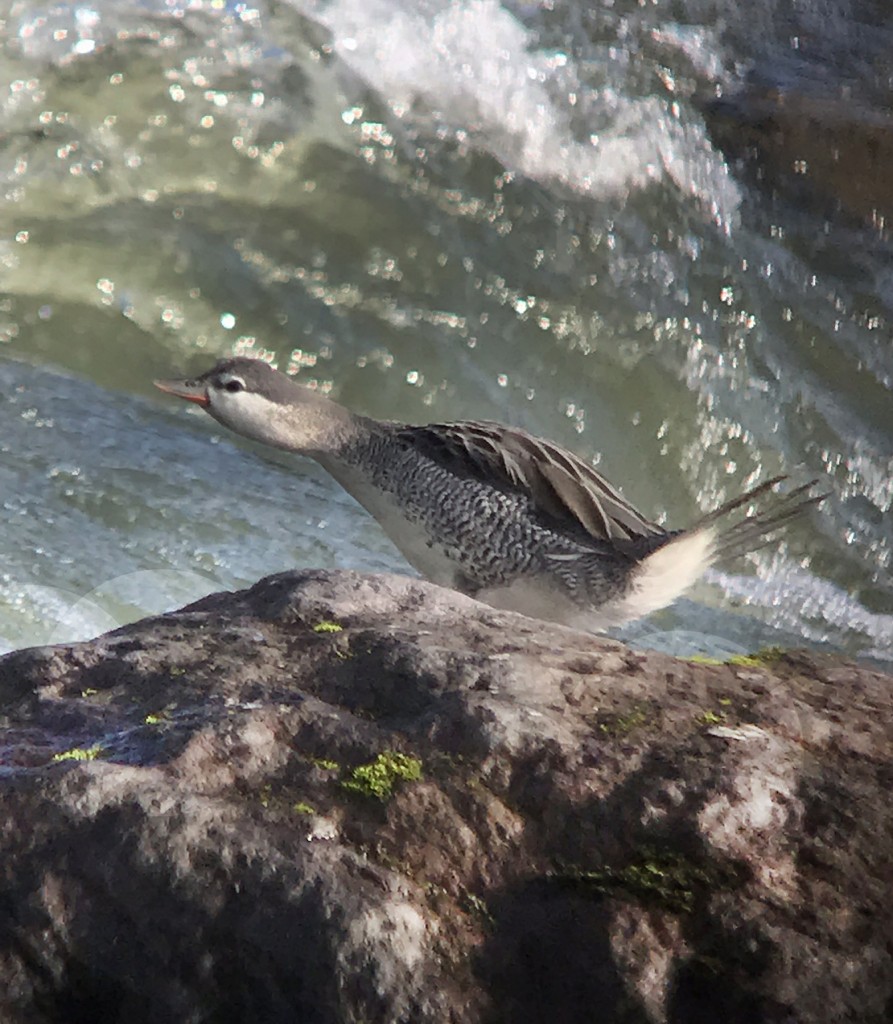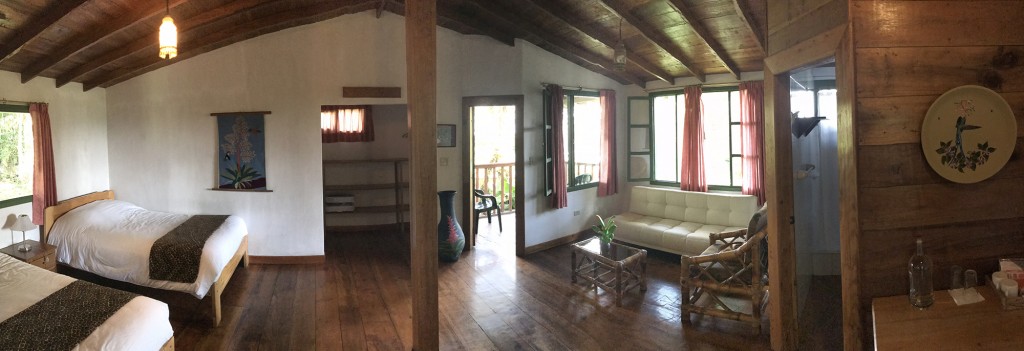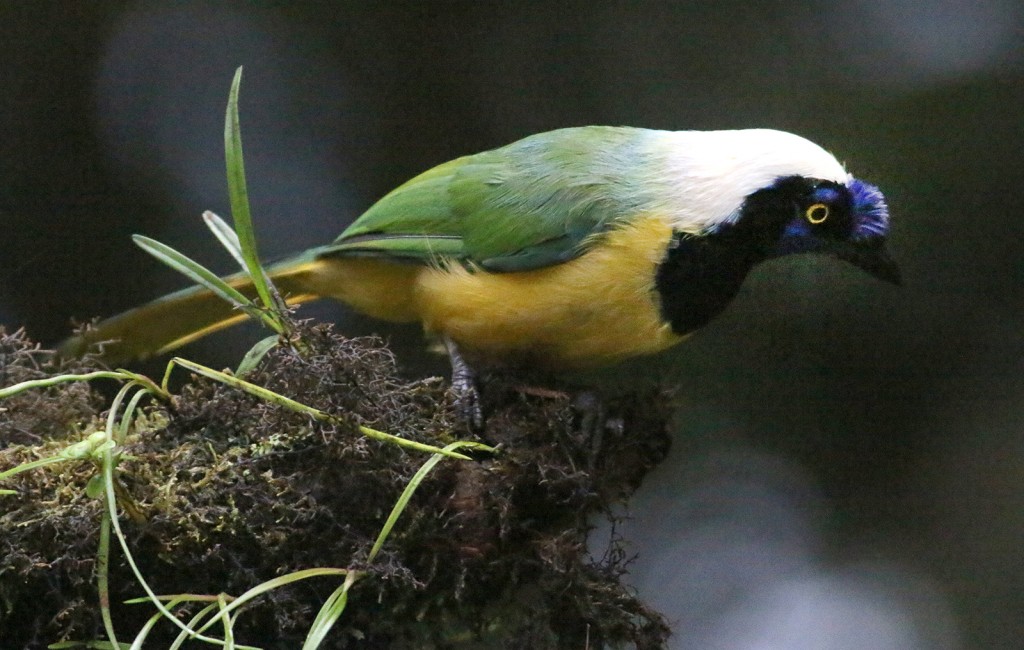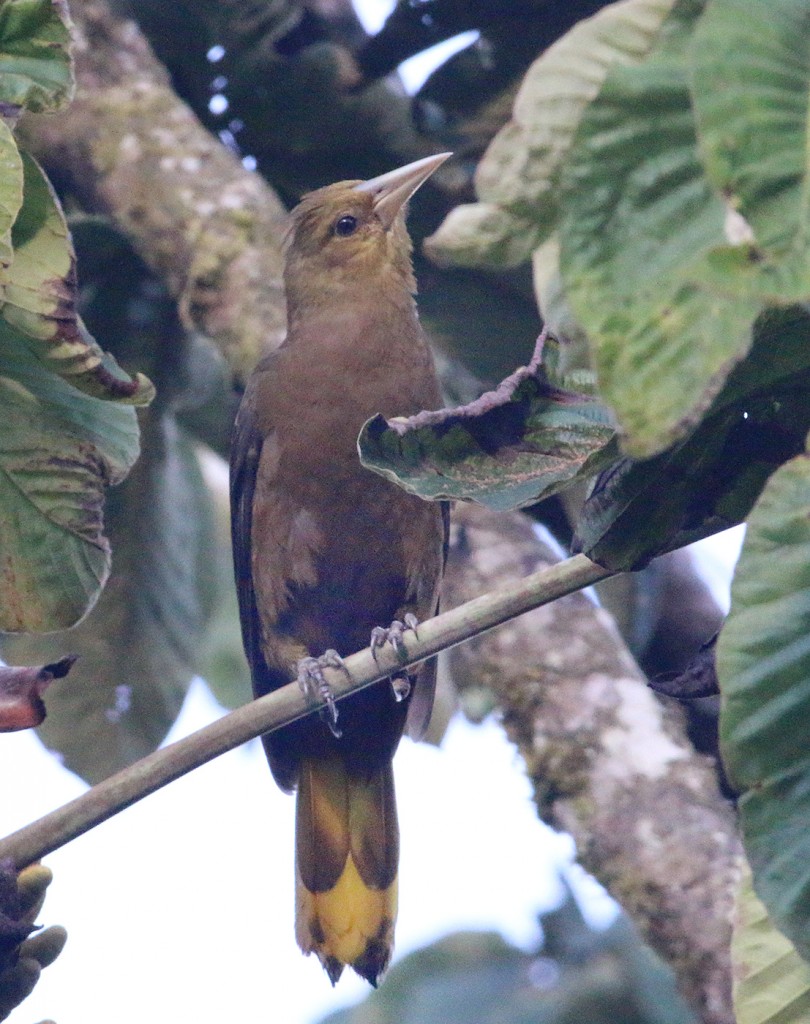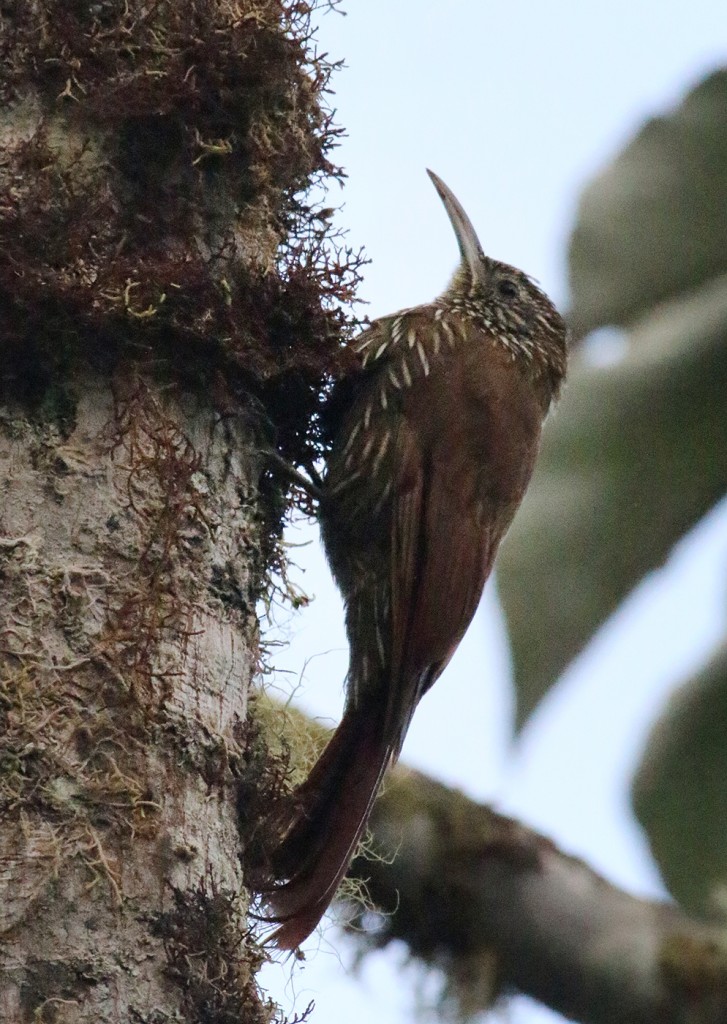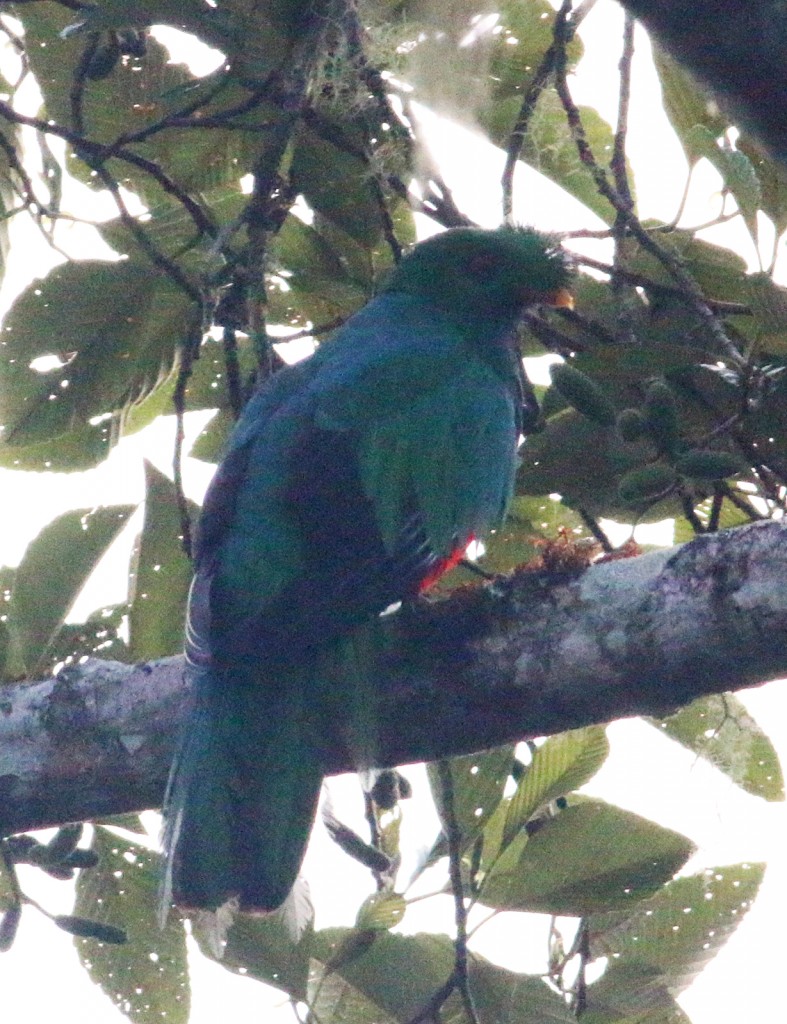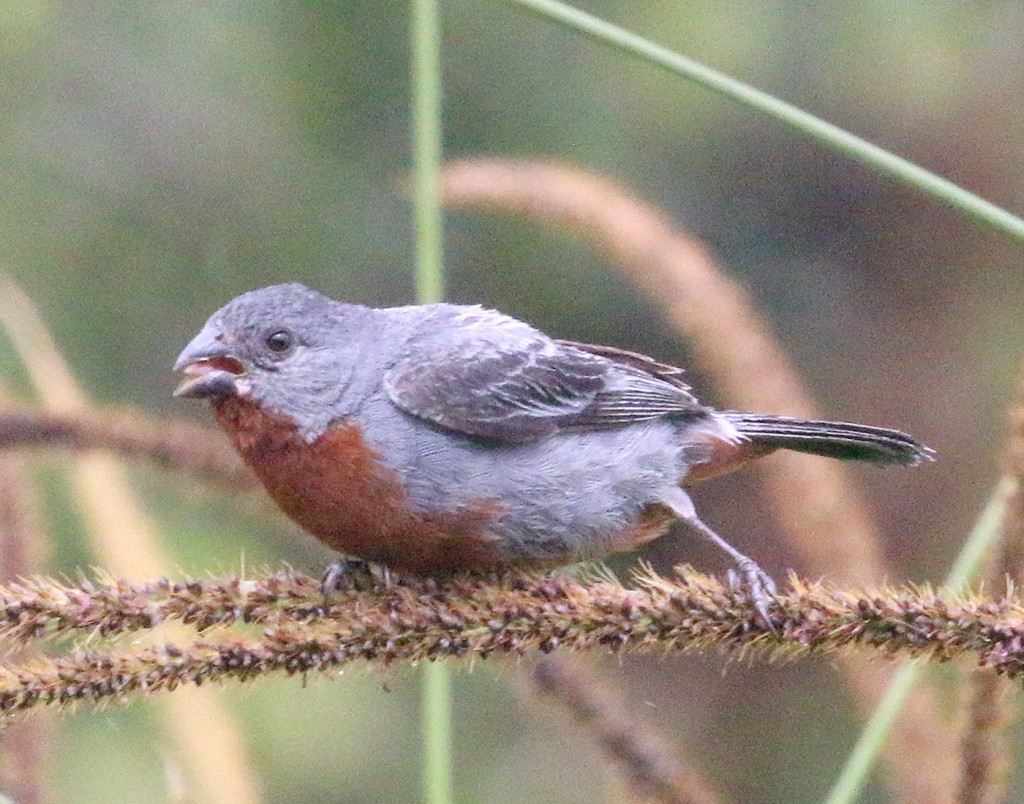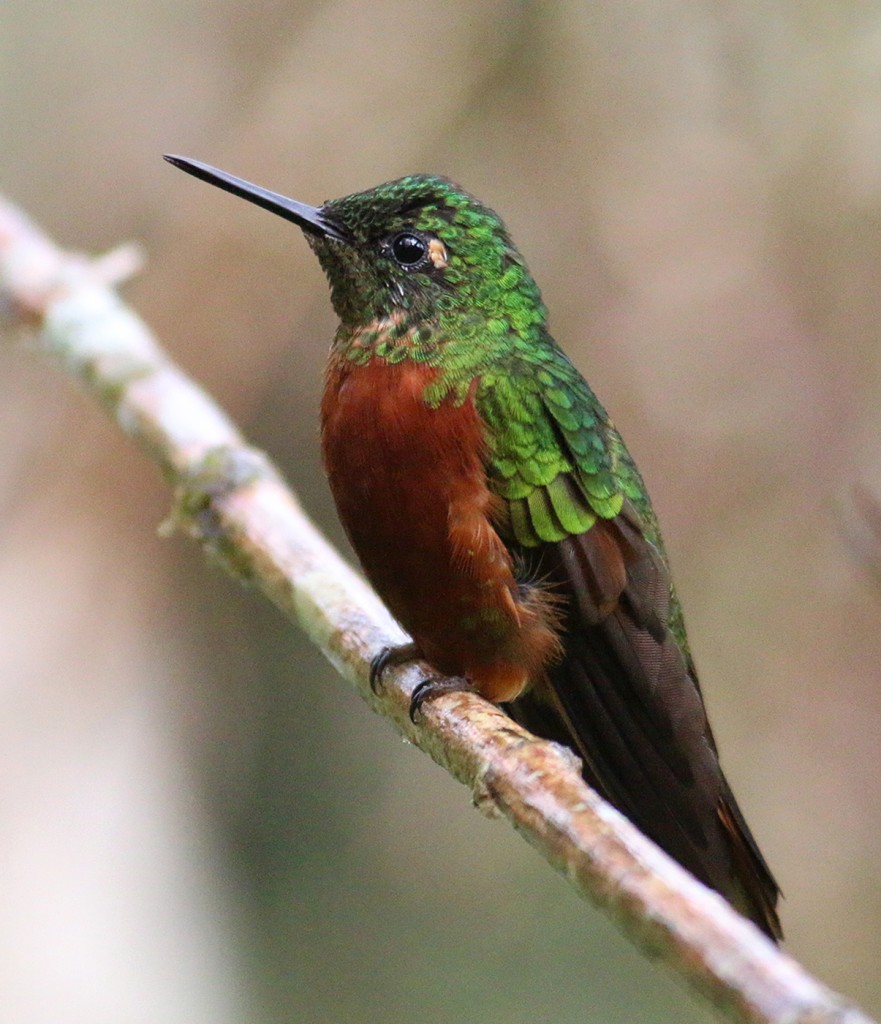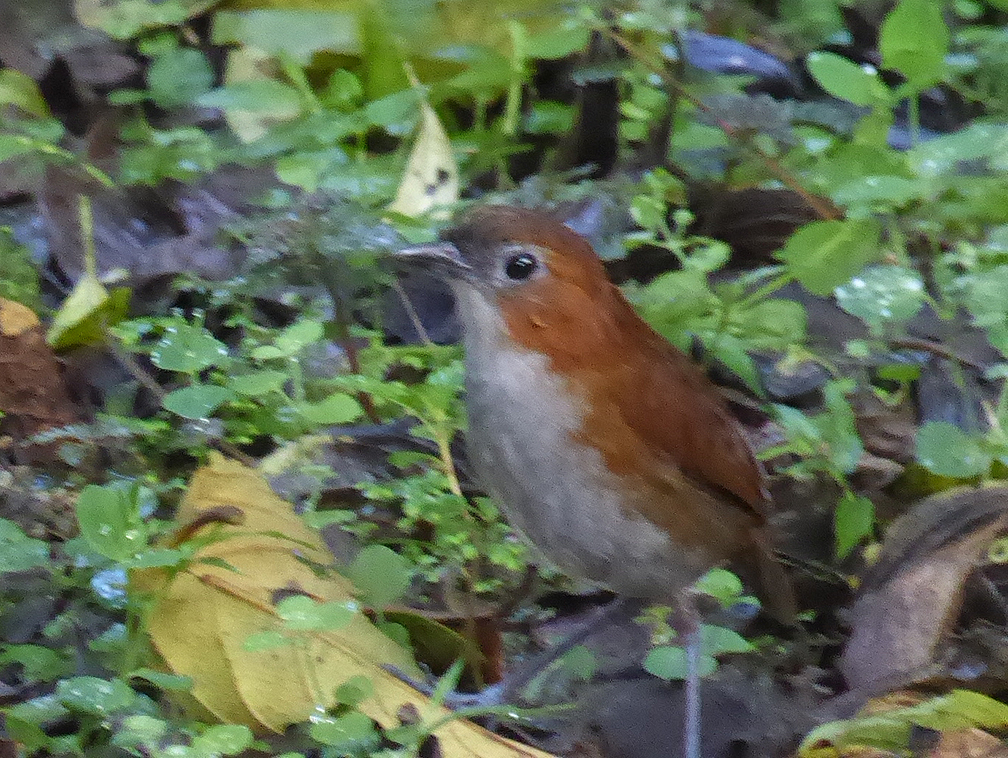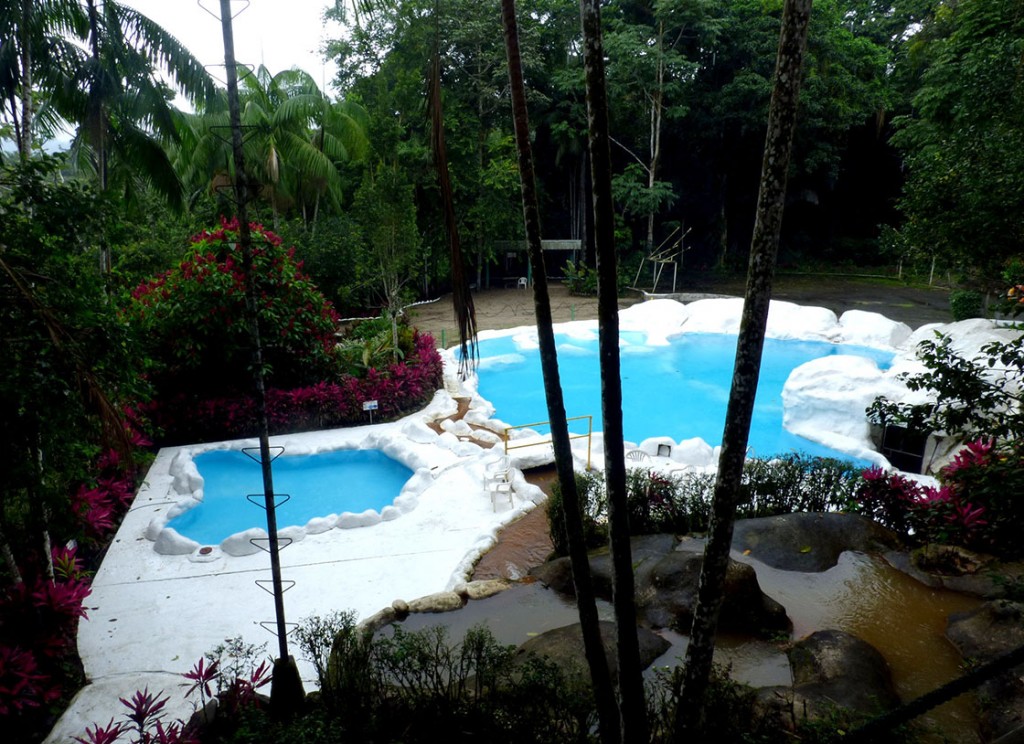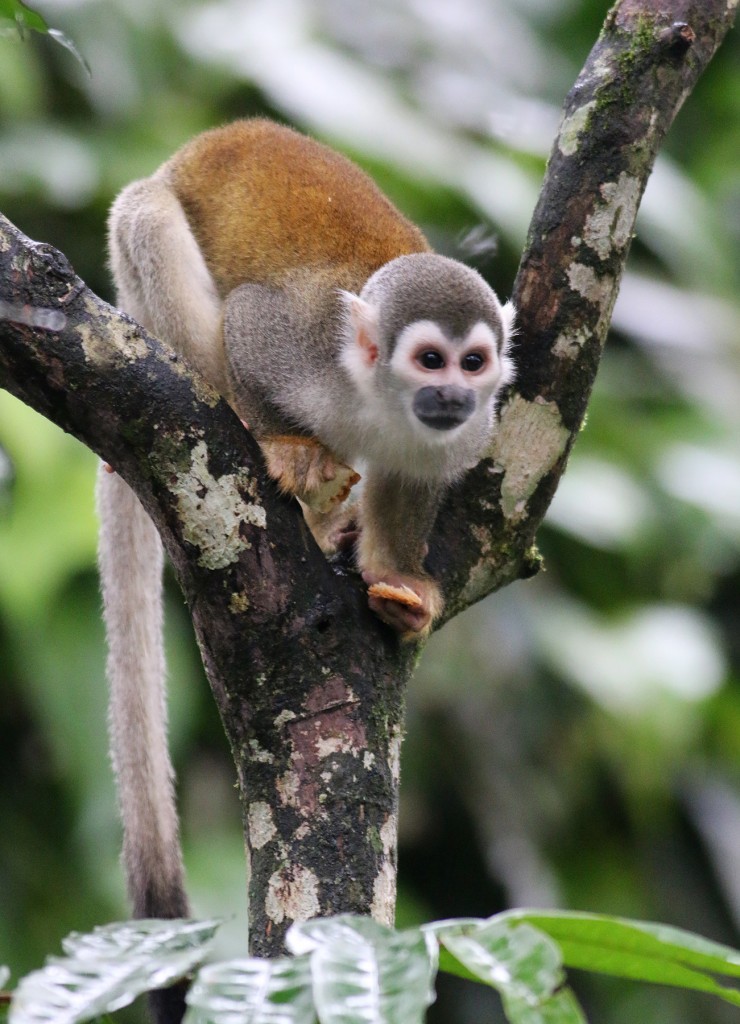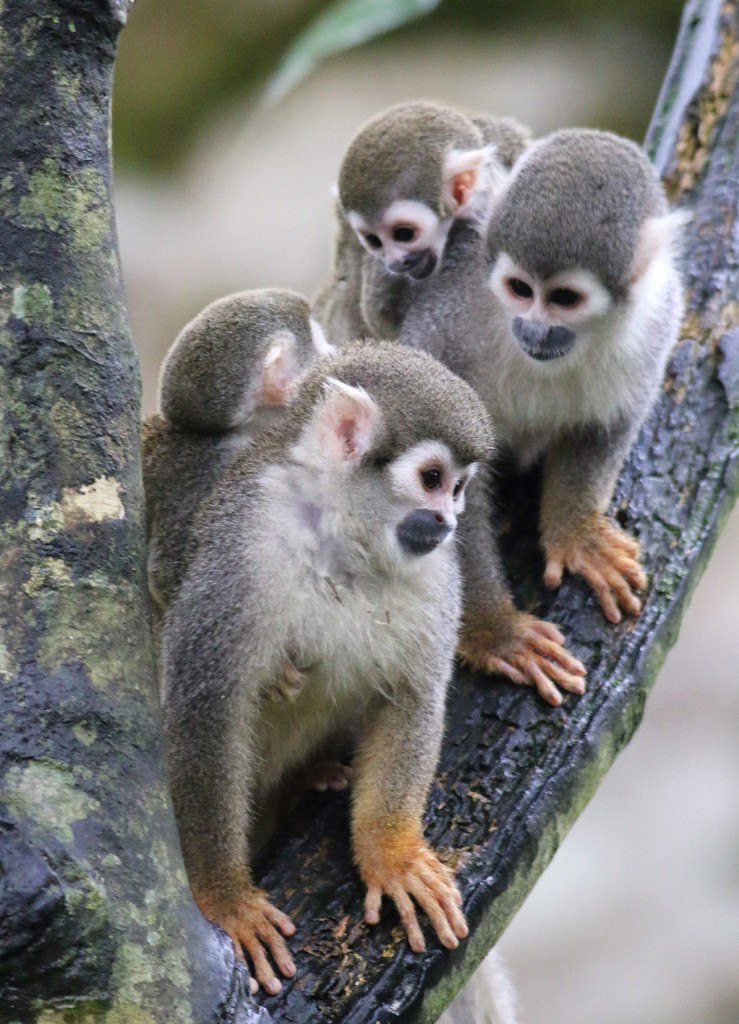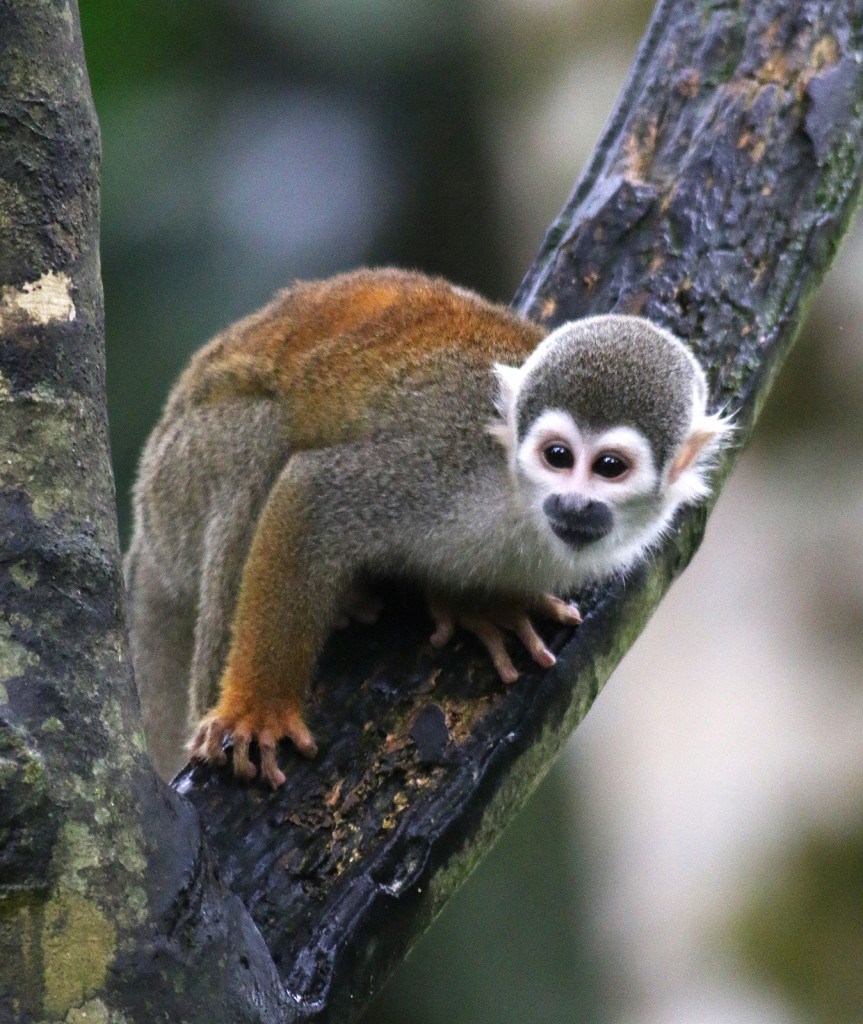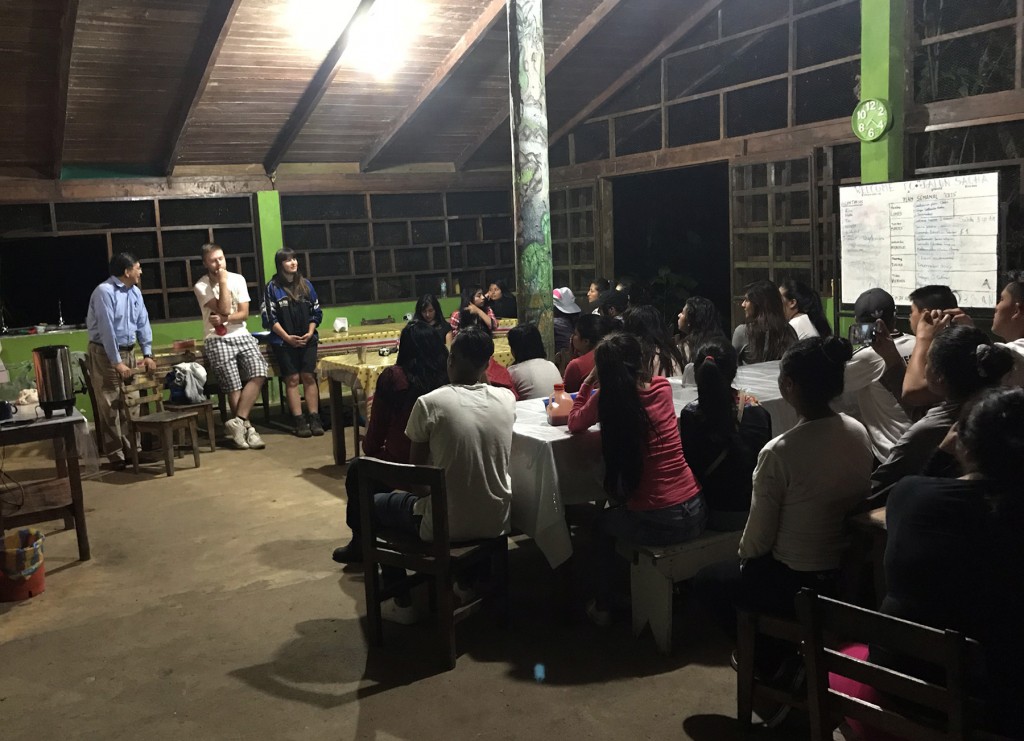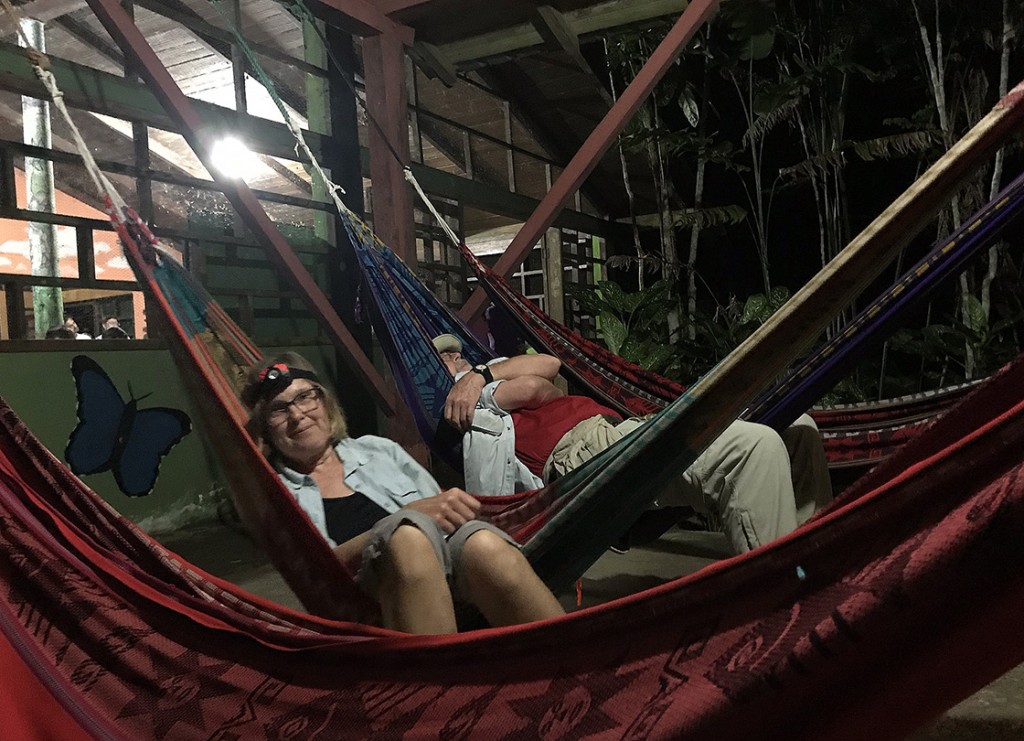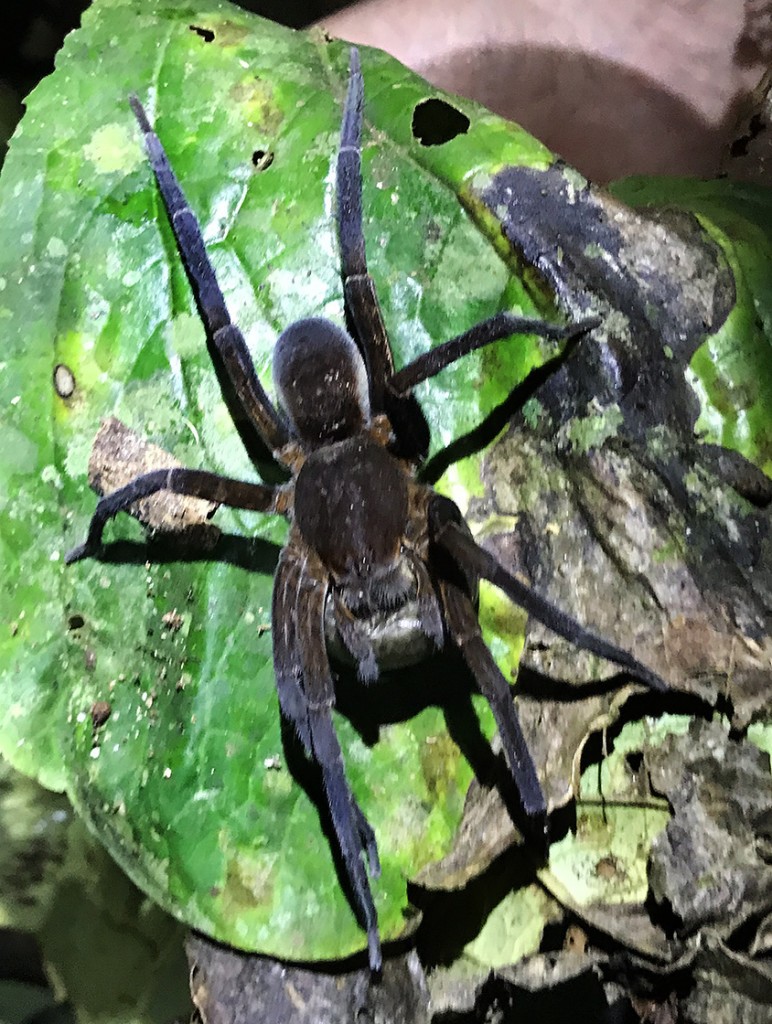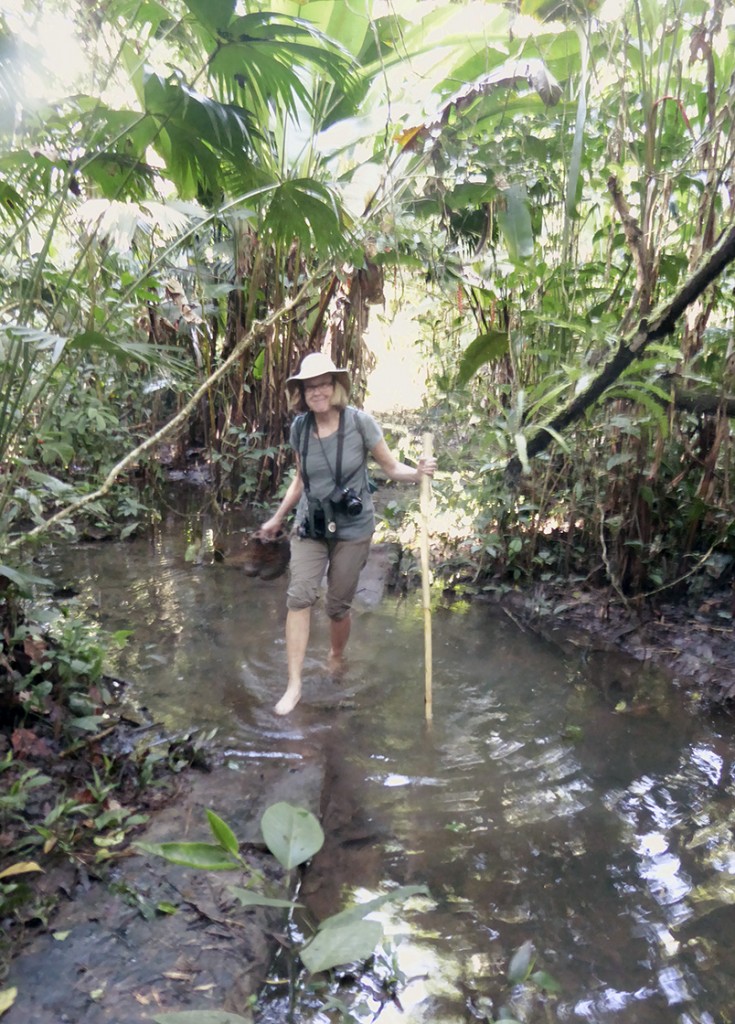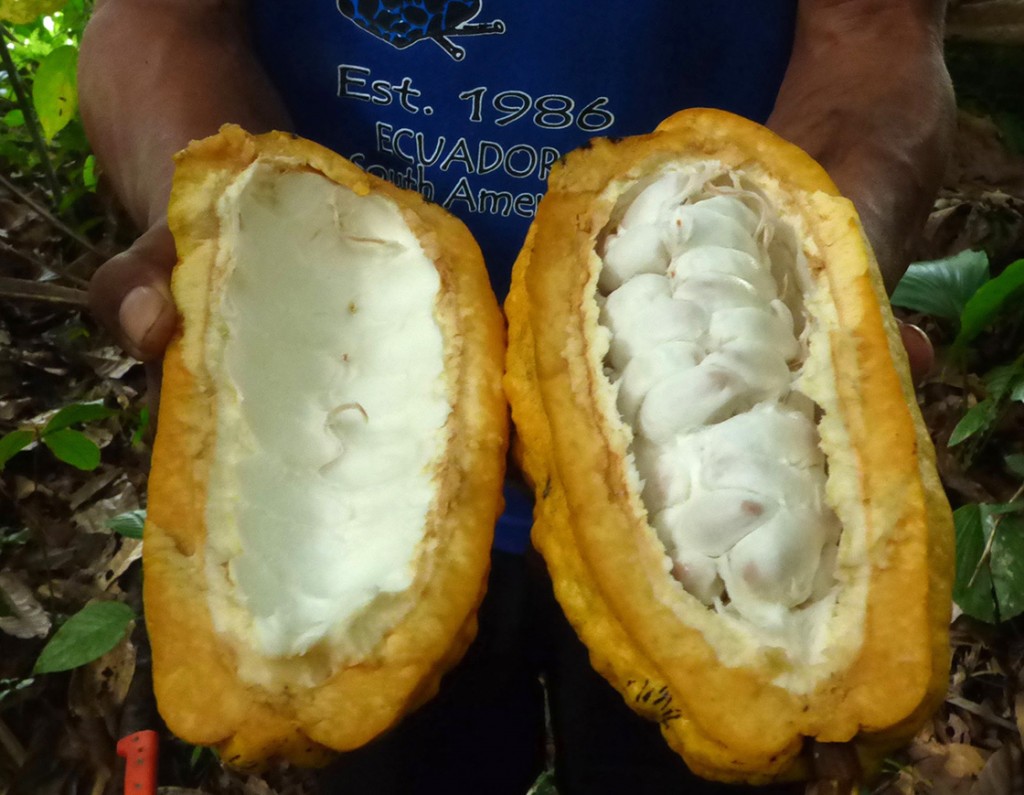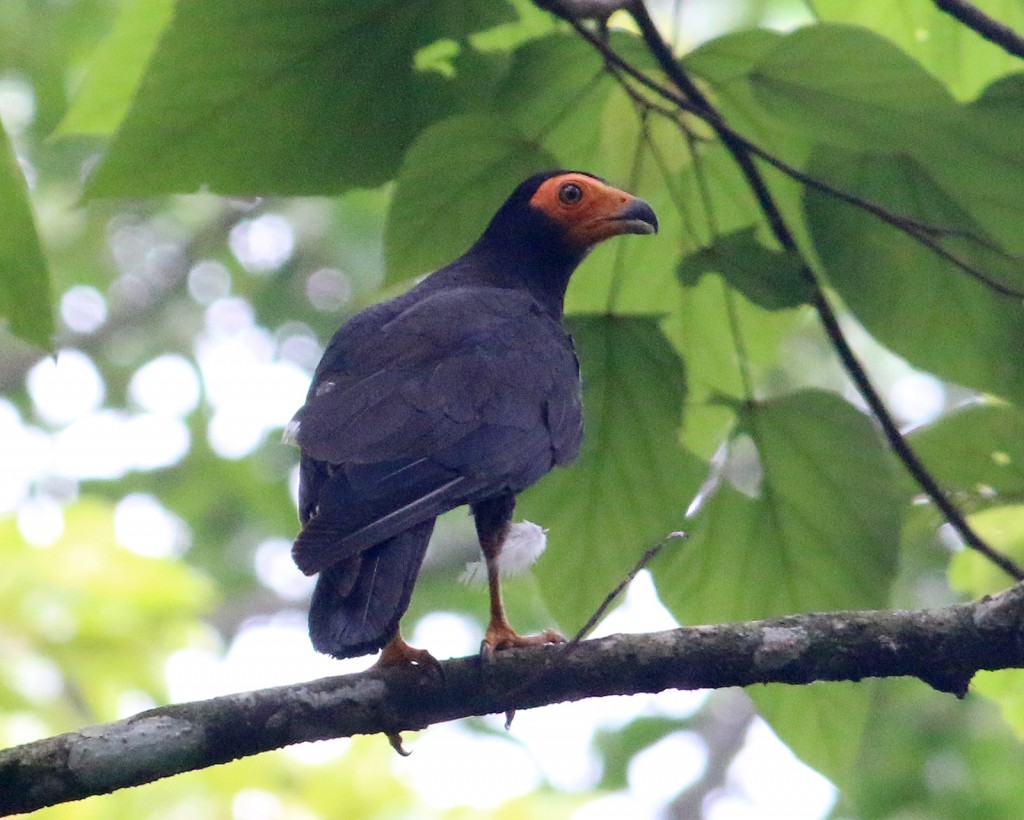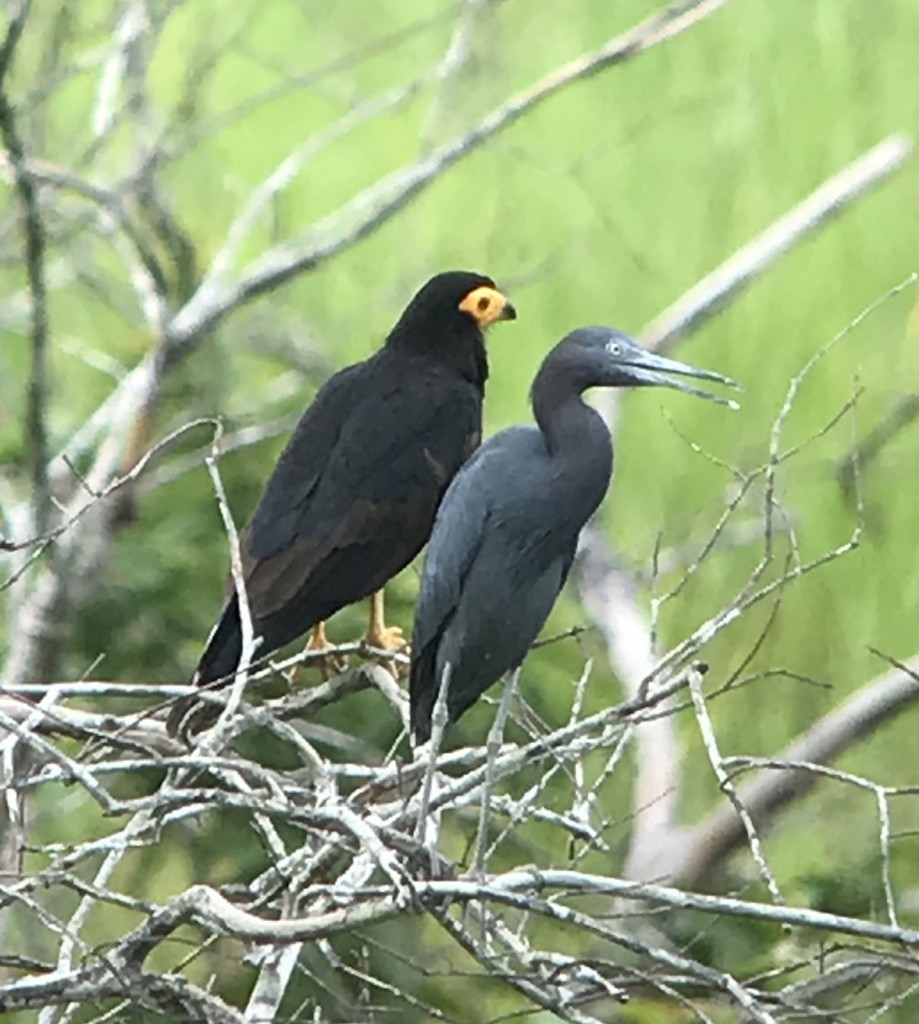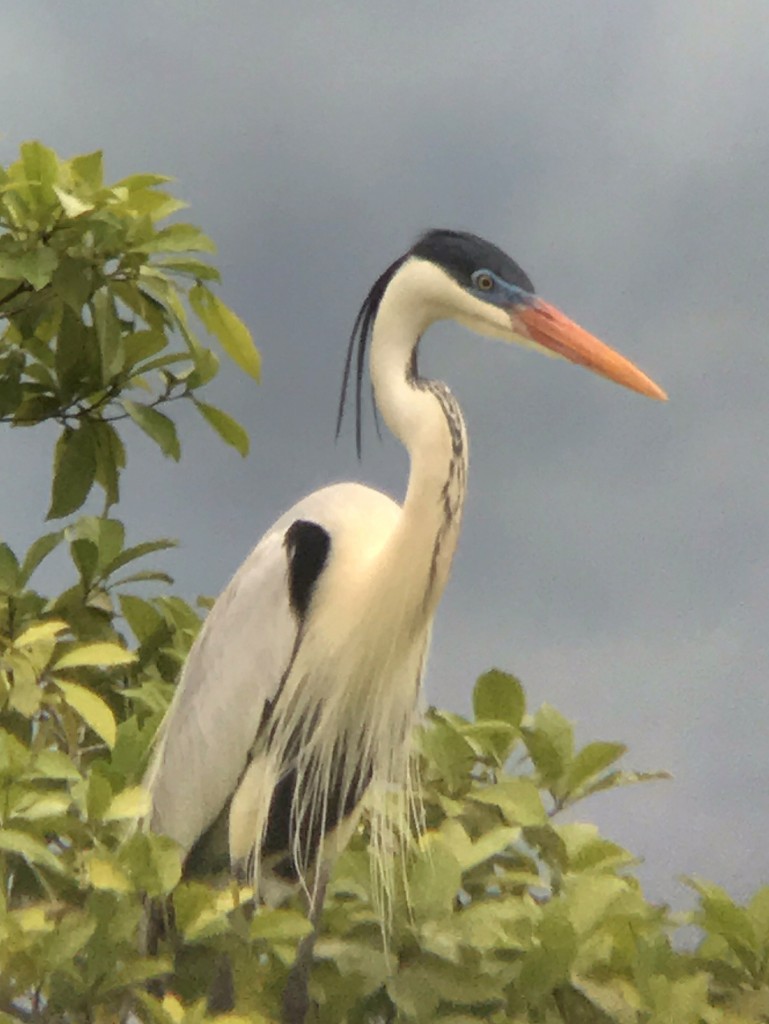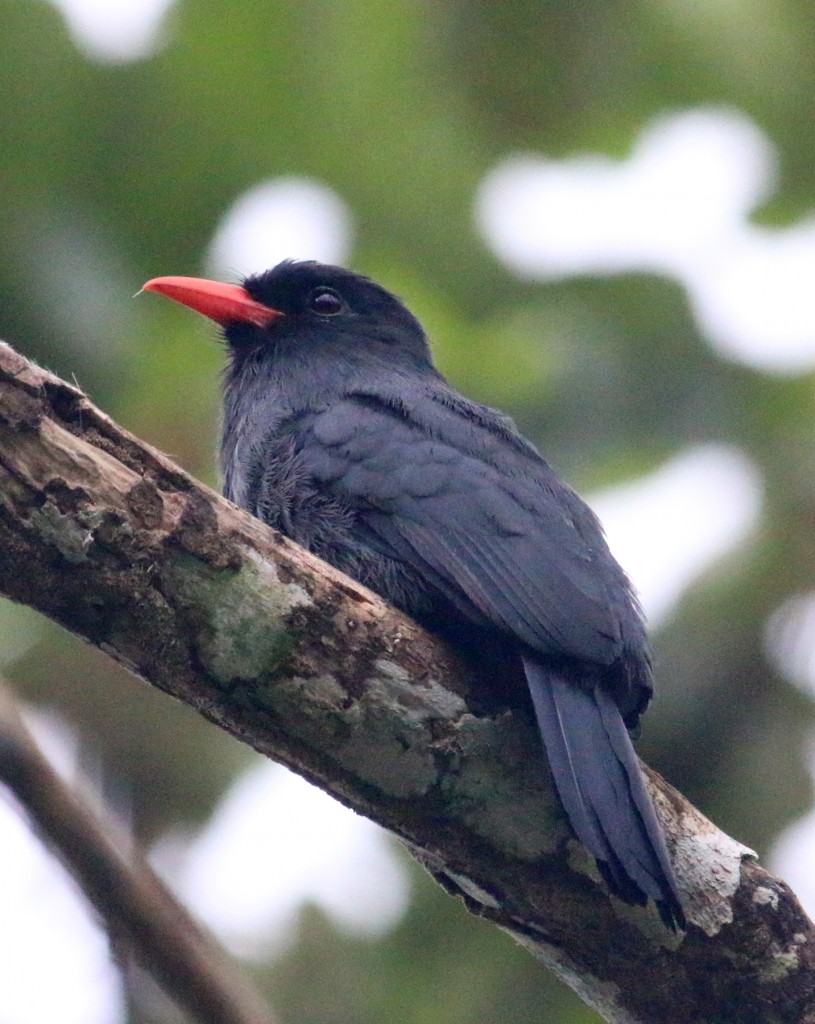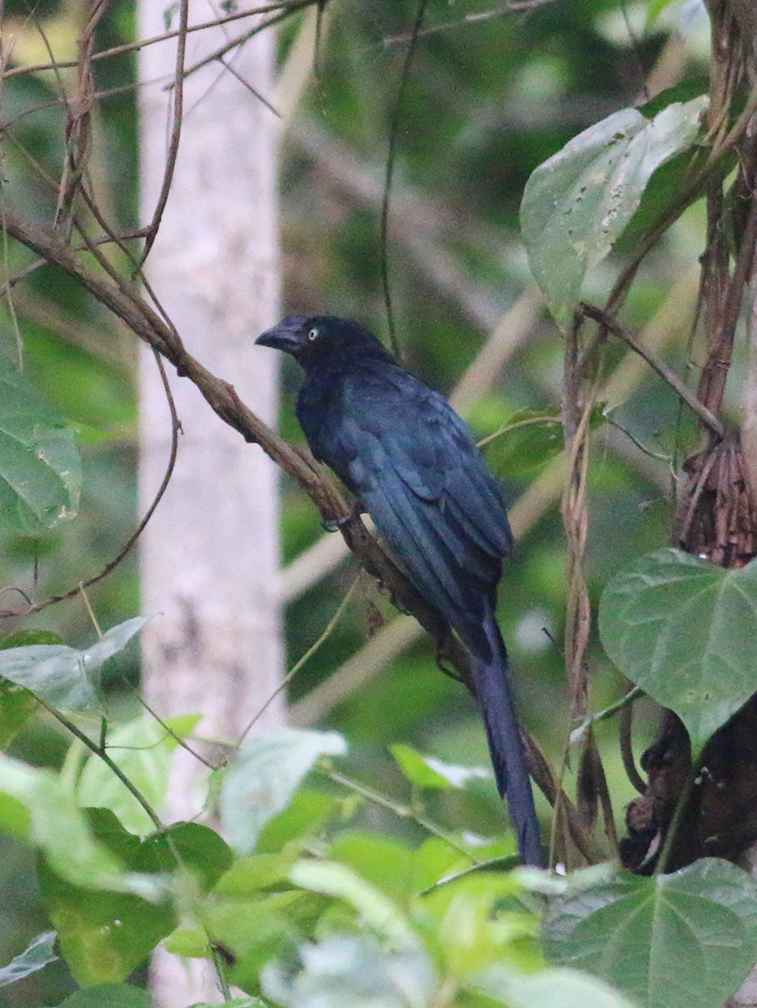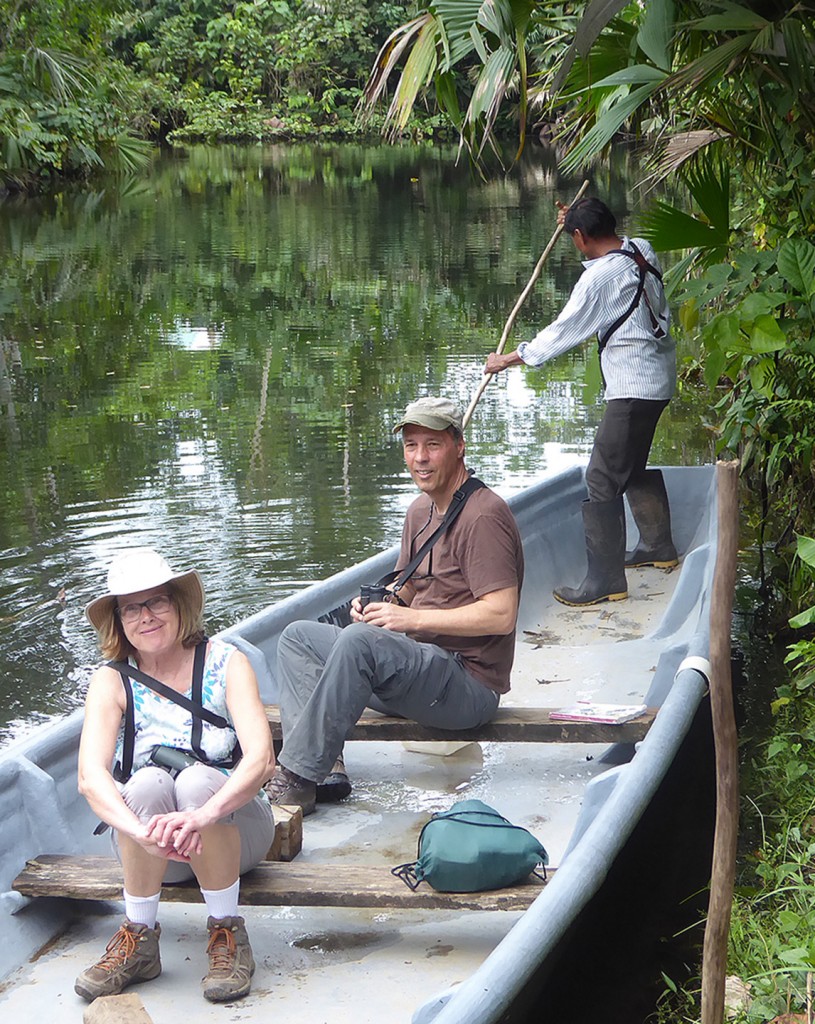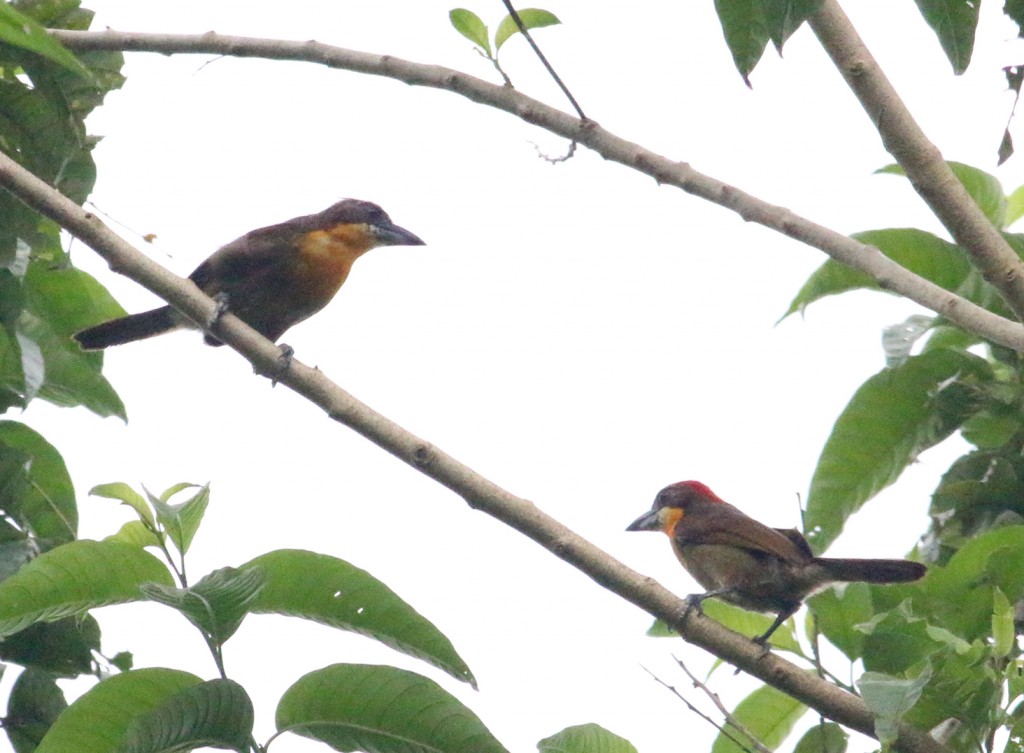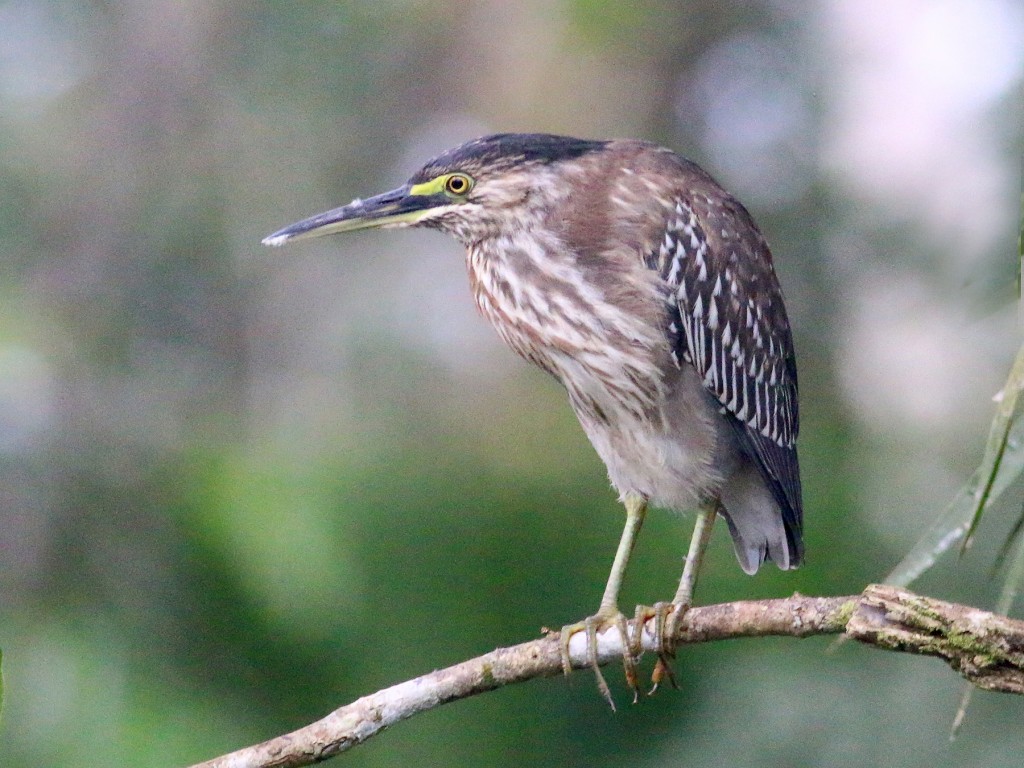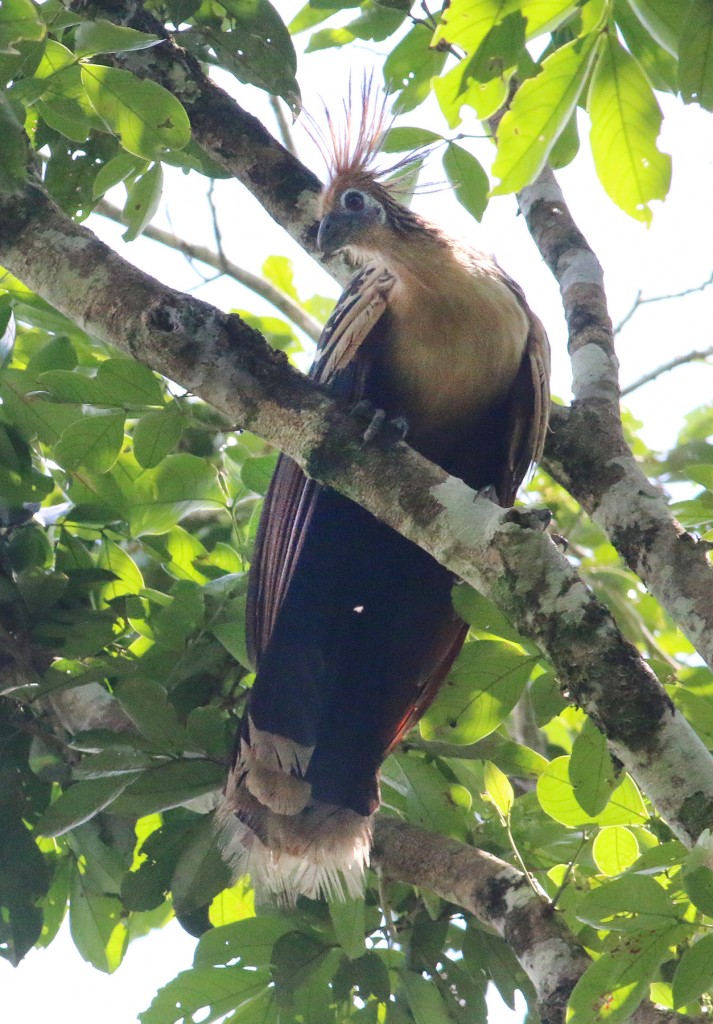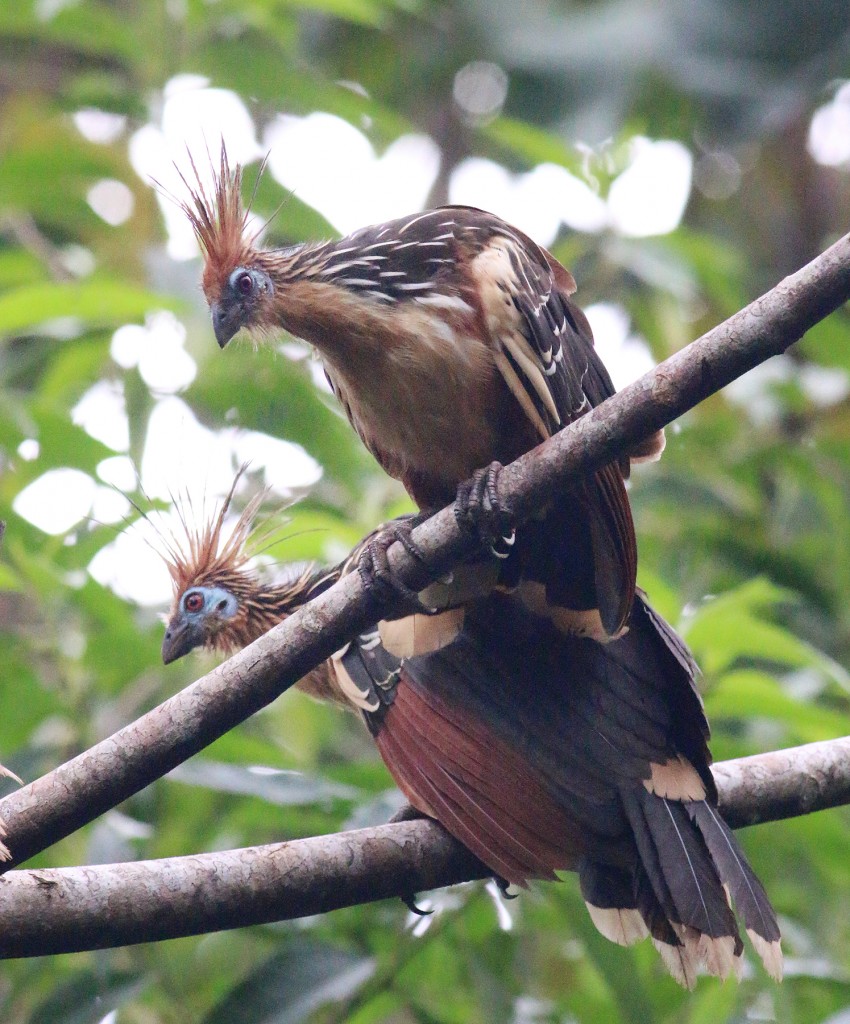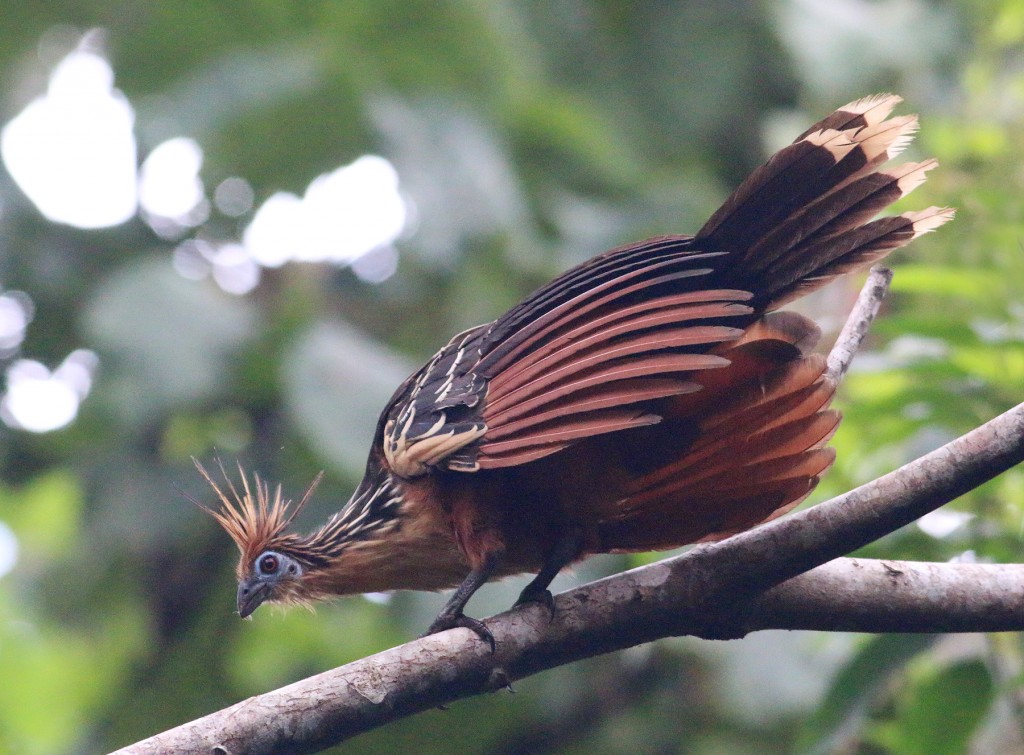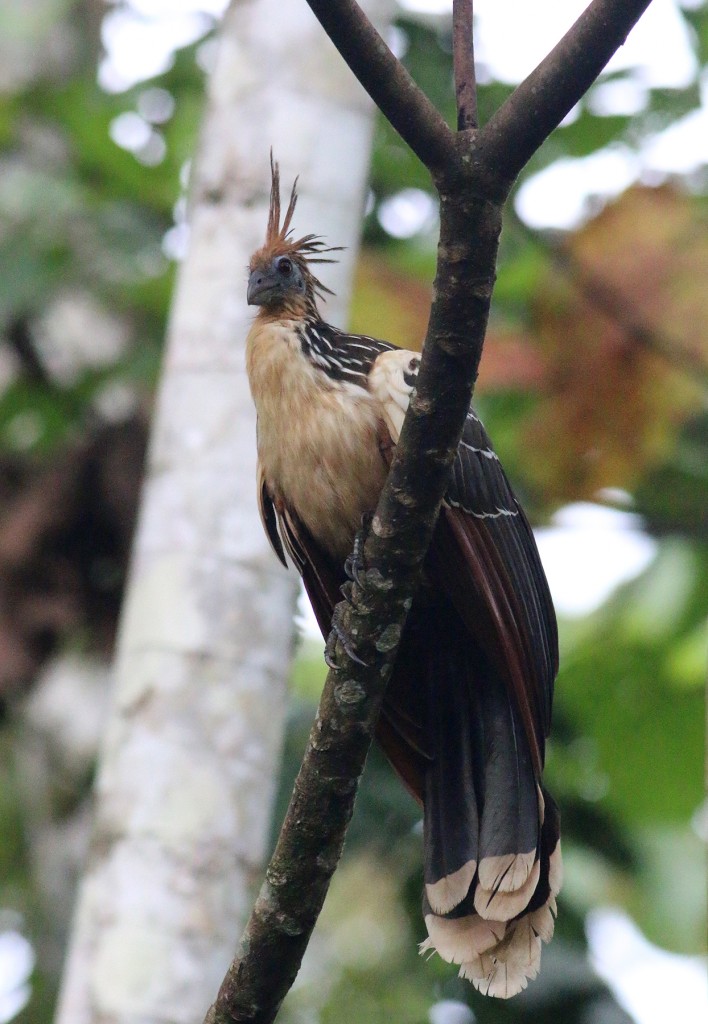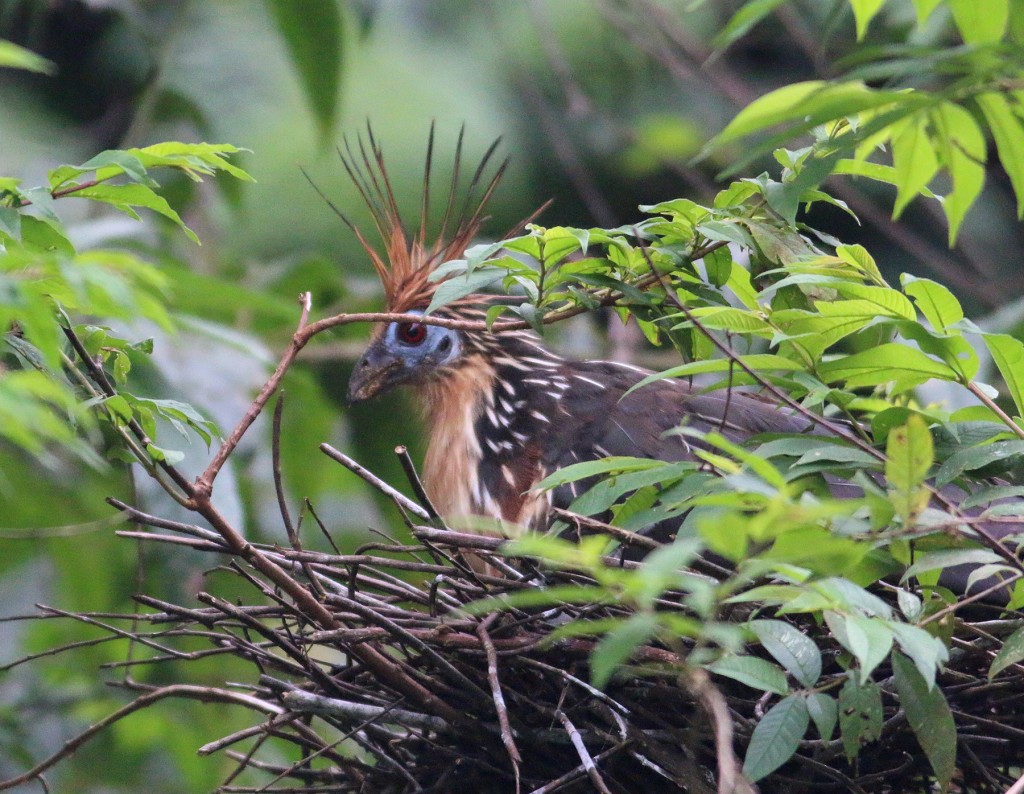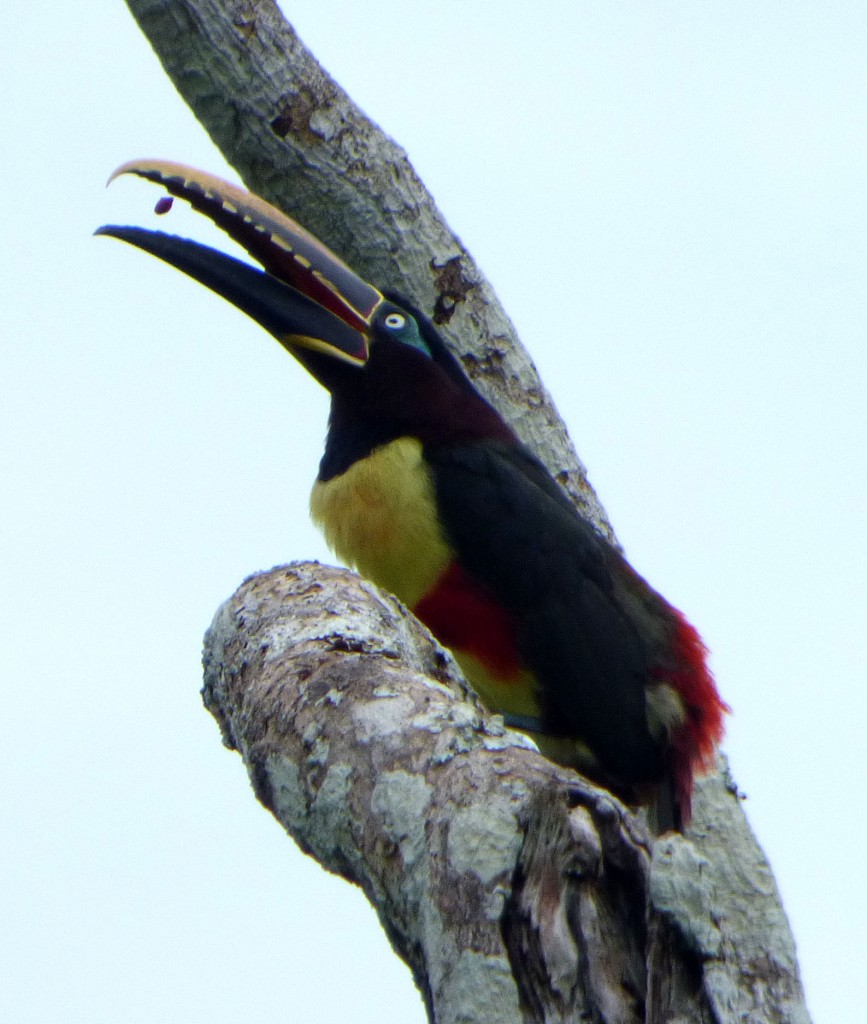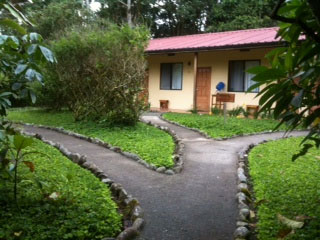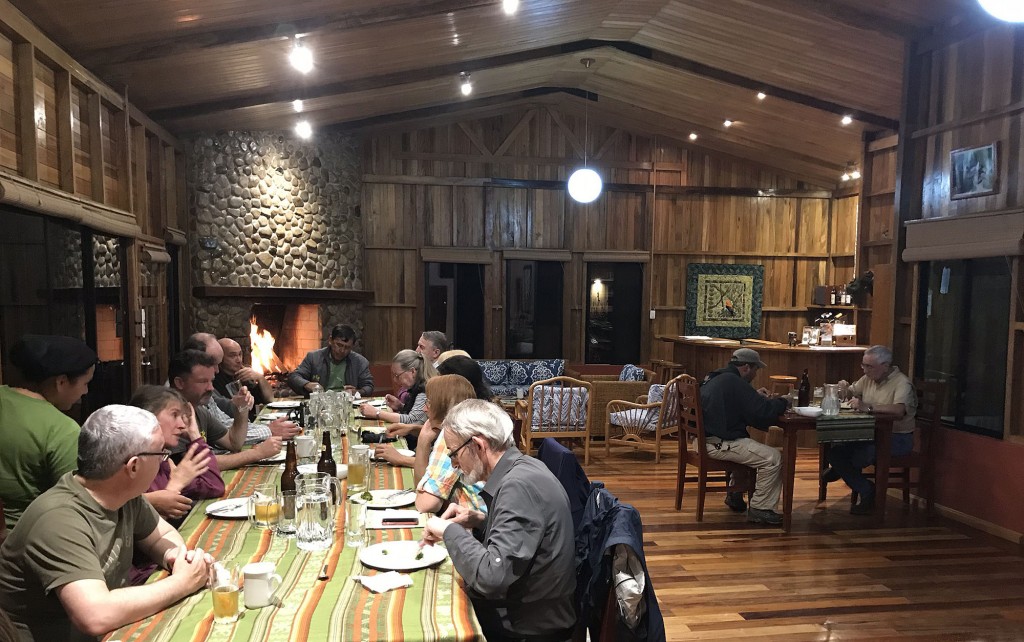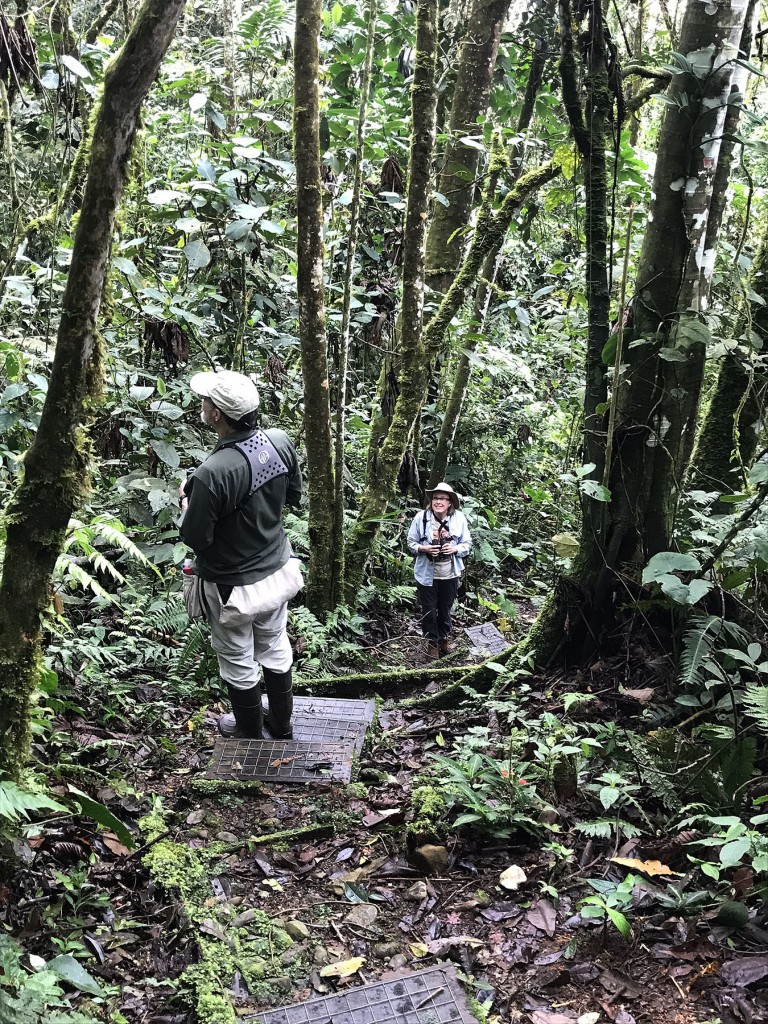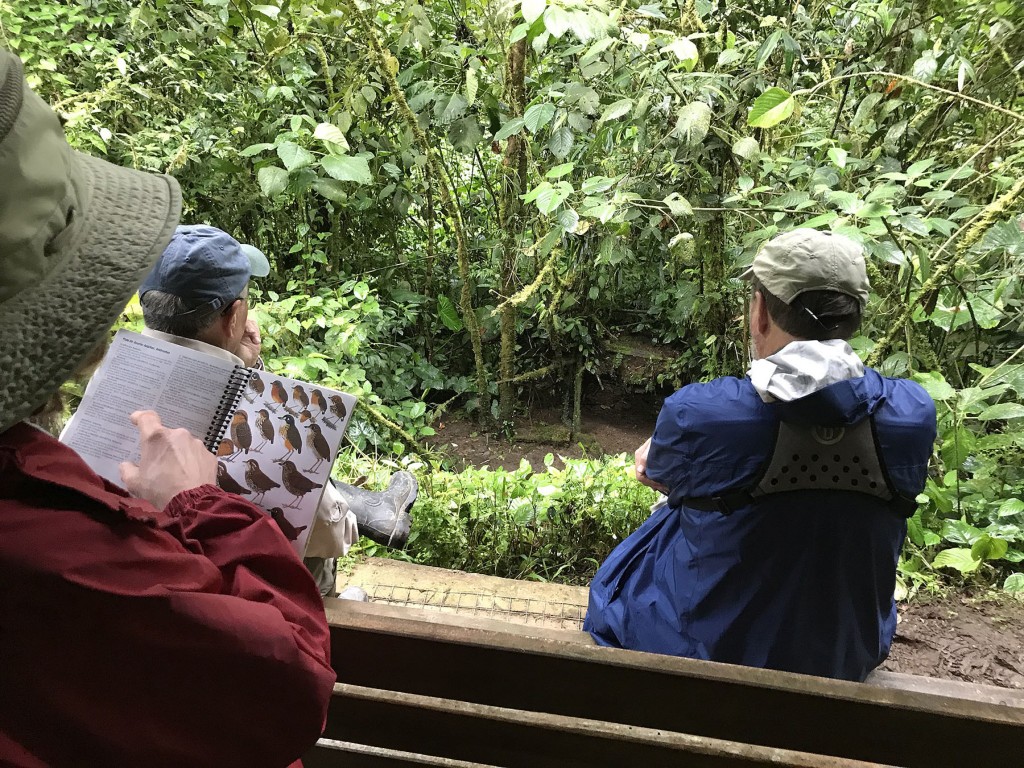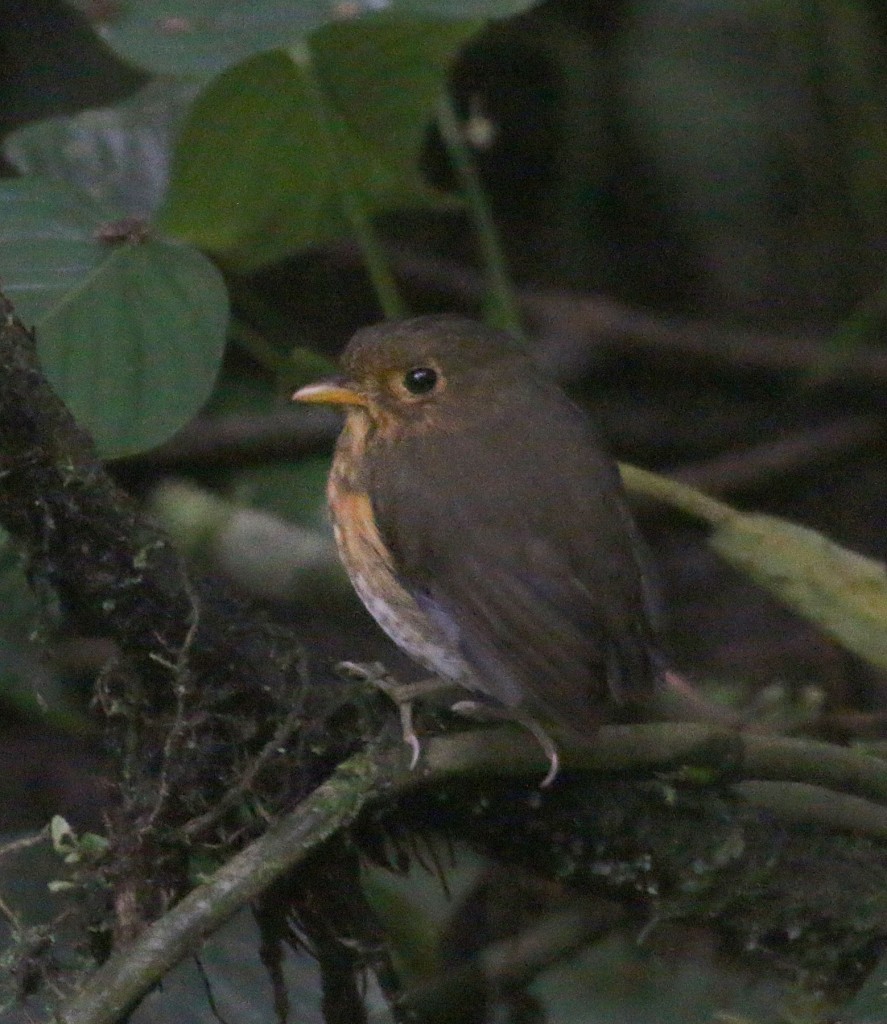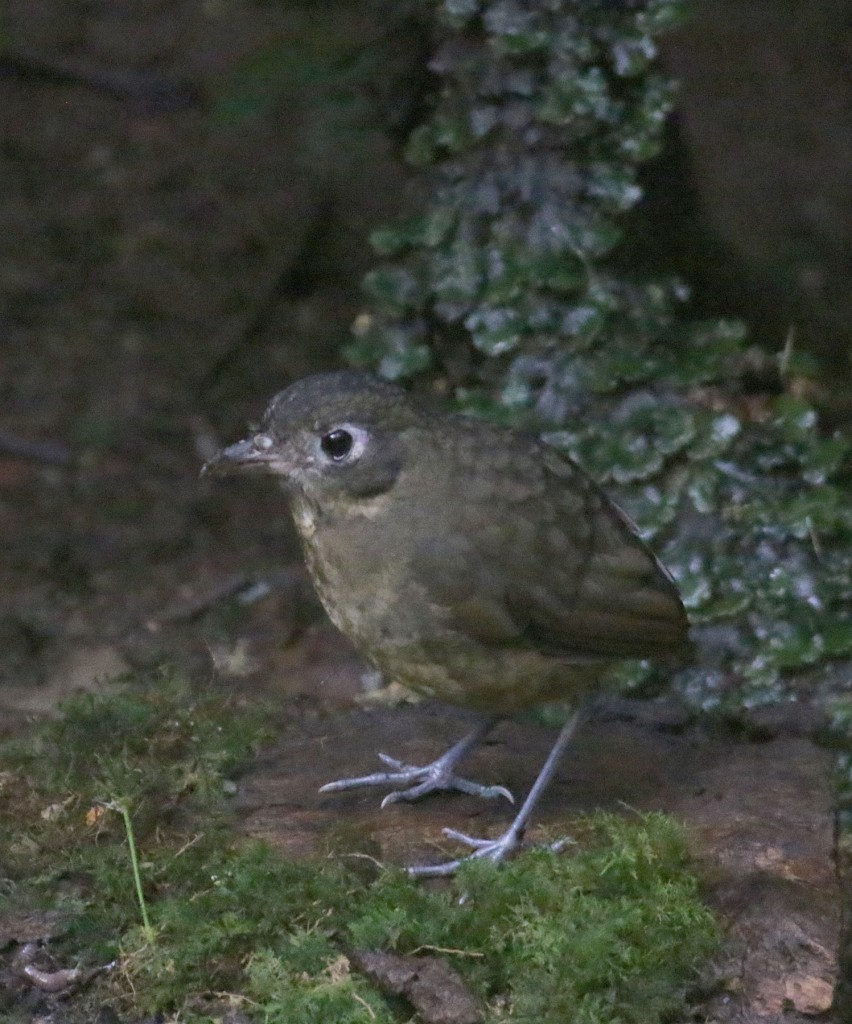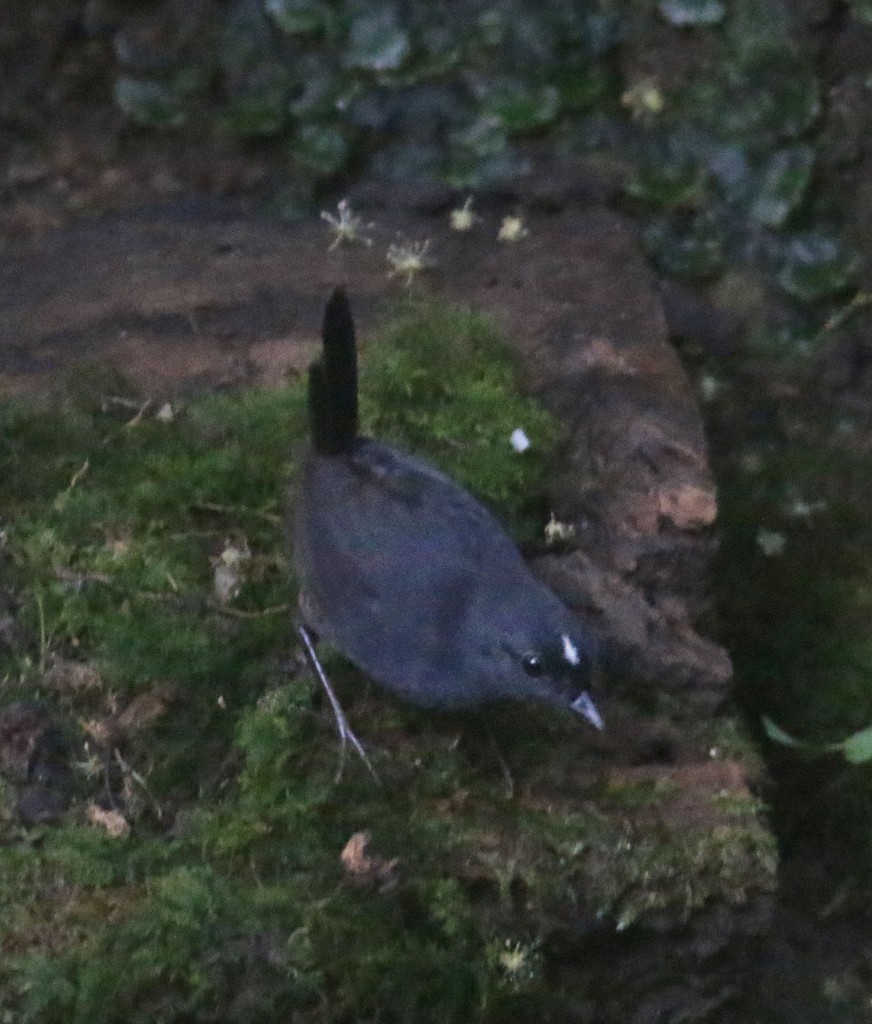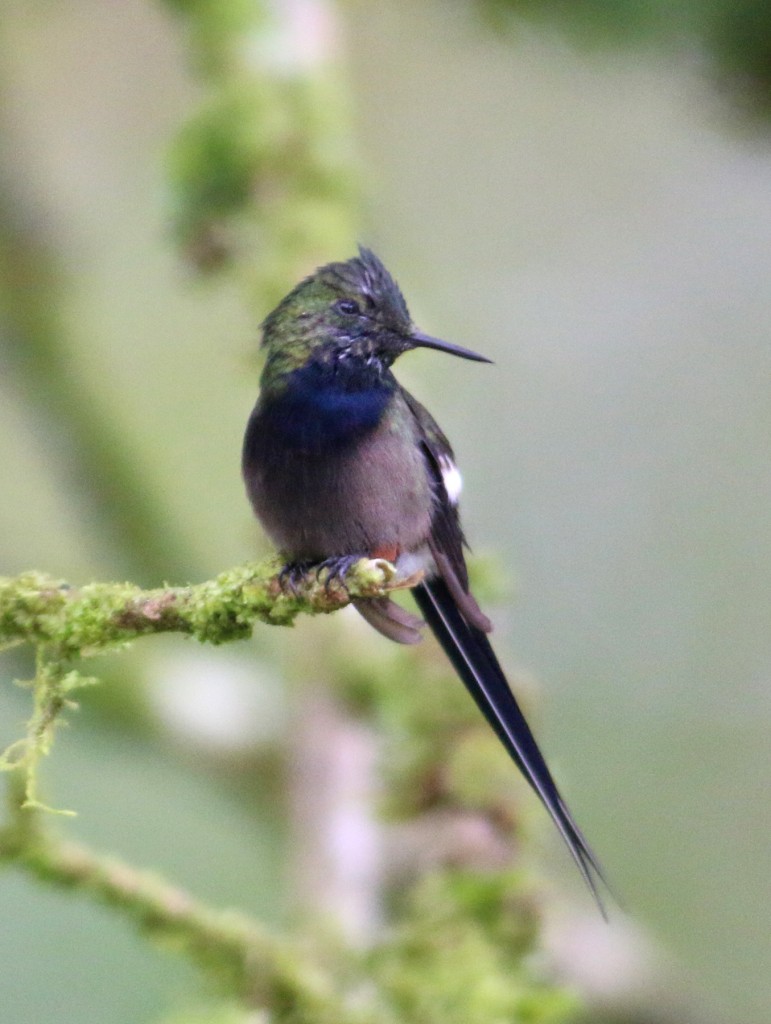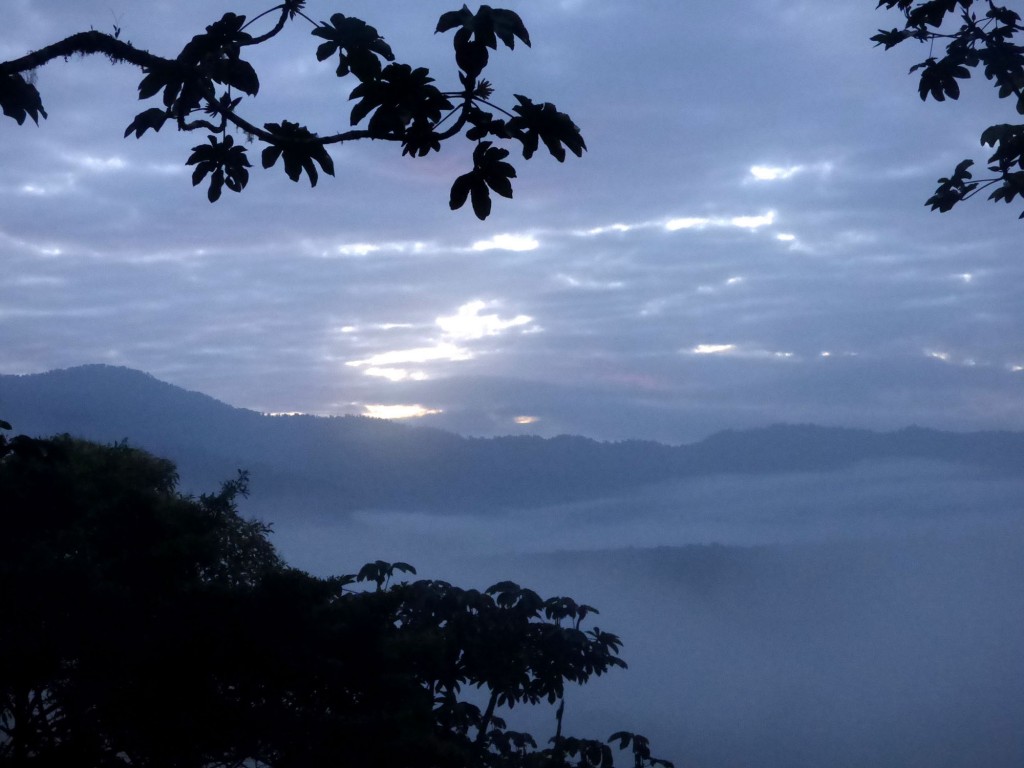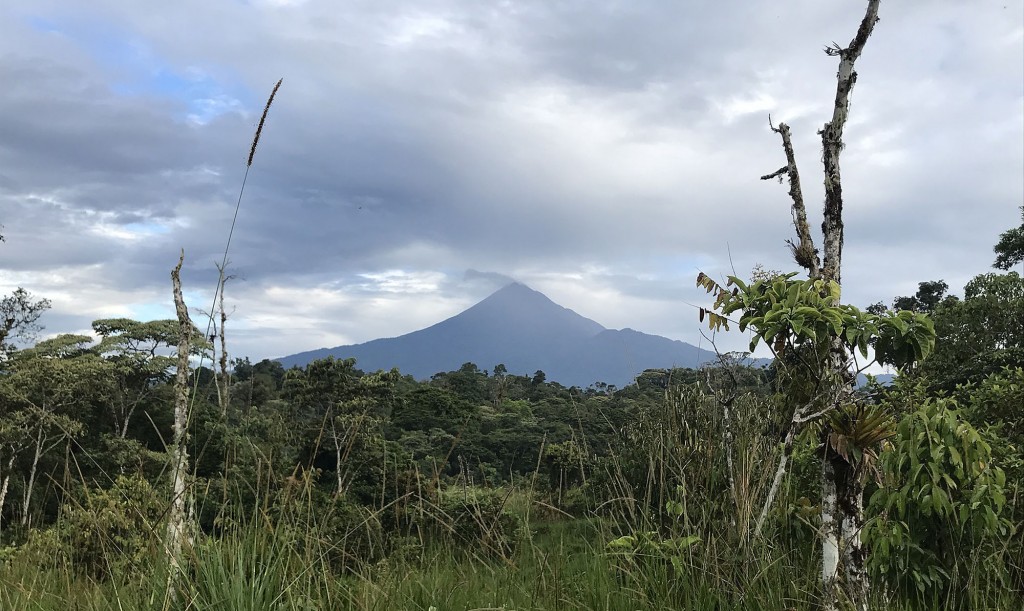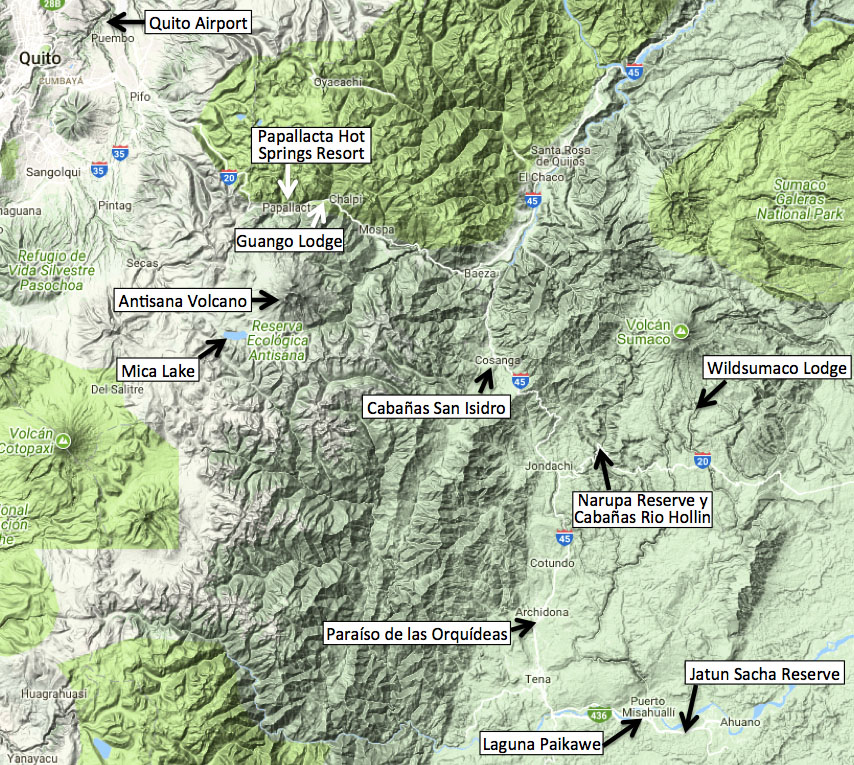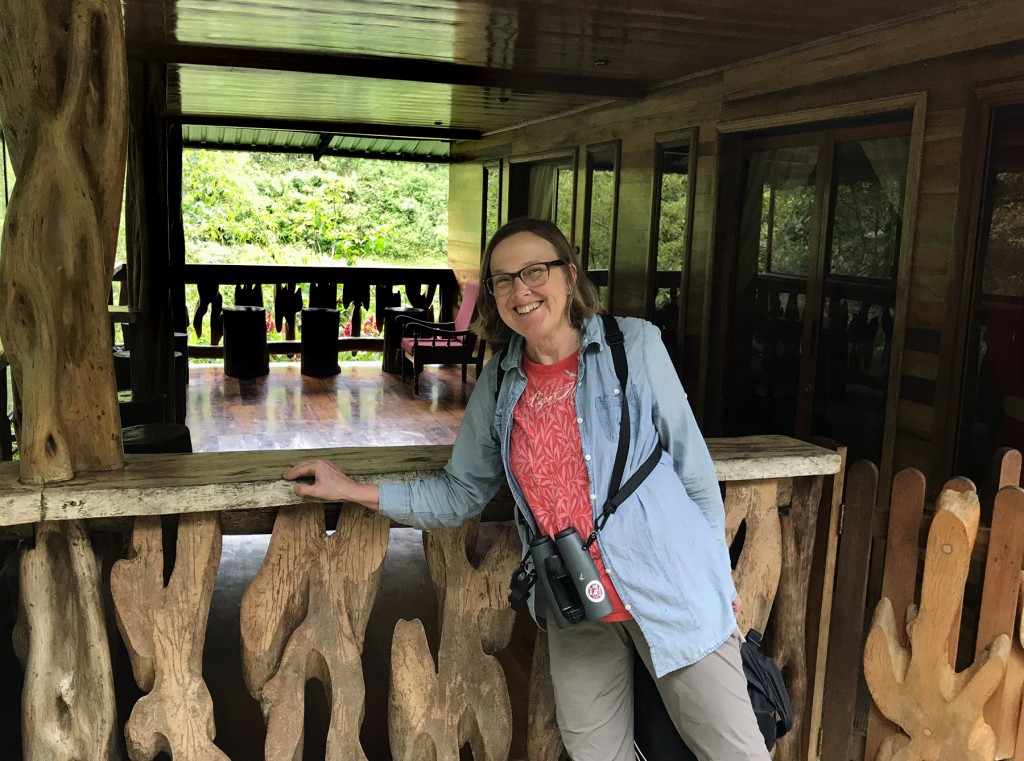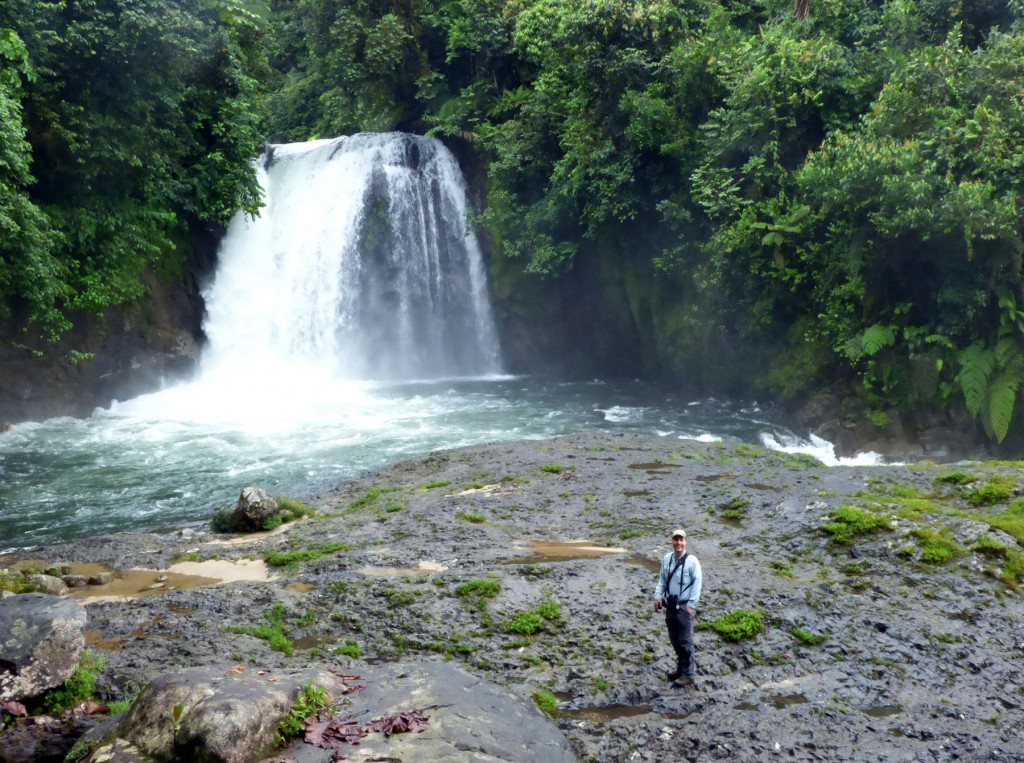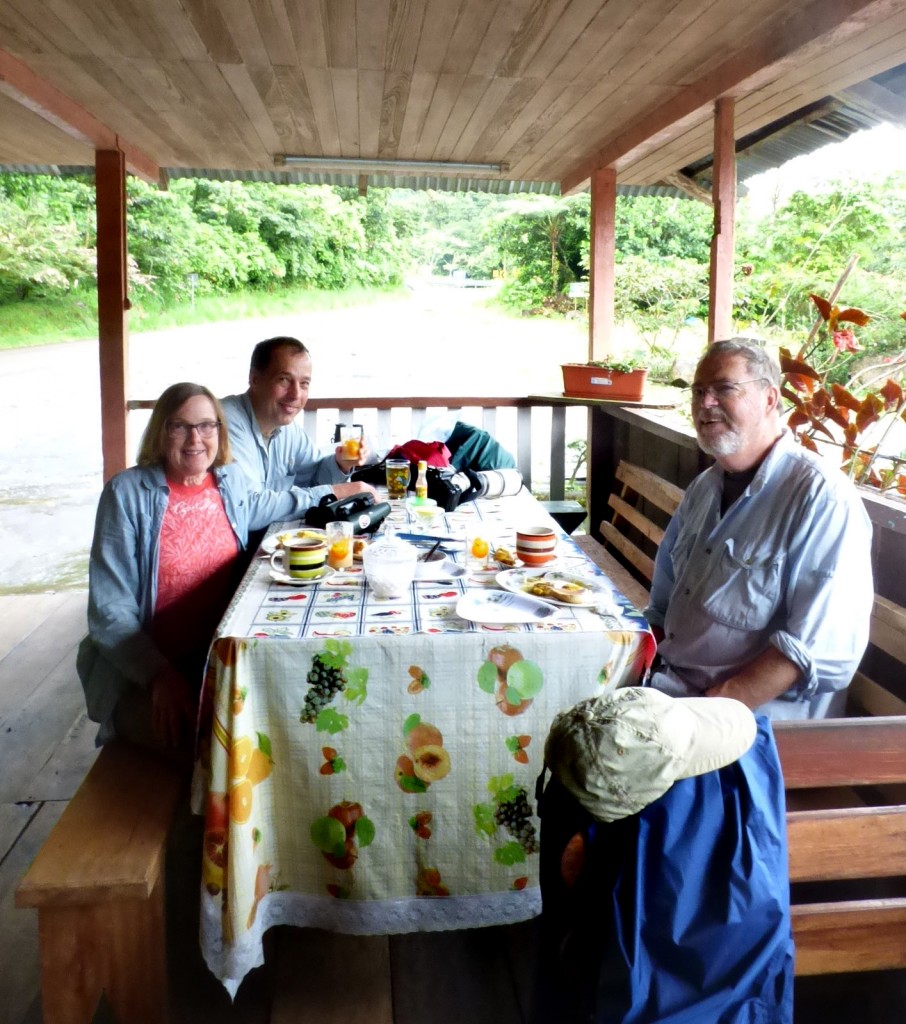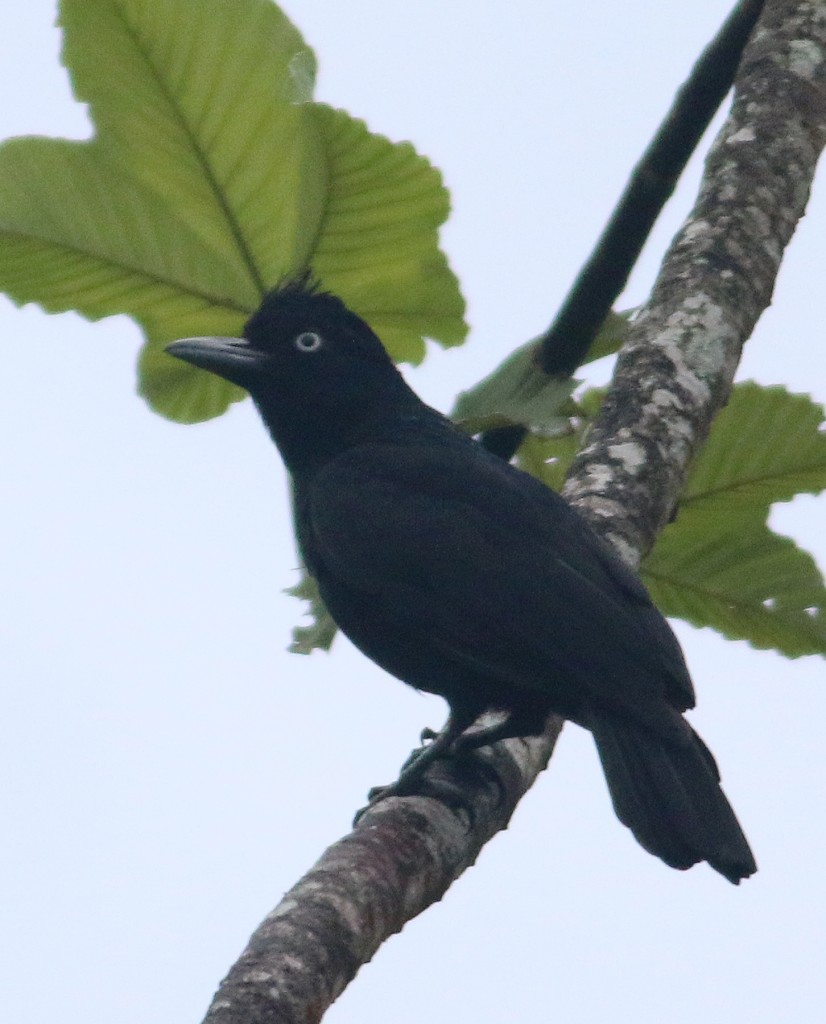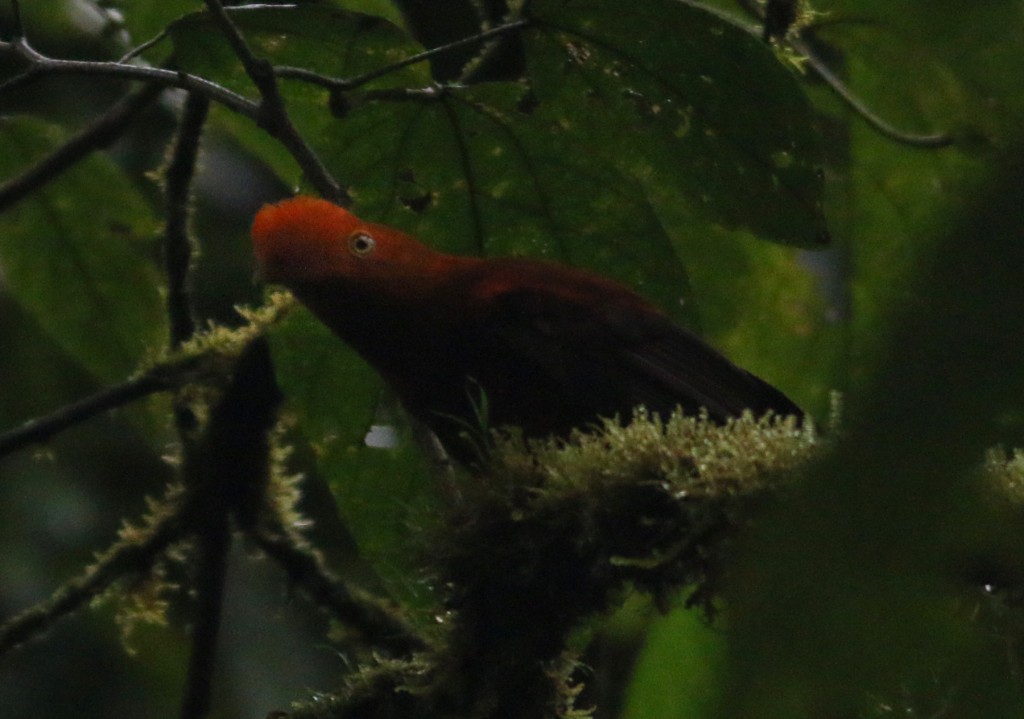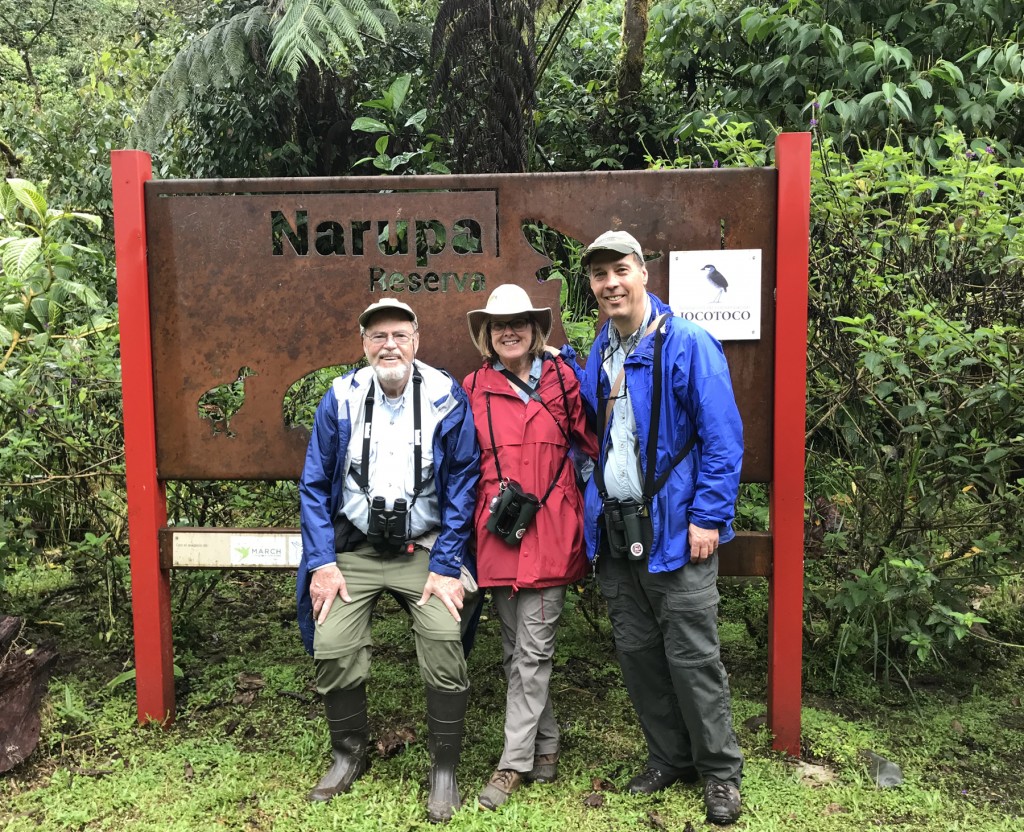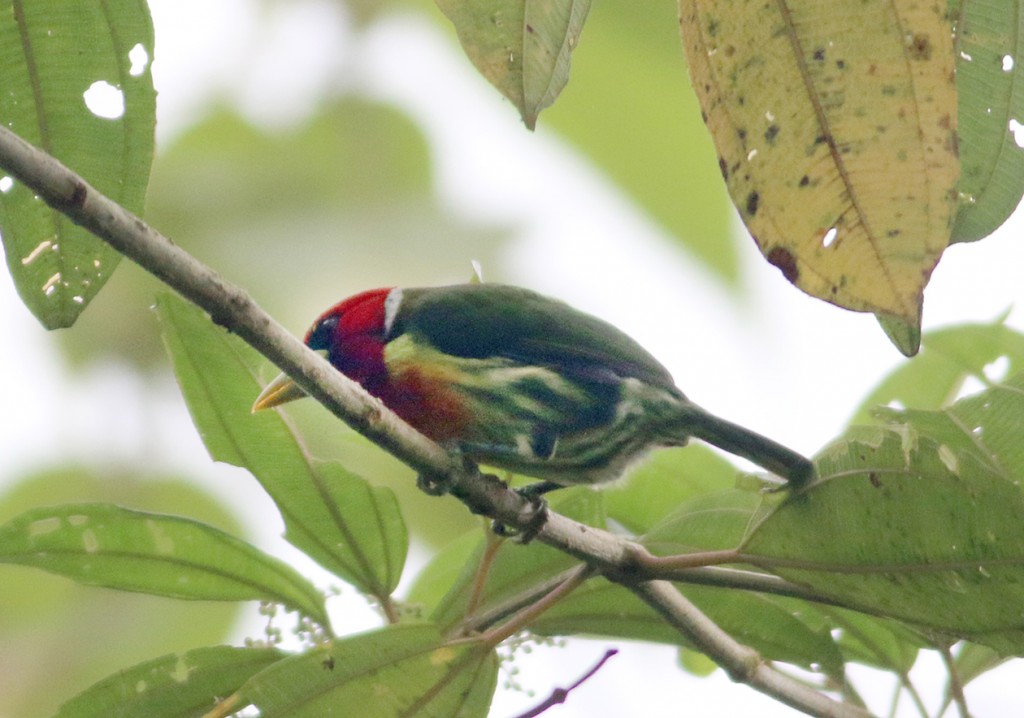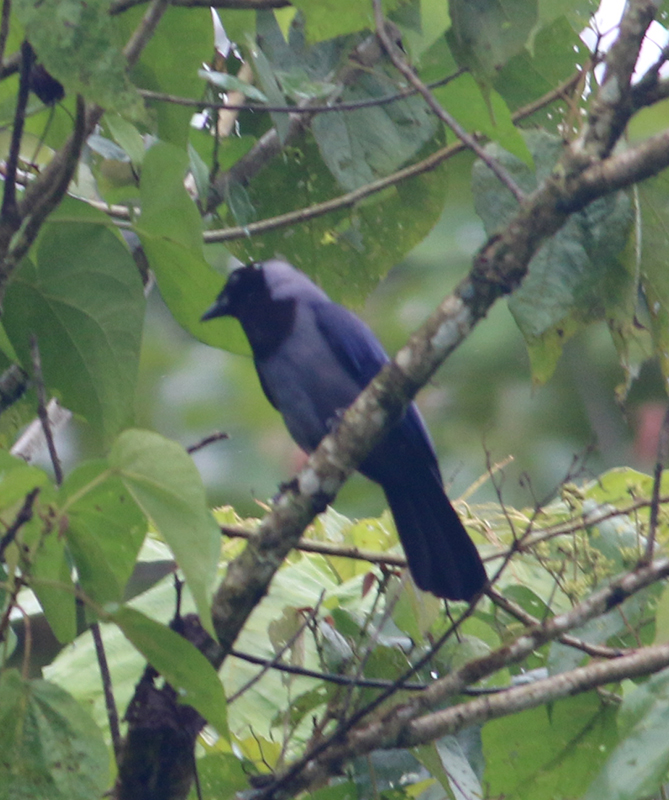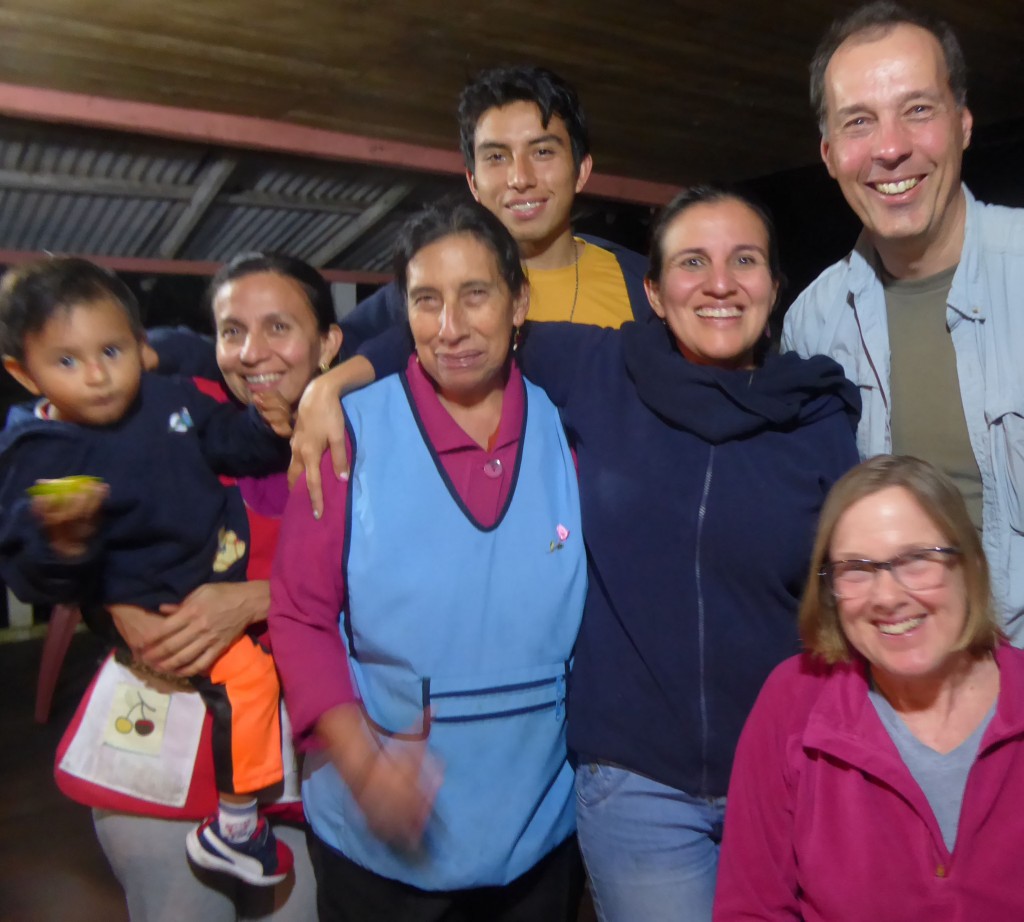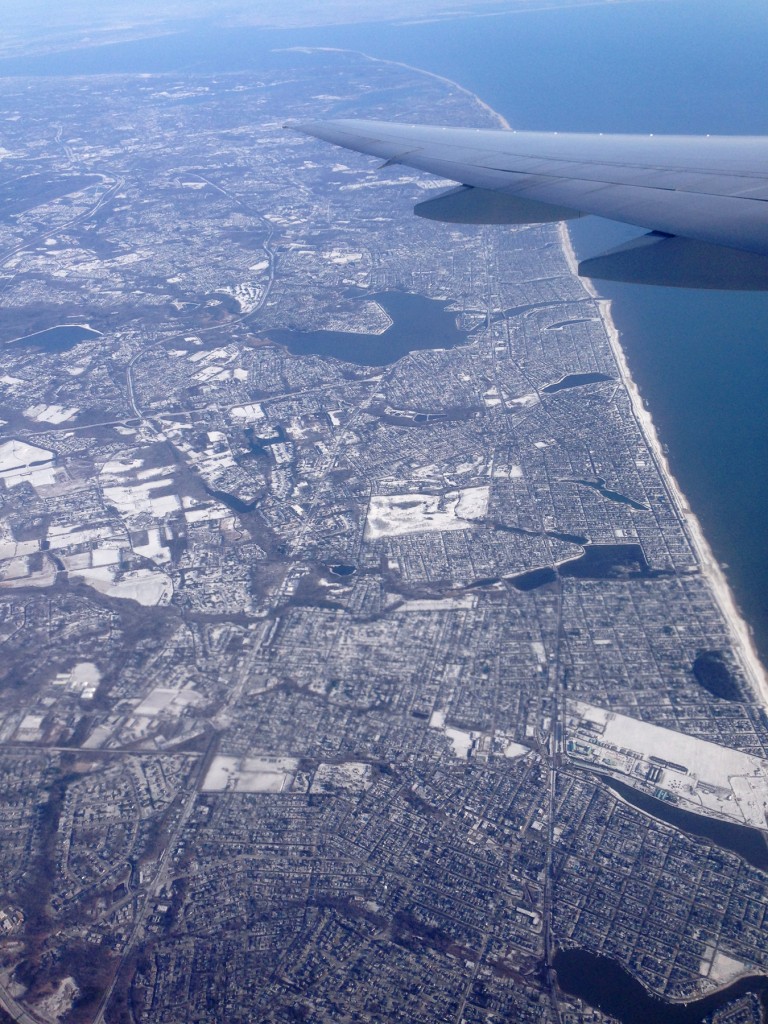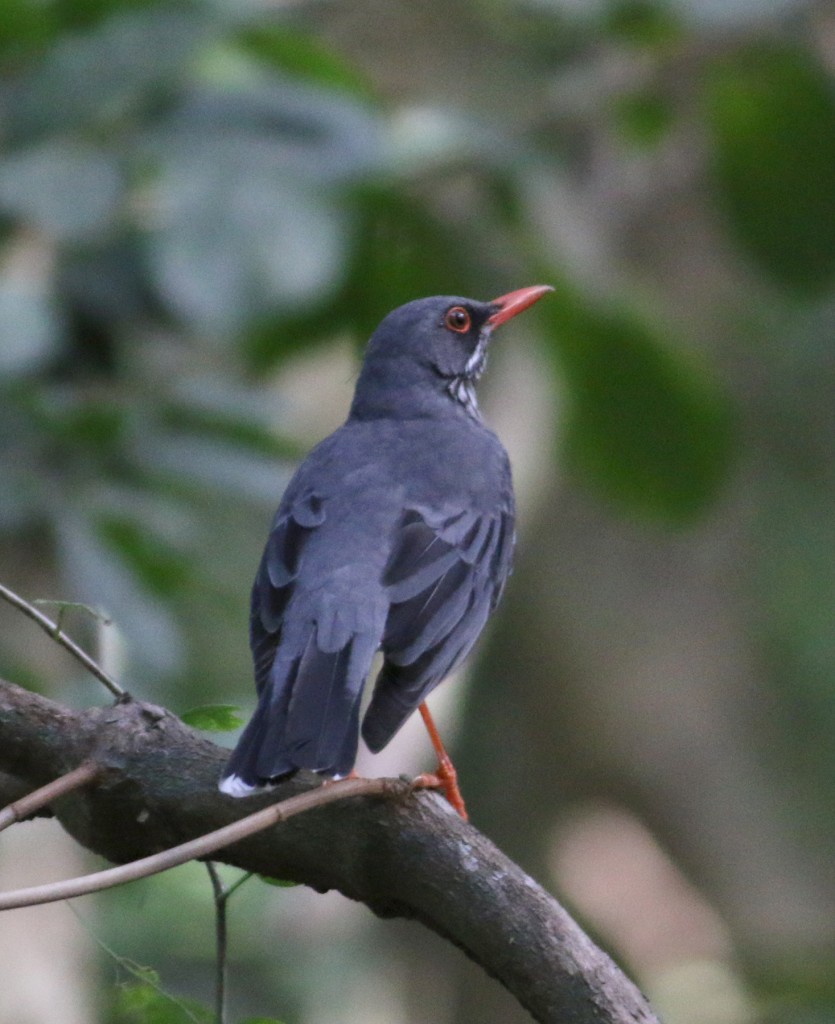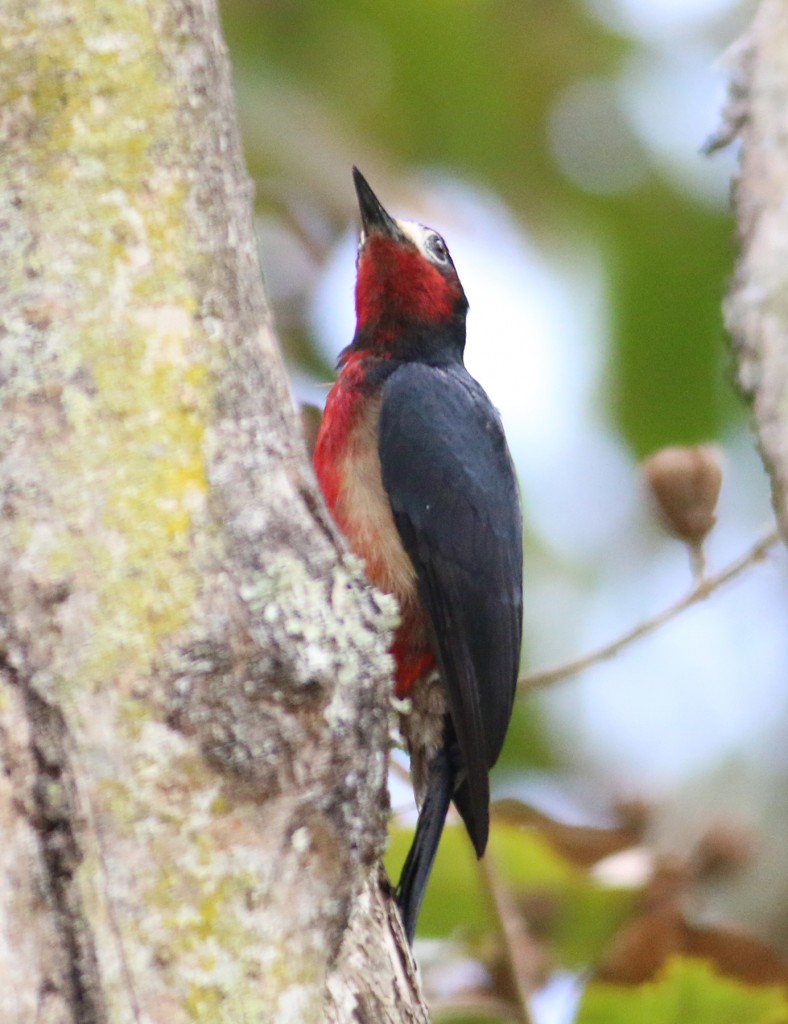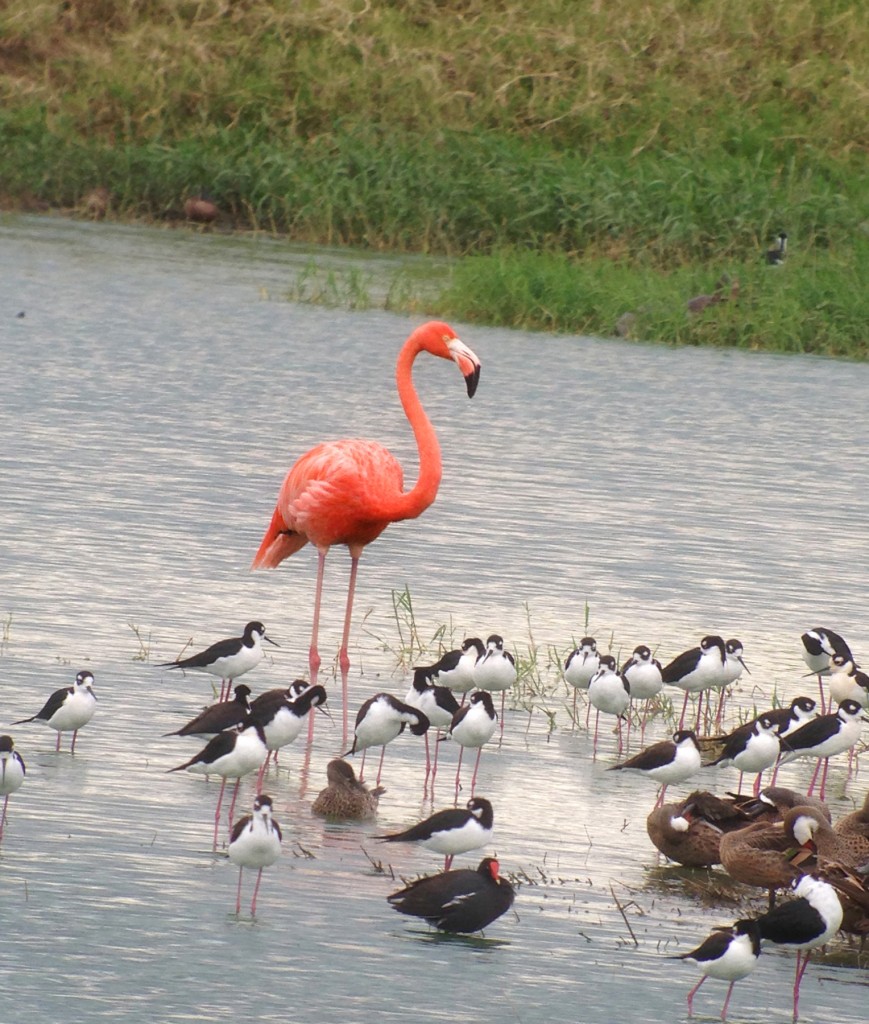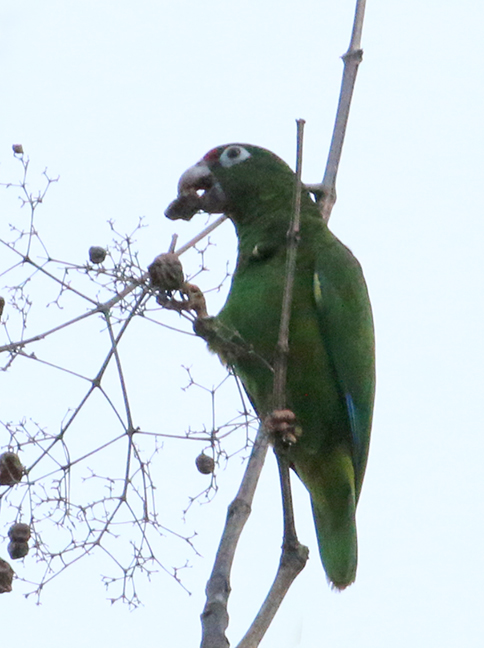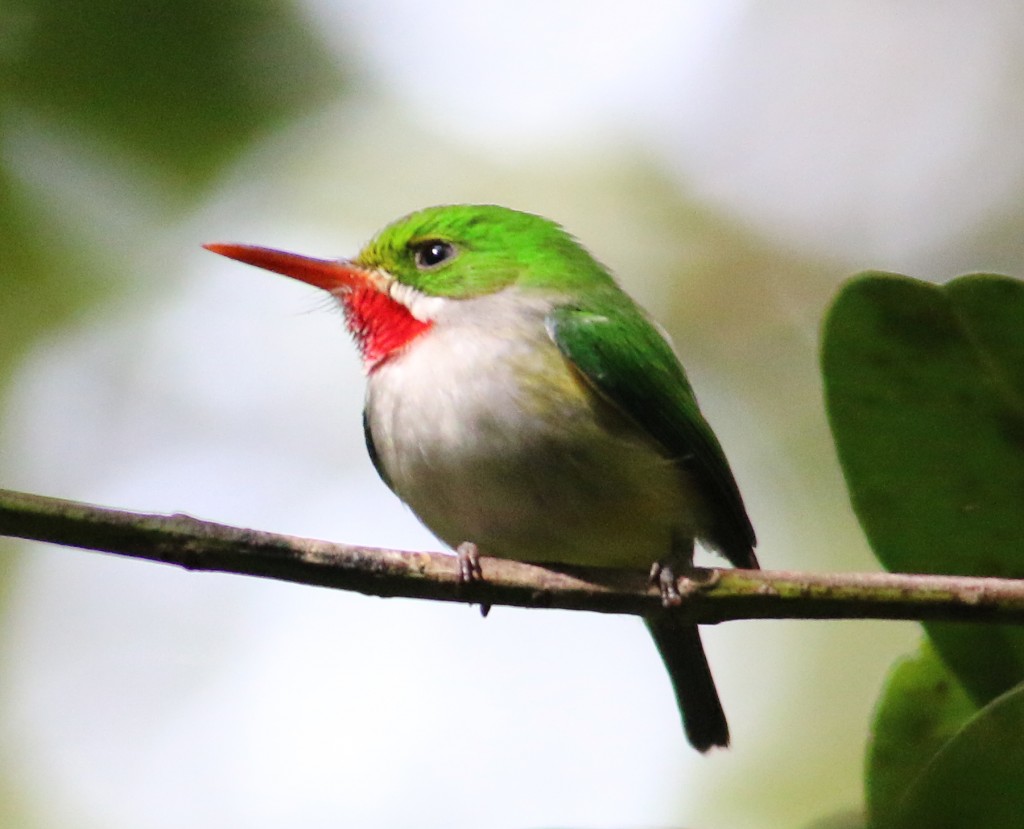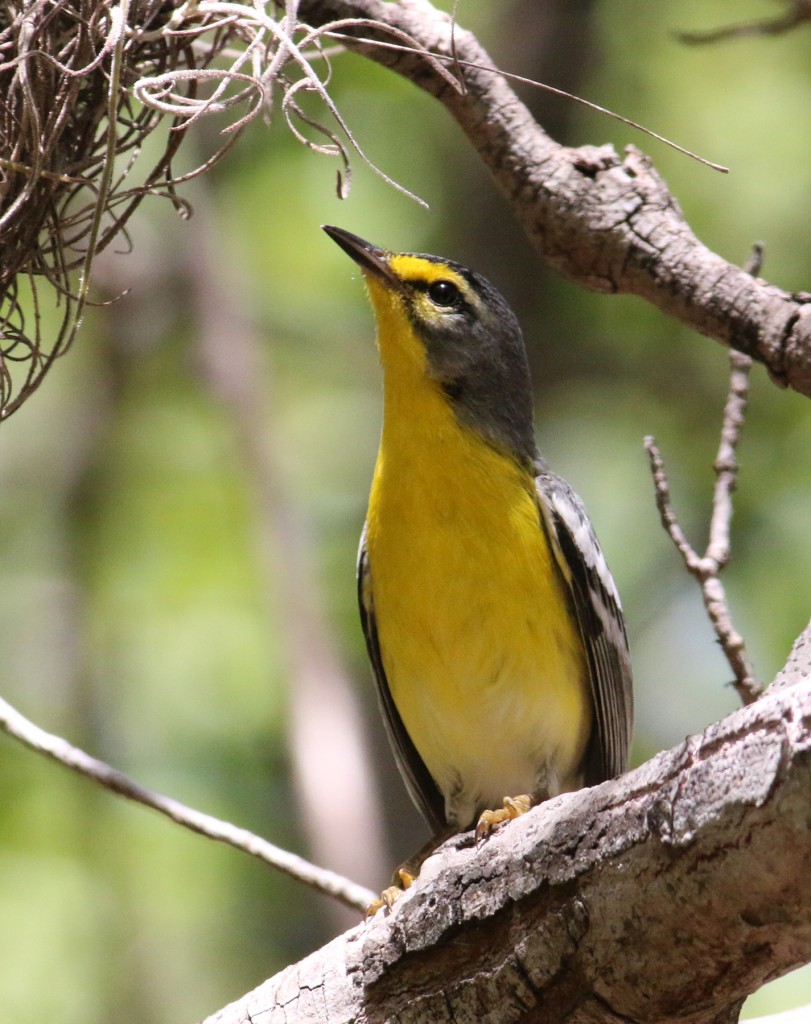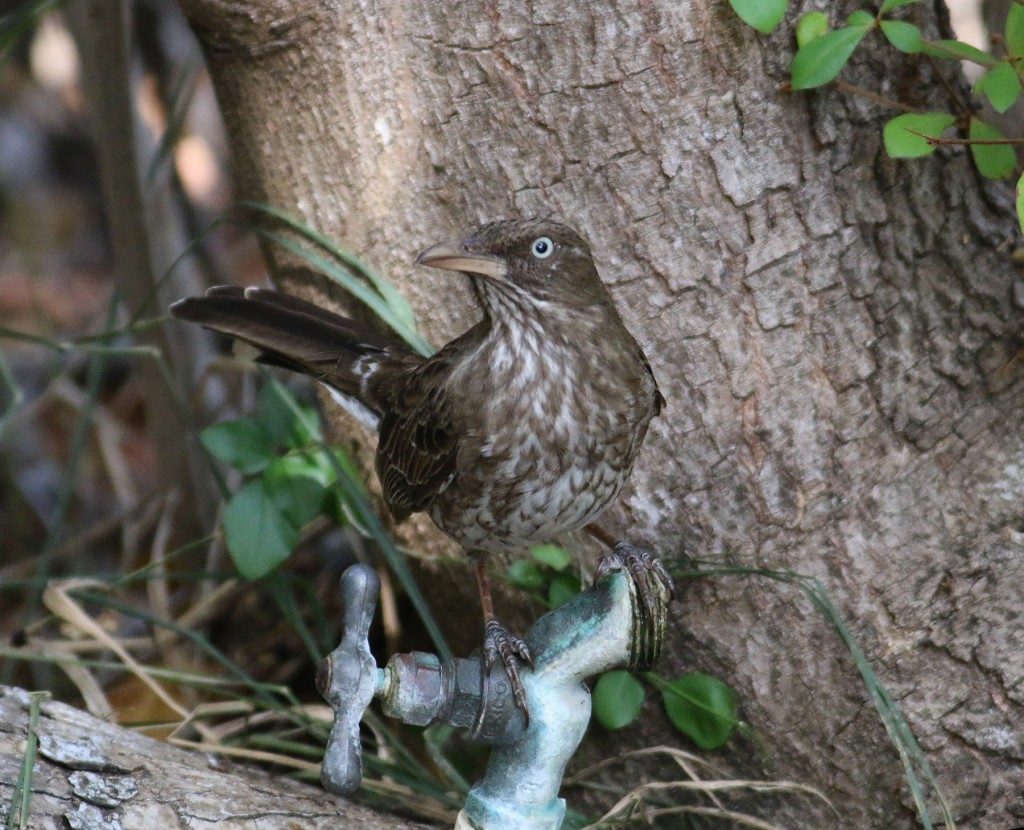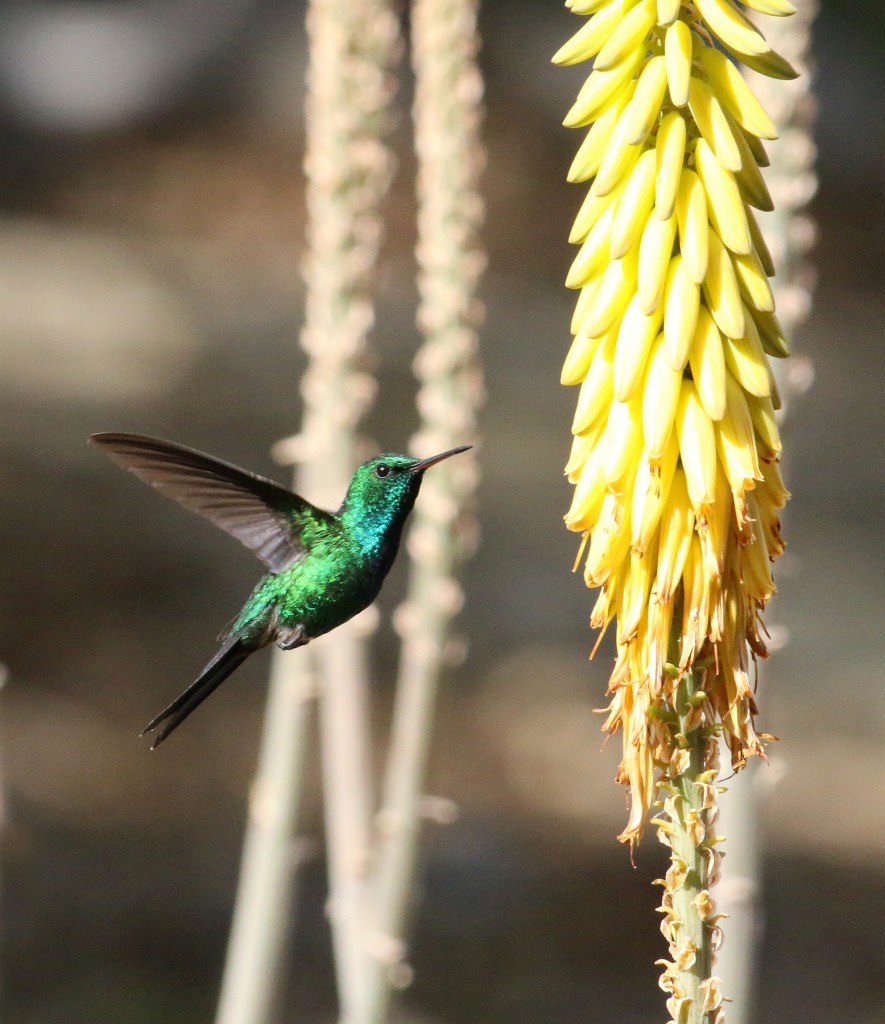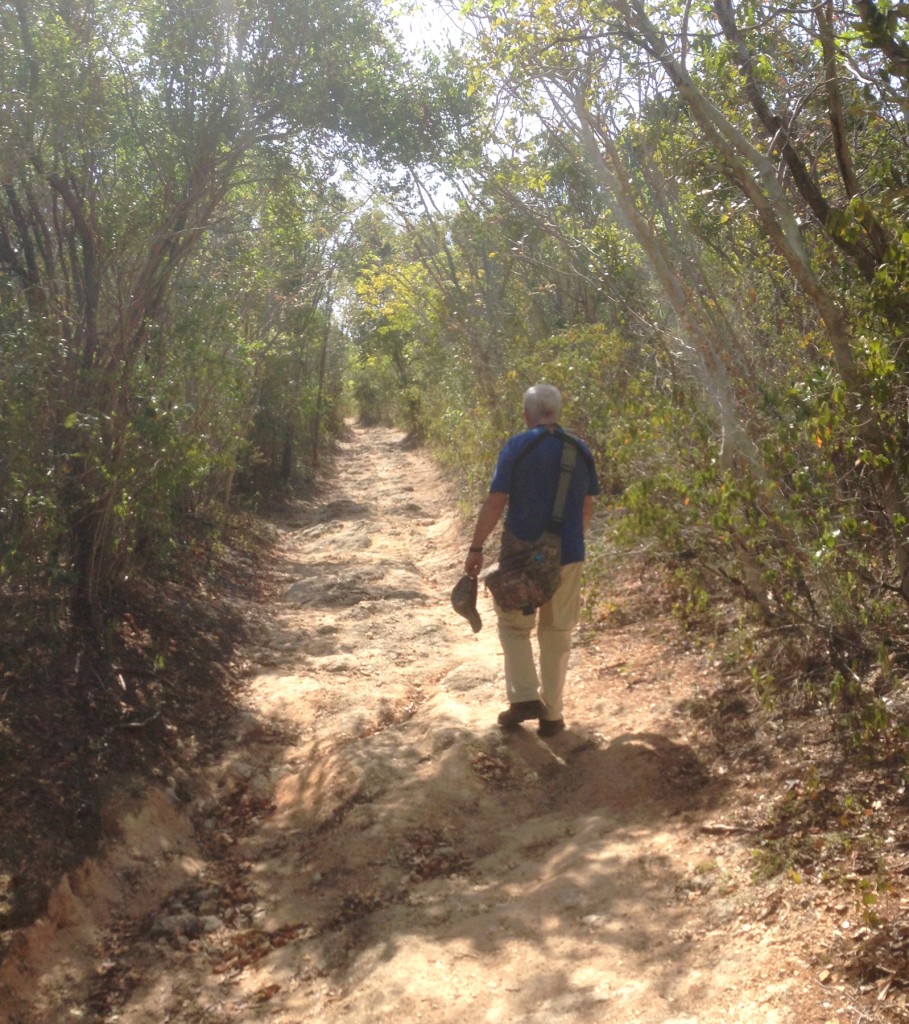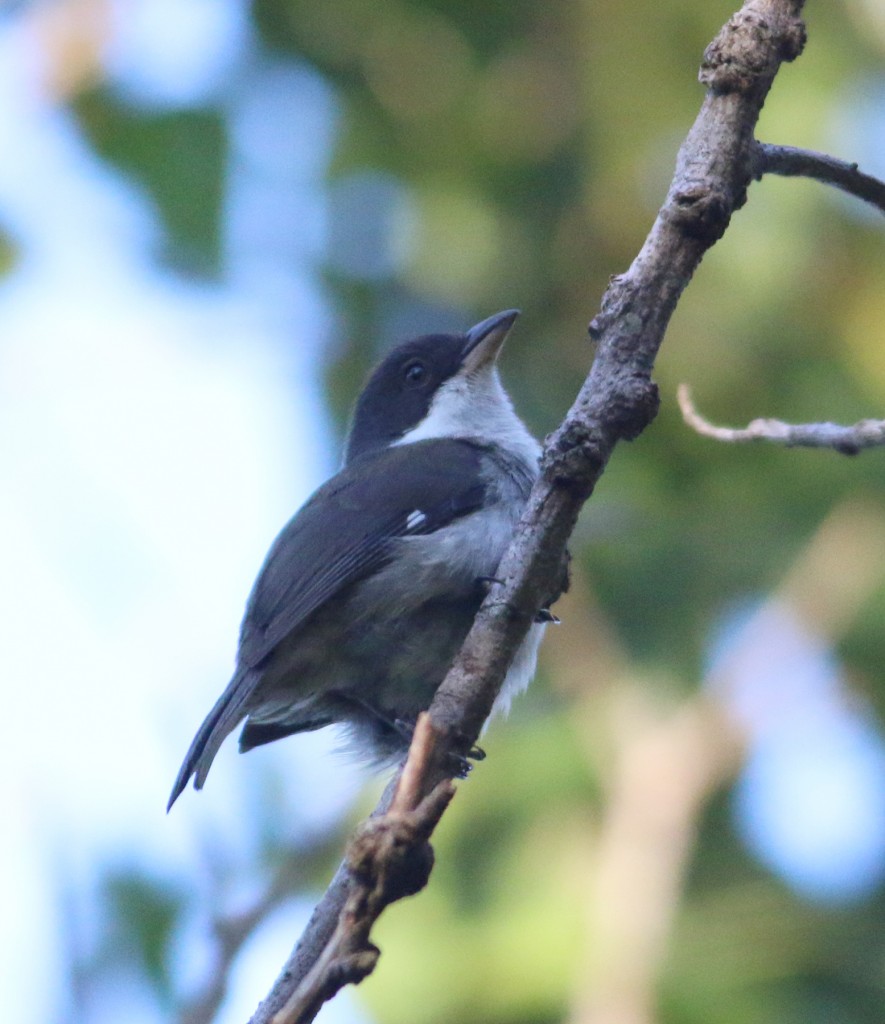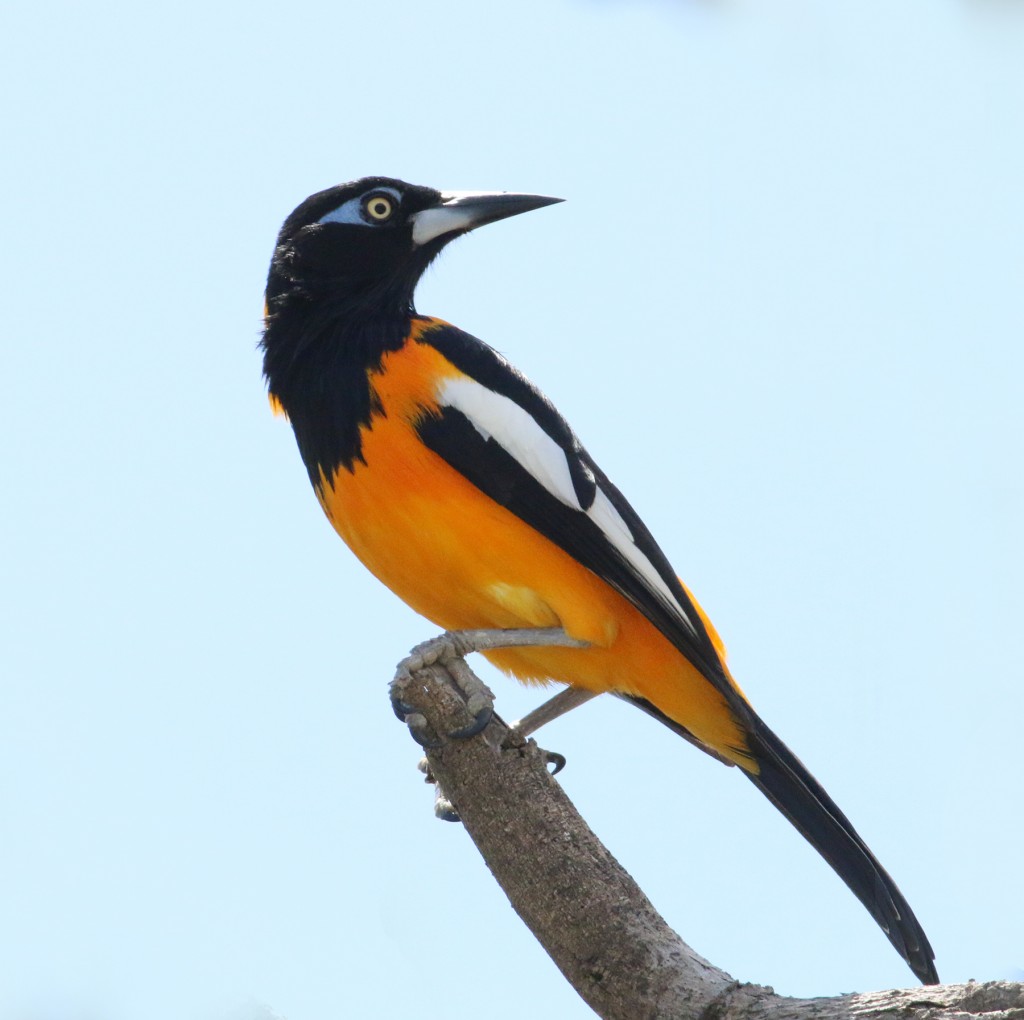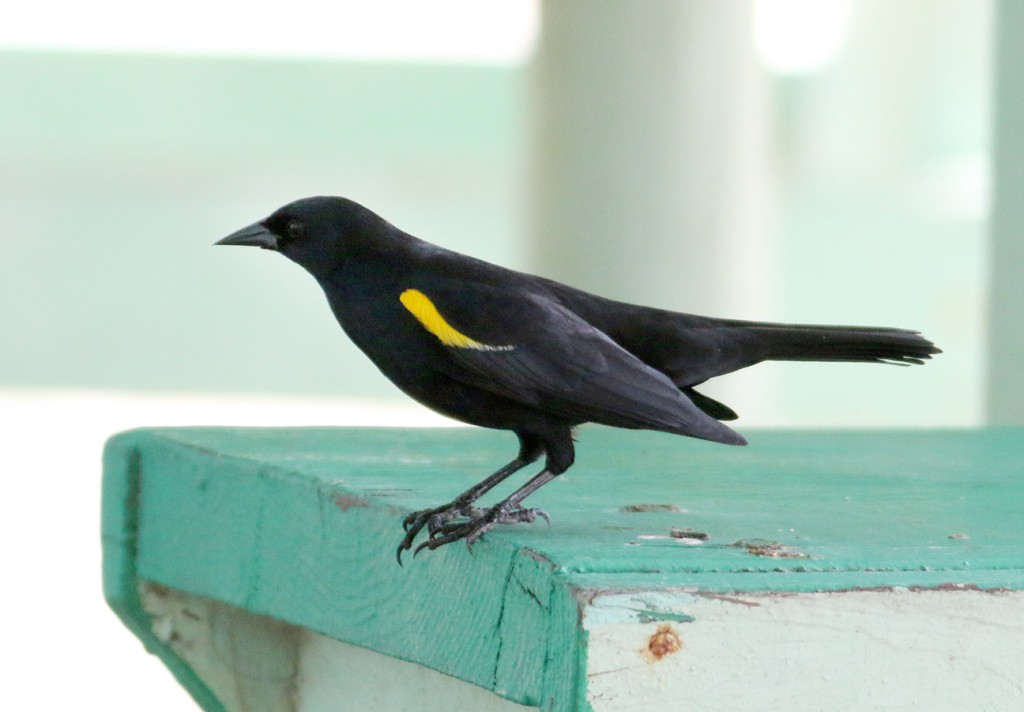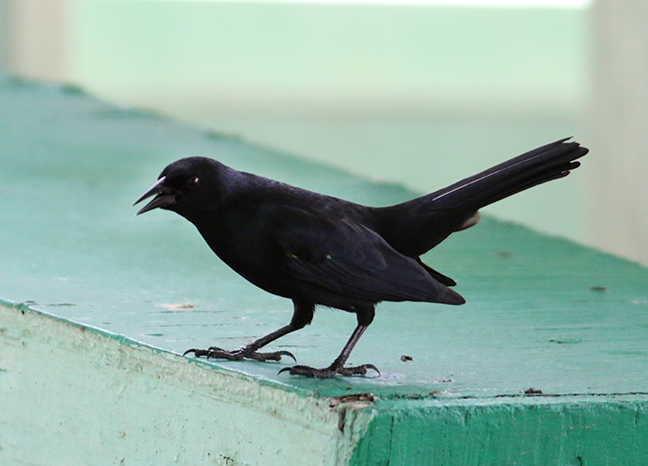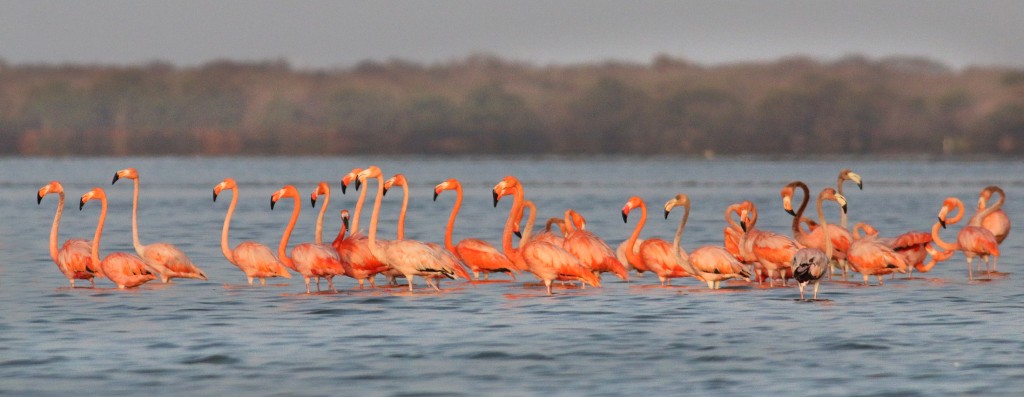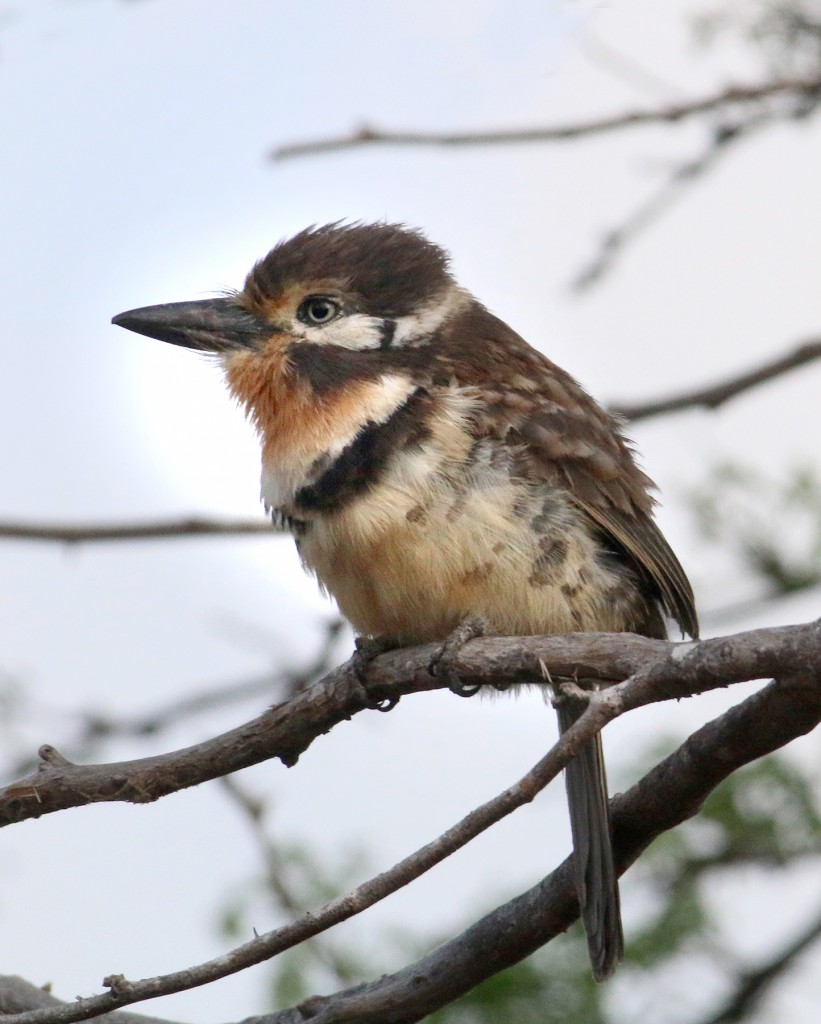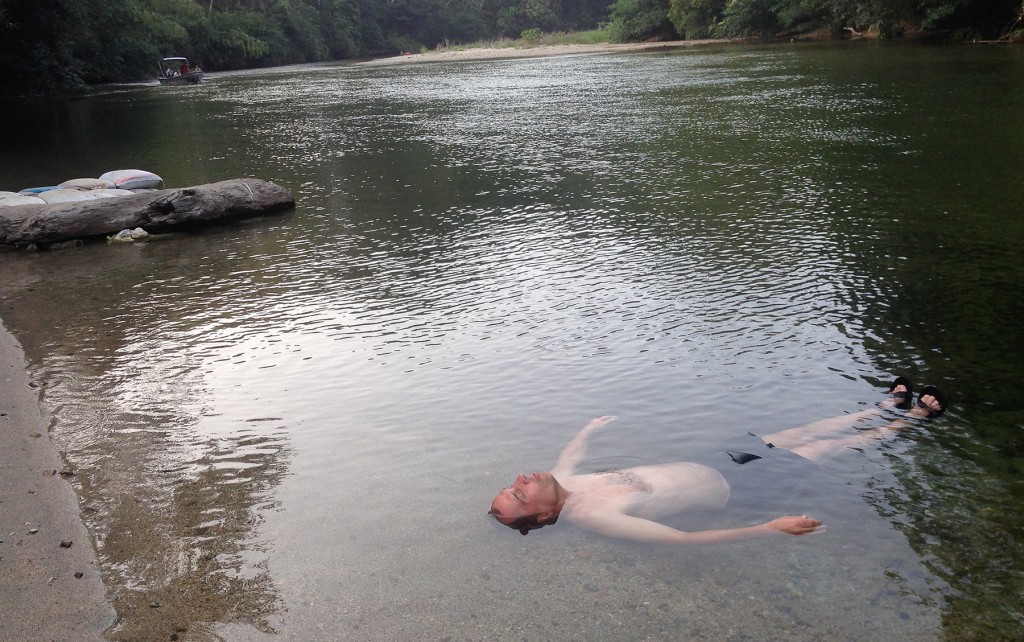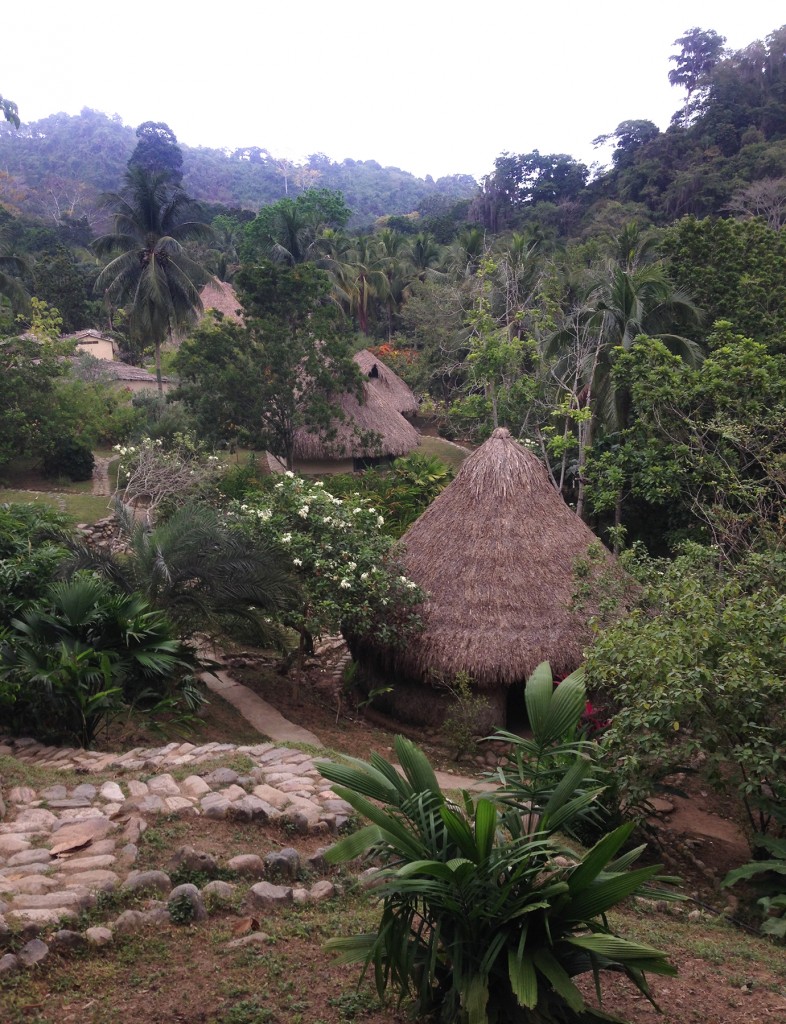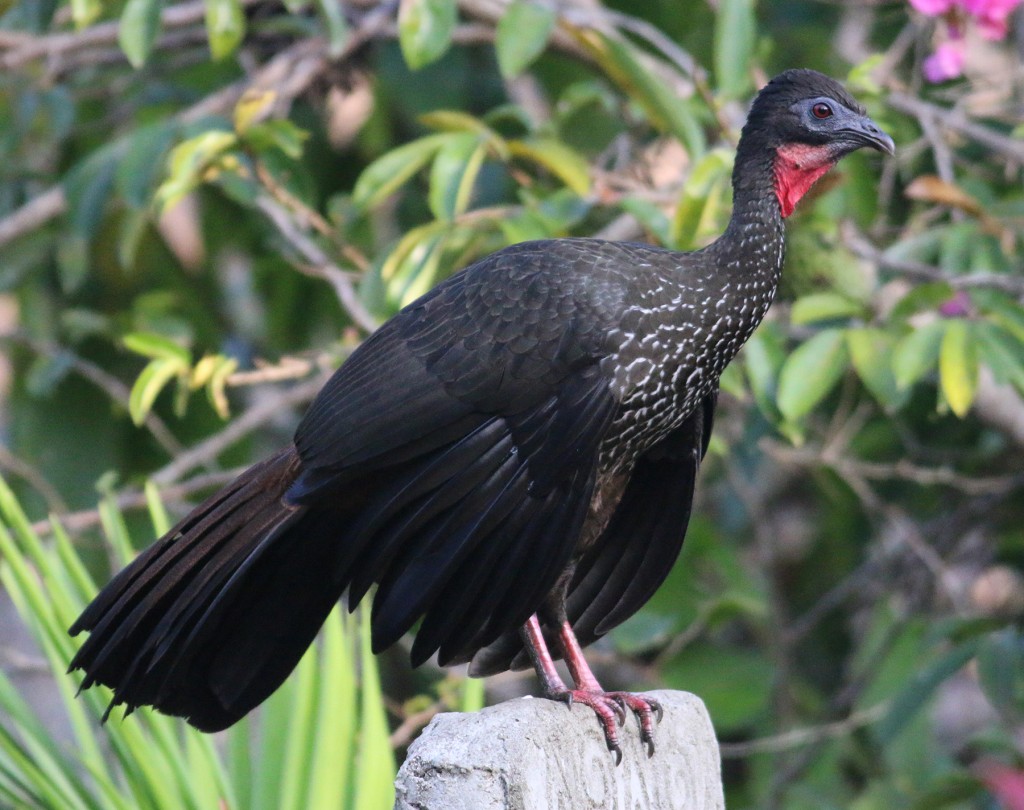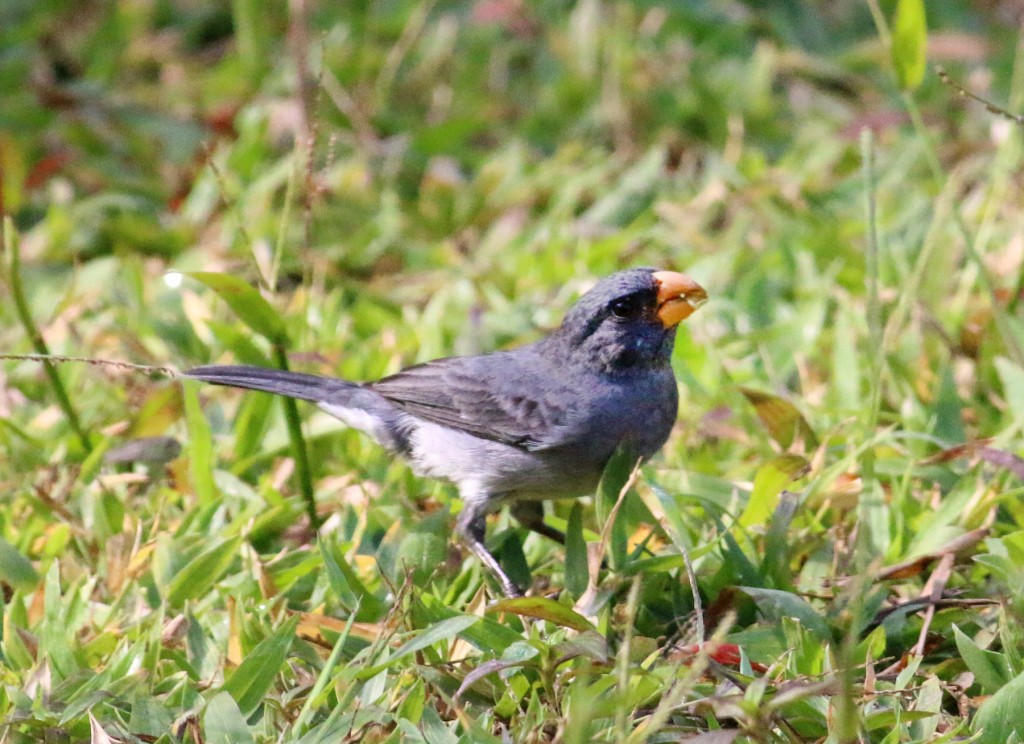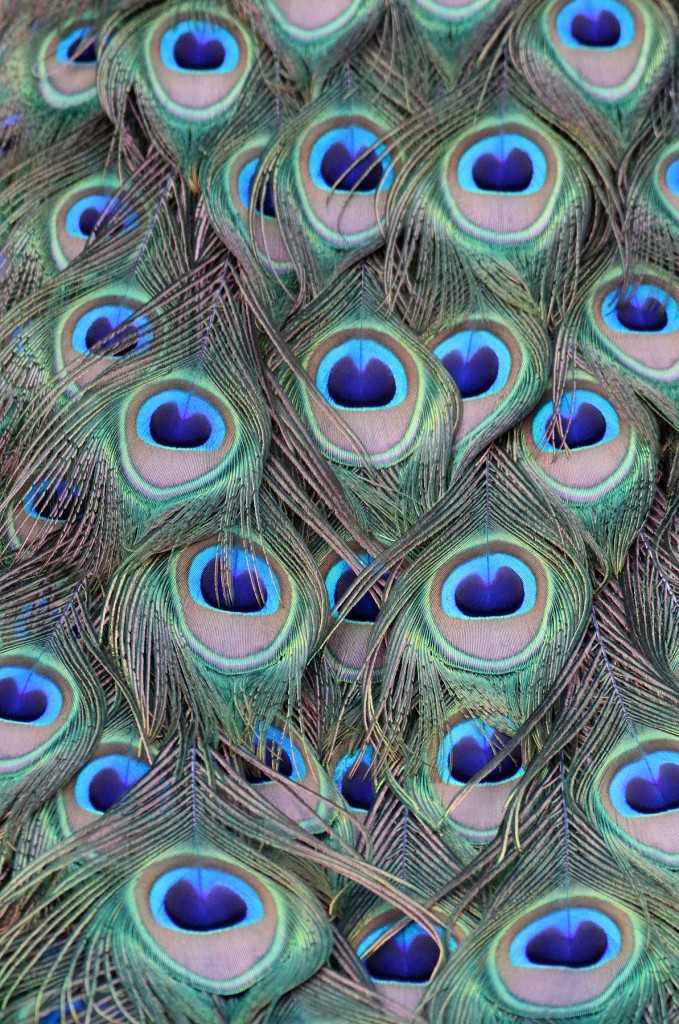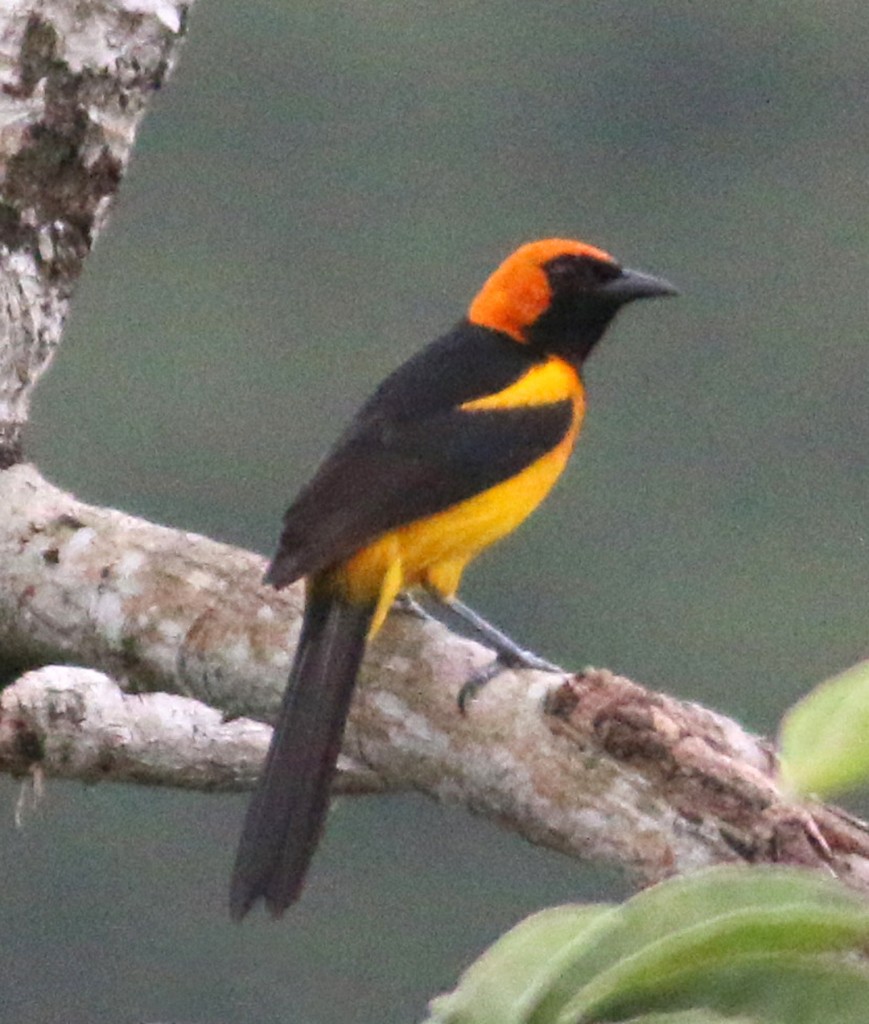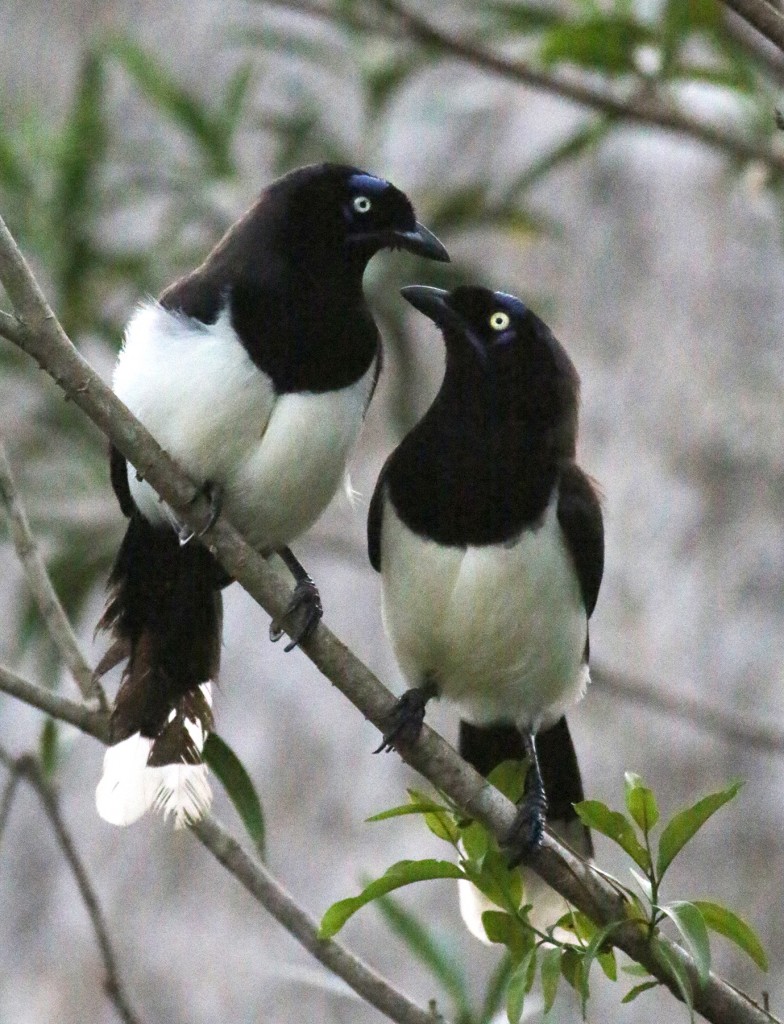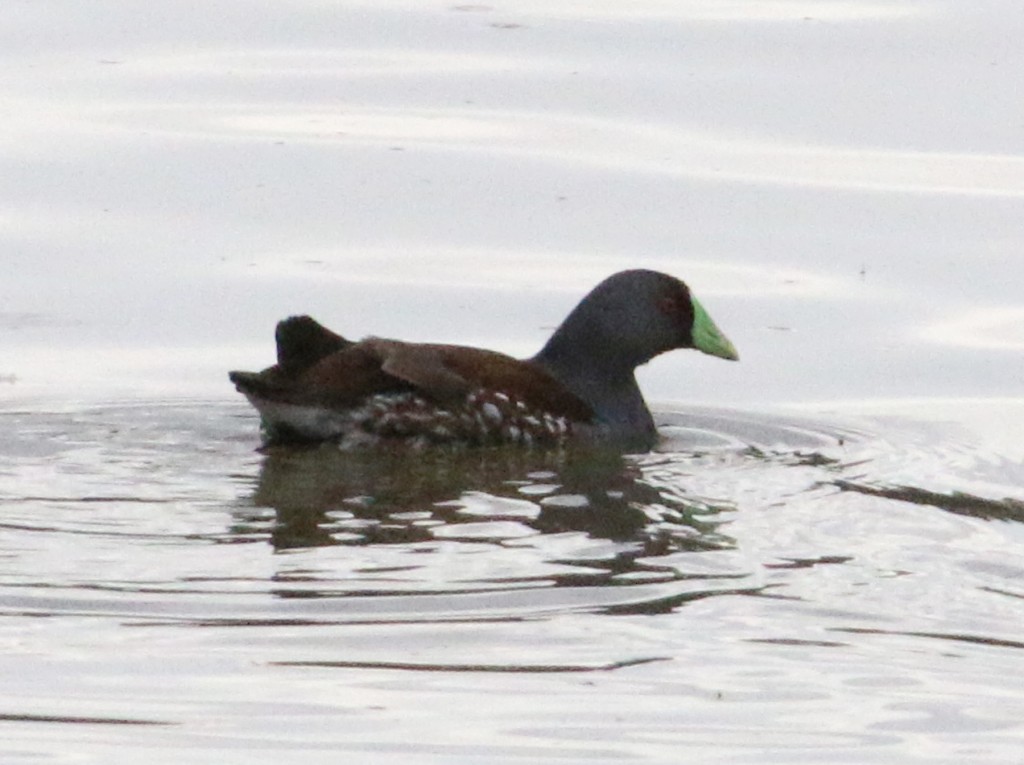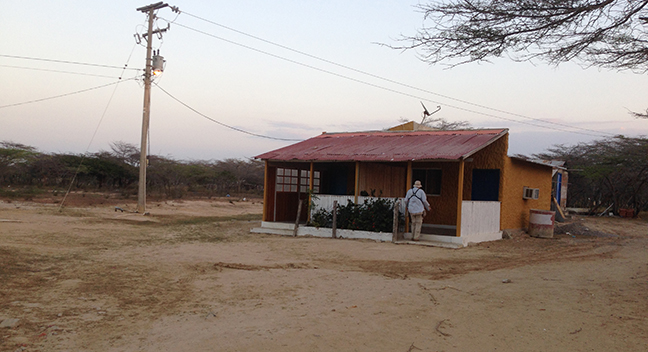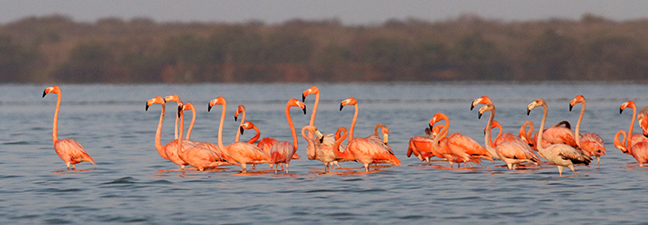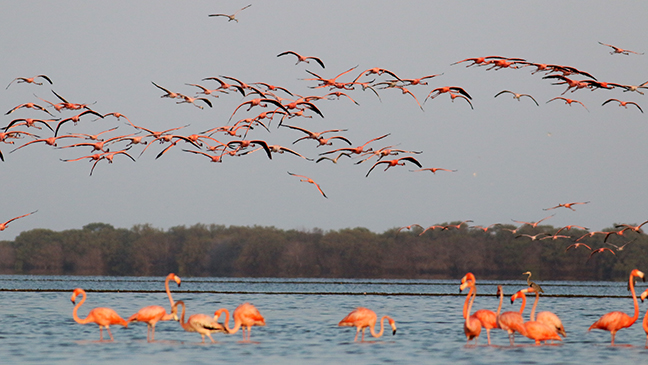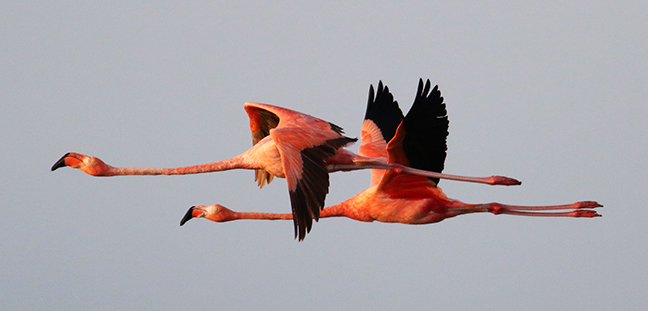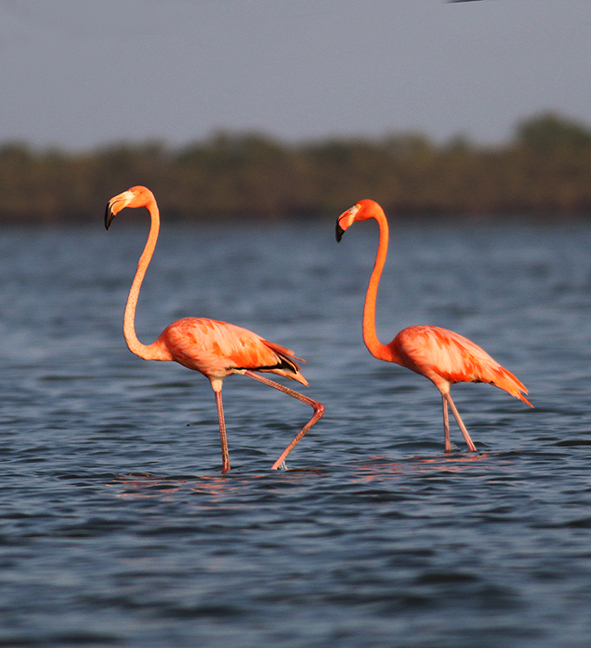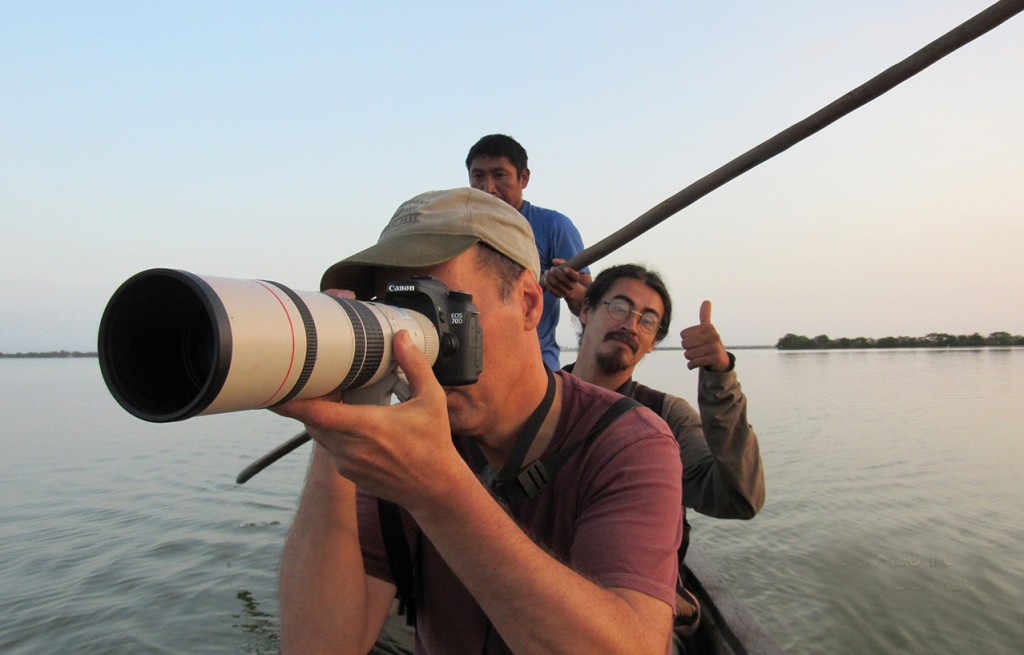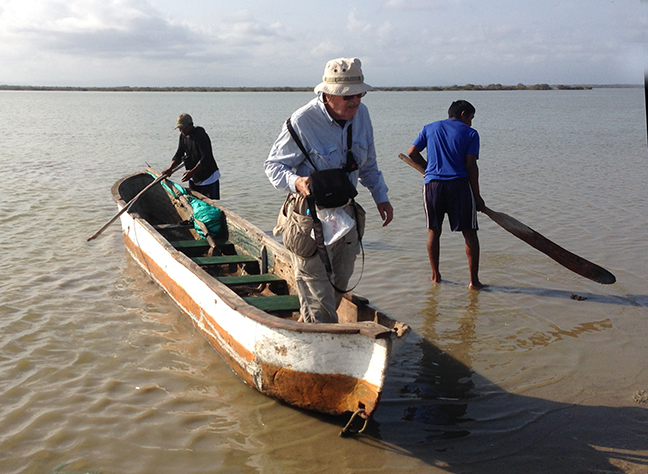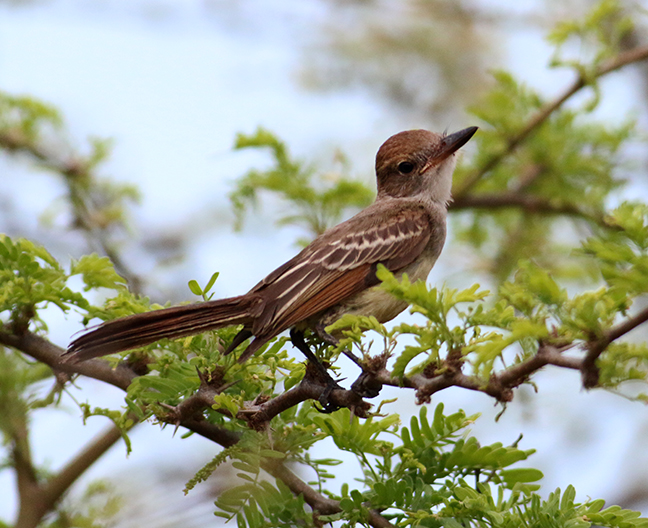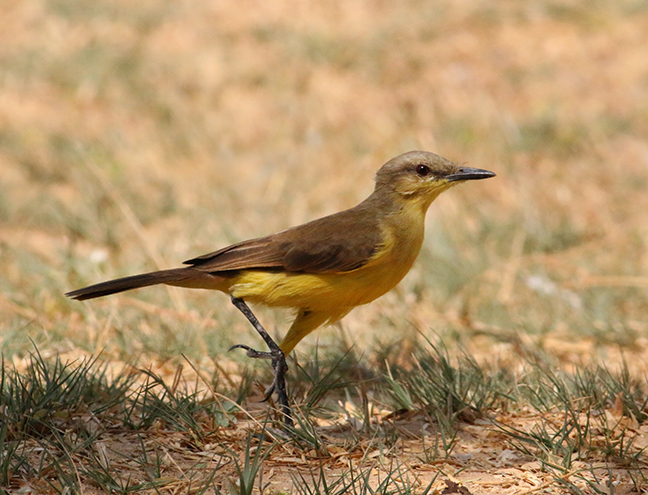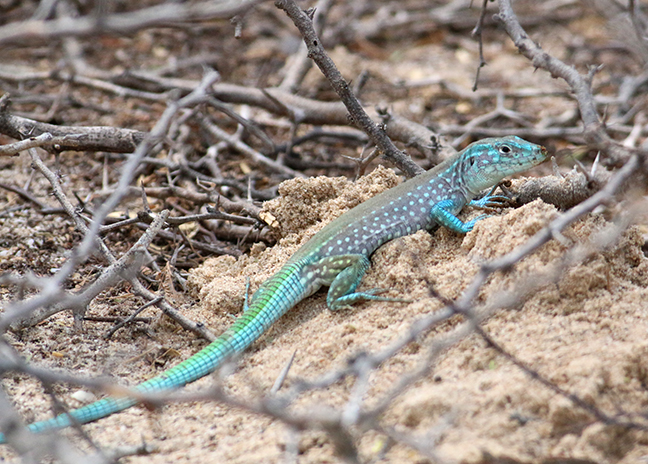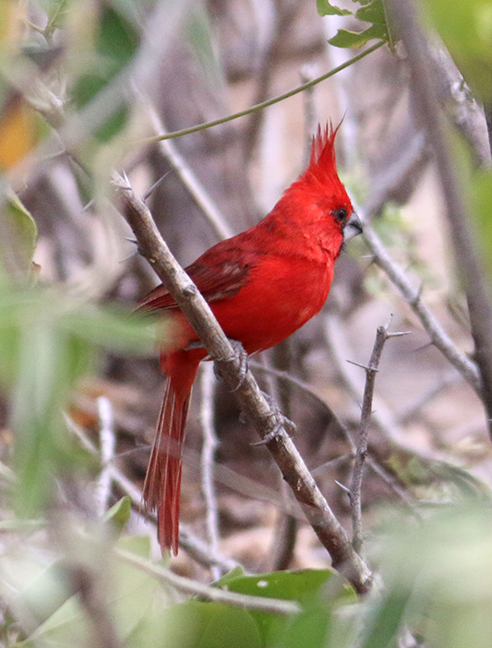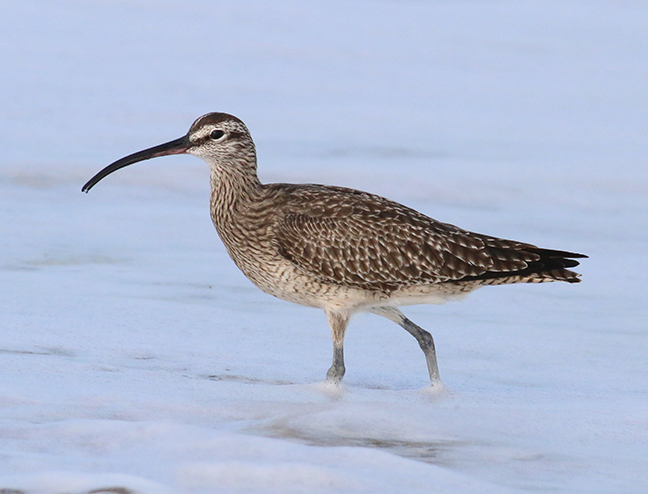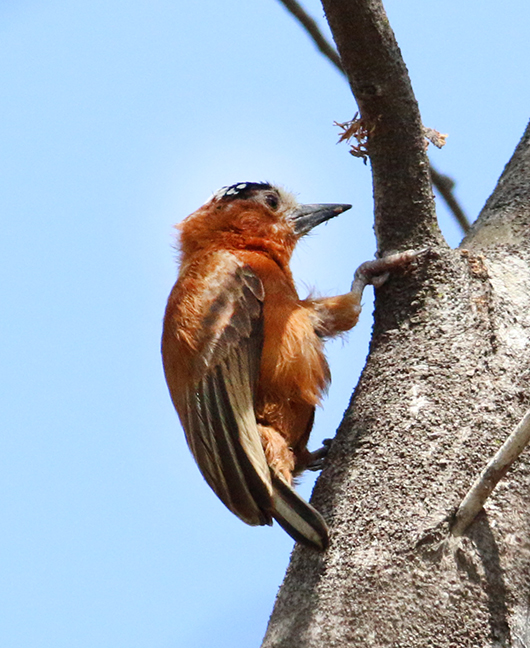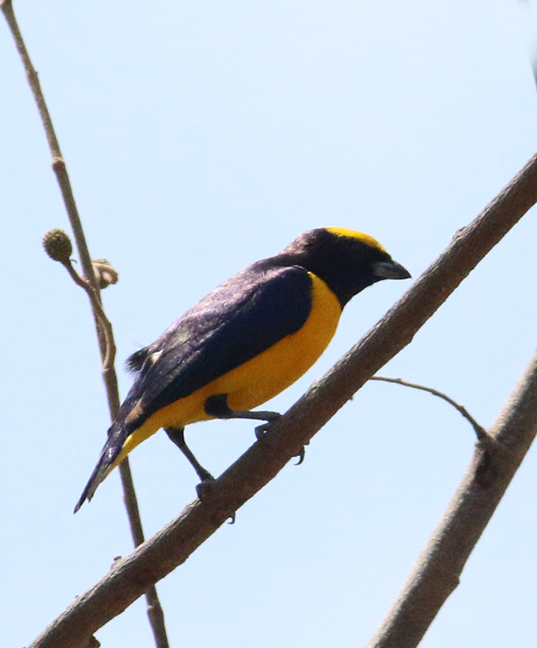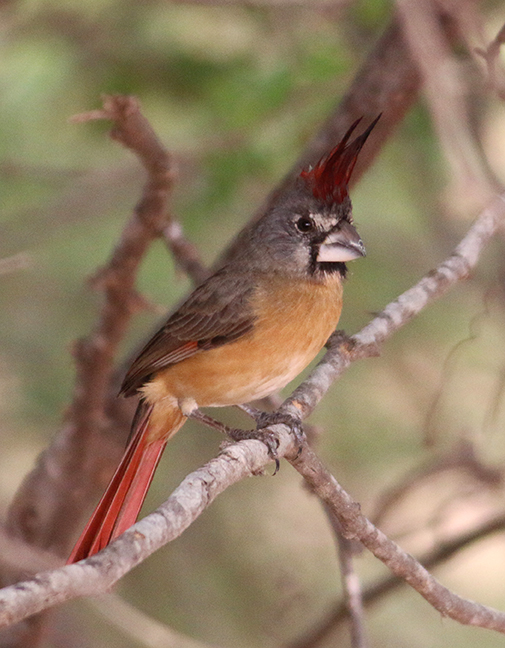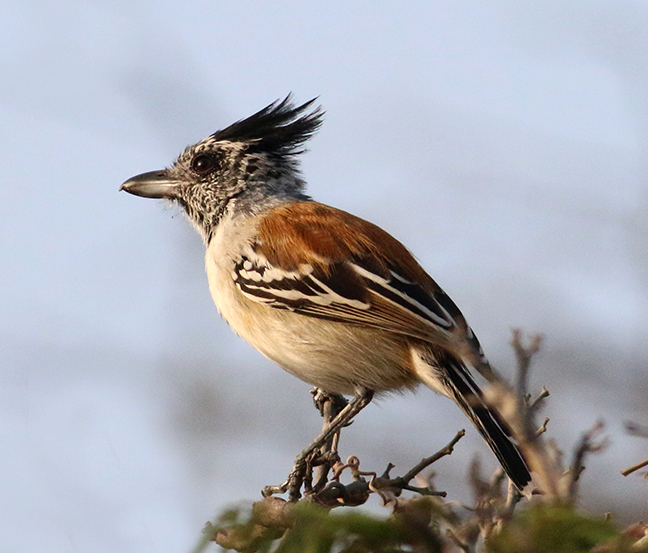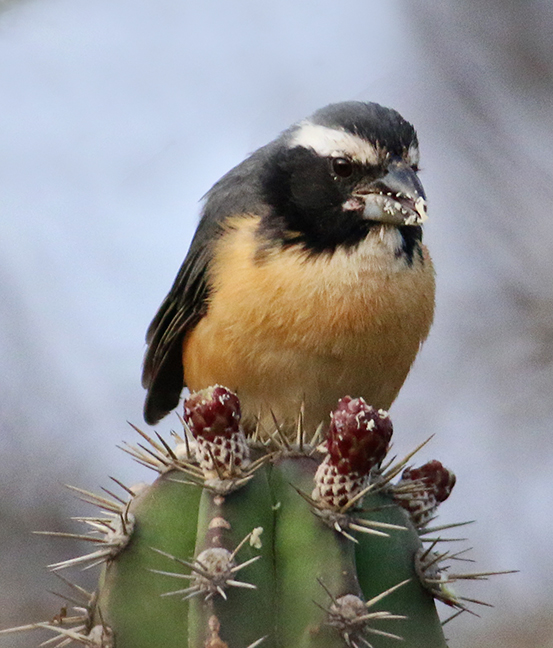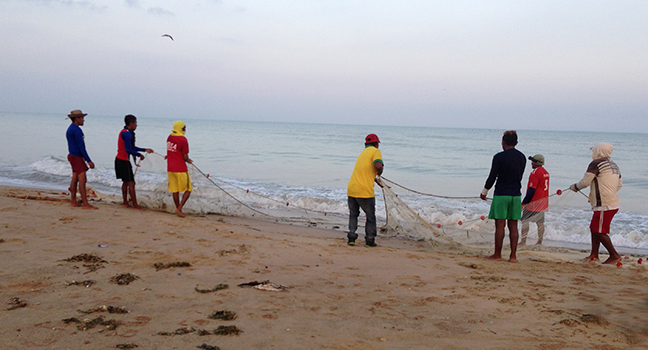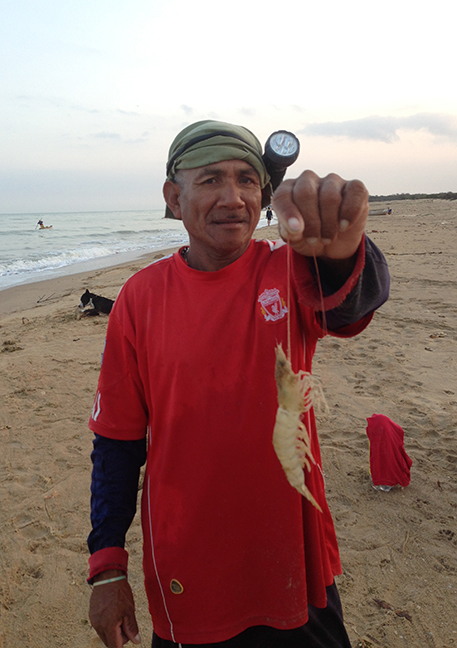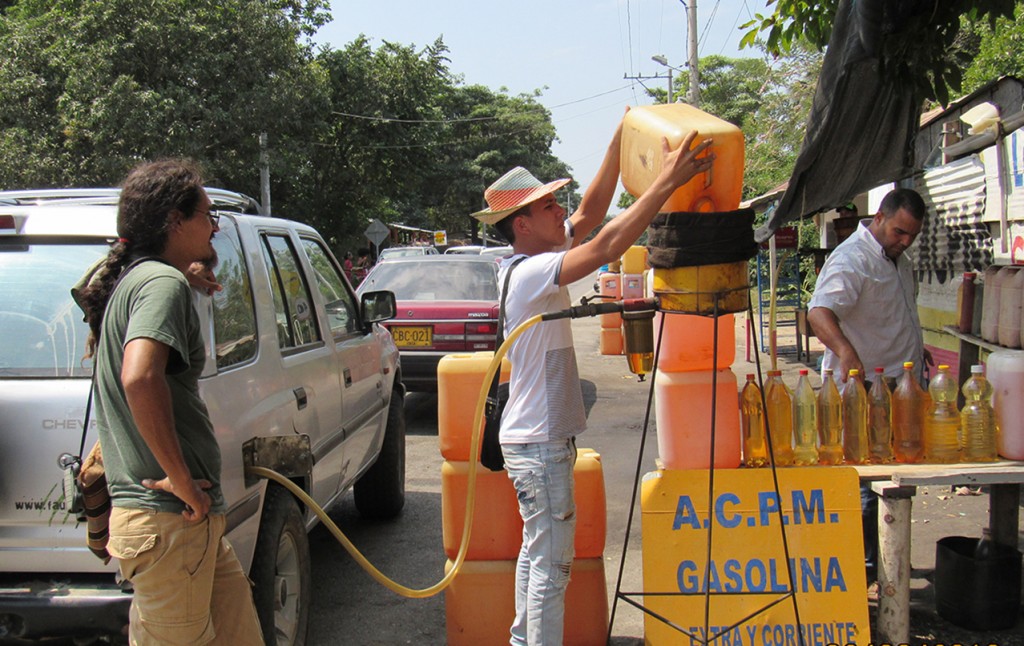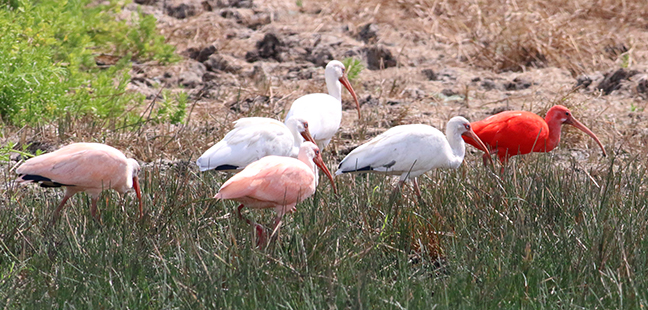This is part 2 of a two-part series on our recent birding trip to Puerto Rico. If you haven’t seen part 1 yet, please click here.
Day 4: The fourth day of this trip was designed to visit a different type of habitat. Laguna Cartagena NWR is a freshwater wetland just 30 minutes from Parguera that harbored a couple targets. As you enter the NWR from highway 110 onto a dirt access road, grasslands are on the left and a row of brush and trees are on the right. As we drove in, birds were flushing in front of the car. The first birds that we saw were Black-faced Grassquits and their Yellow-faced relatives. A quick look revealed a flock of introduced exotics, Orange-cheeked Waxbills, and birds that resembled Grasshopper Sparrows. Further investigation suggested that they were instead non-breeding Red Bishops, yet another exotic. A flock of Smooth-billed Anis, including a young bird, was a nice bonus. After pulling into the parking area and setting up our scopes at the first pond, I spotted what was for me the bird of the trip, a Masked Duck. We had been hoping to see this diminutive and secretive duck on birding trips to other countries, but always came up empty, so this sighting was particularly rewarding. The wetlands here are becoming filled in and overgrown, with only a few areas of large open water, so it was important to bird slowly along the trail, checking the openings for feeding waterfowl. At one point we spotted a group of ducks on shore, and when the scopes were set up, we saw the tell-tale appearance of a dozen or so West Indian Whistling-ducks with their long legs and neck and streaked sides, completing the trio of our major duck targets of the trip. Other nice birds seen here were Purple Gallinules, Tri-colored Heron, and our only two Ospreys of the trip. On the way back to our hotel, we drove through some agricultural fields in Lajas, and there picked up our third introduced species of the trip (and the day), with a flock of Bronze Mannikins.
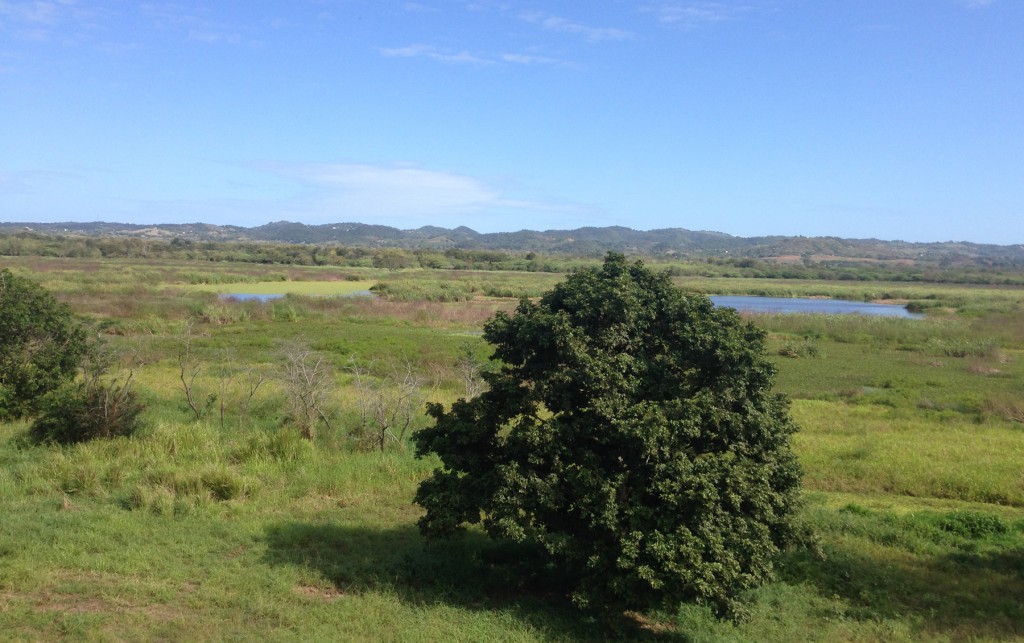
The view of Laguna Cartagena wetlands from the tower. Ponds were scattered and typically small this time of year.
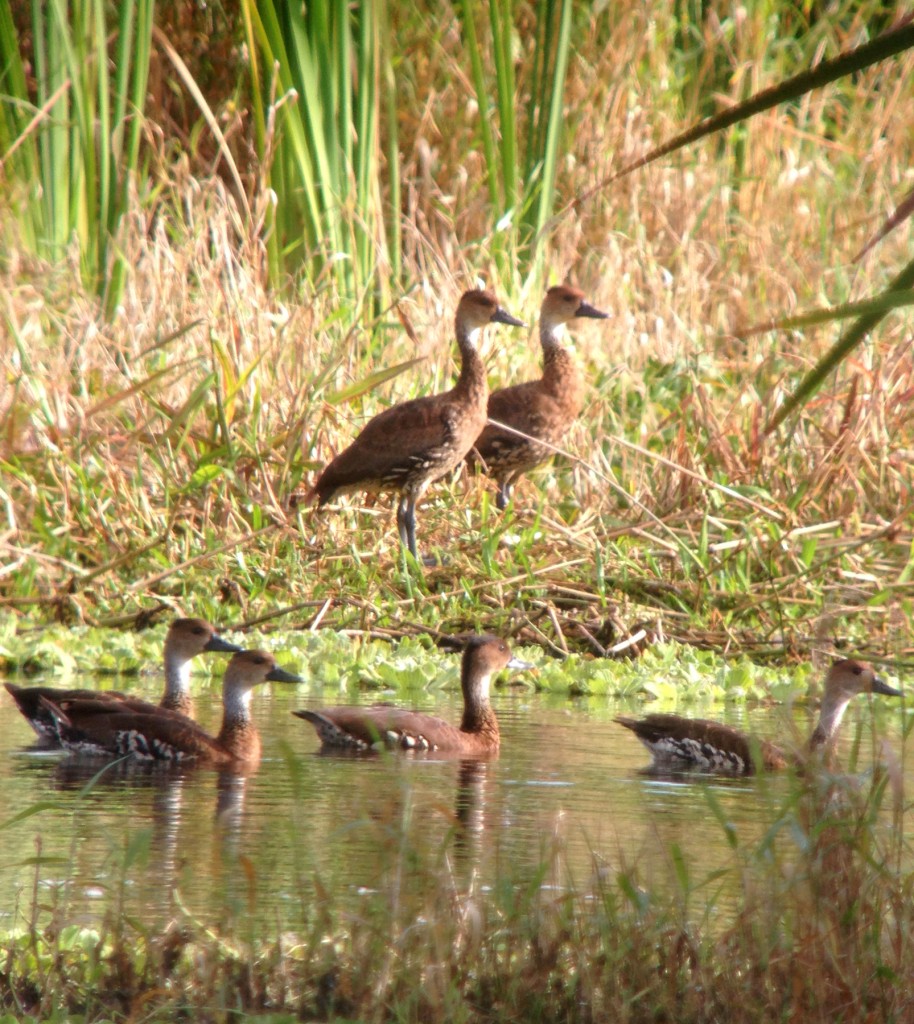
Part of a flock of West Indian Whistling-ducks, one of our major targets in the wetlands. Note the long legs and necks.
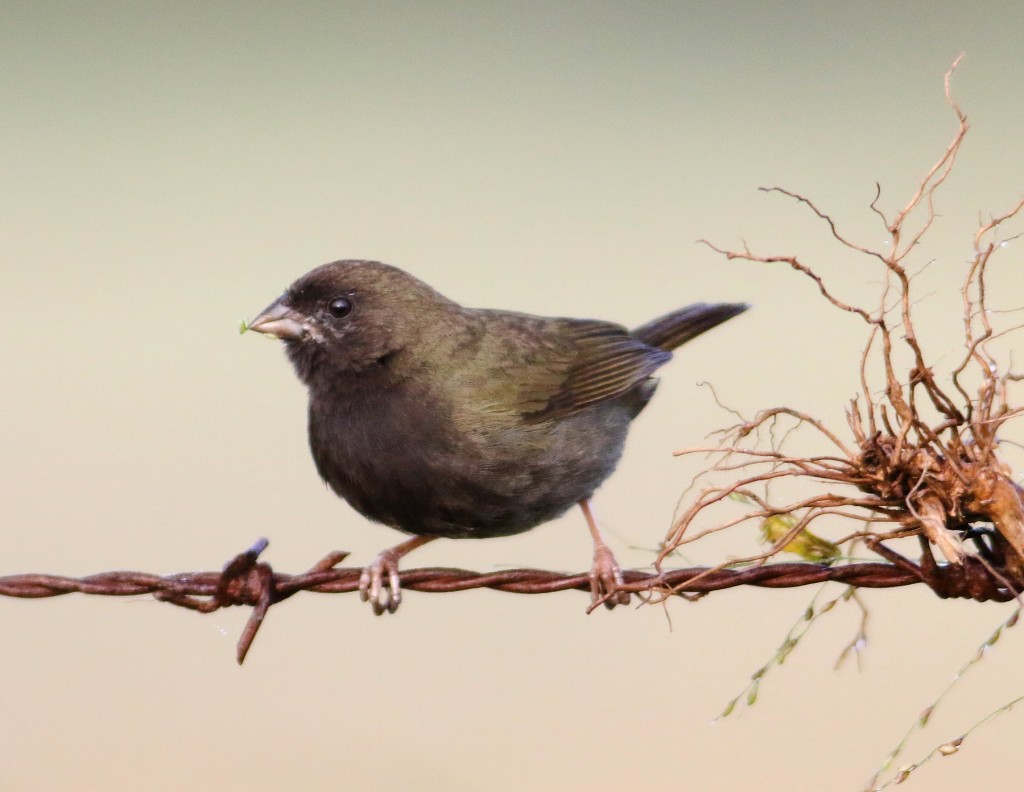
A Black-faced Grassquit found along the Laguna Cartagena entry road.
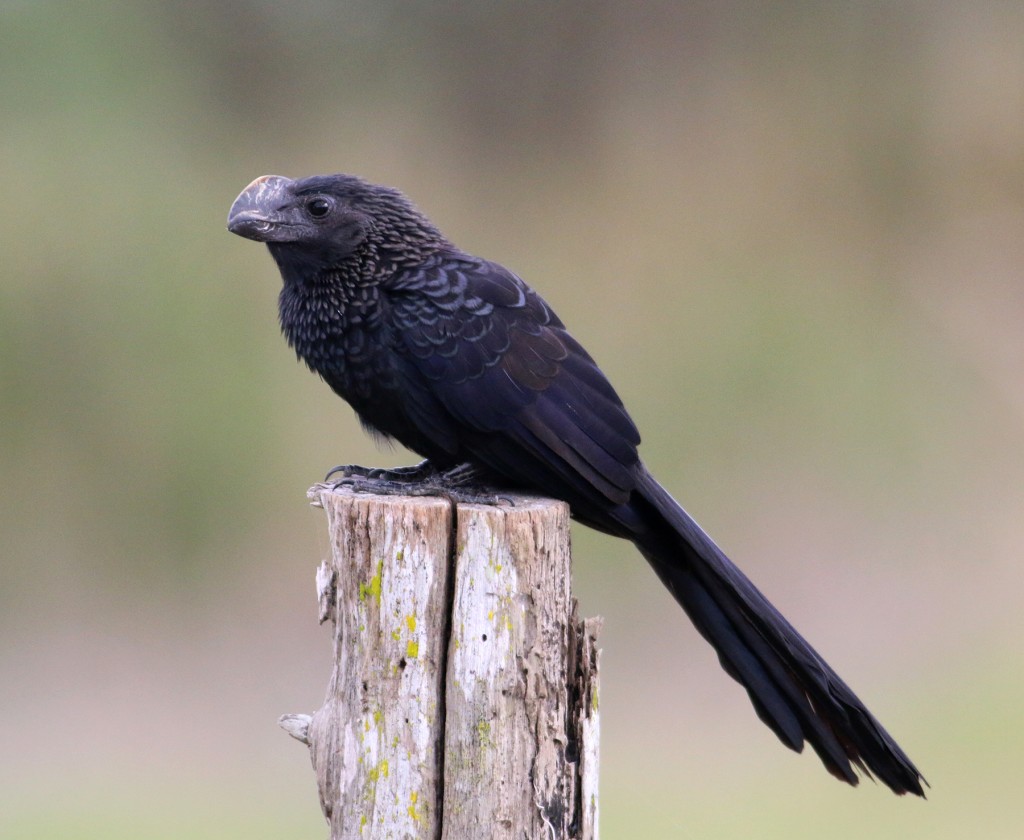
An extremely cooperative adult Smooth-billed Ani in fine plumage. They aren’t just drab uniform black birds after all. Look at those subtle colors on the feather tips.
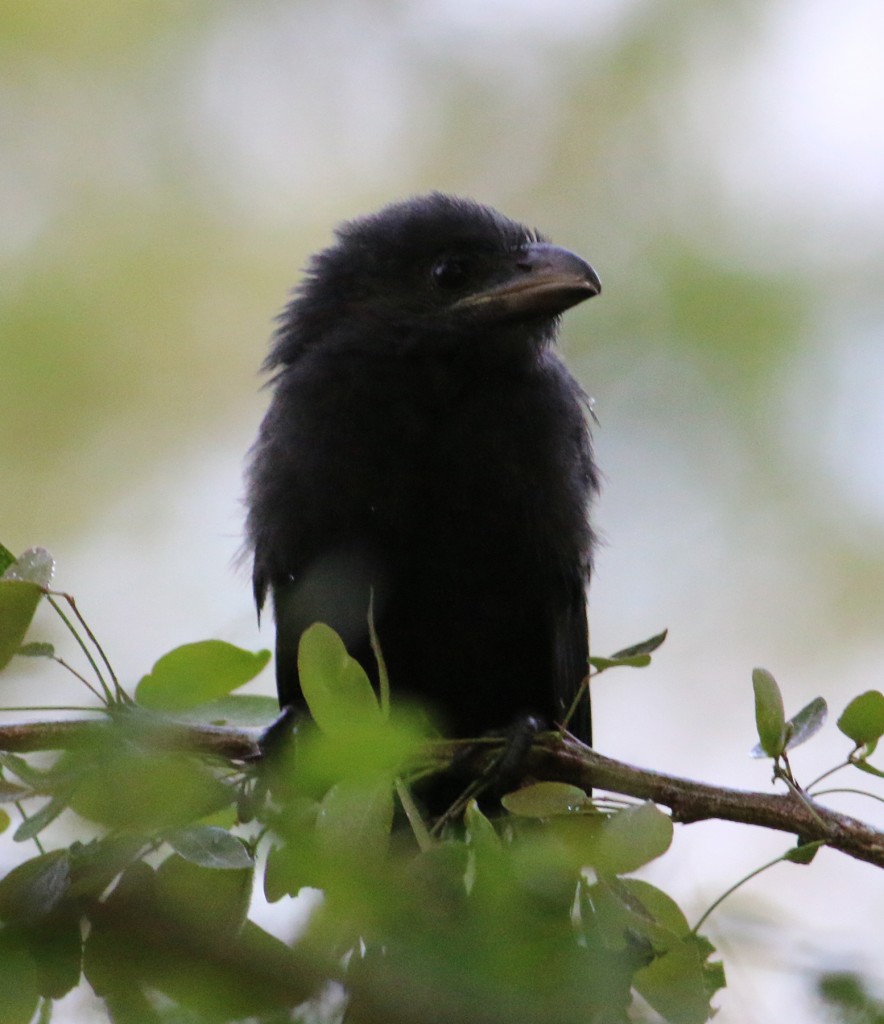
A young Smooth-biled Ani that hasn’t yet developed the classic ‘Roman nose’ of the mature Ani (as in the previous photo above).
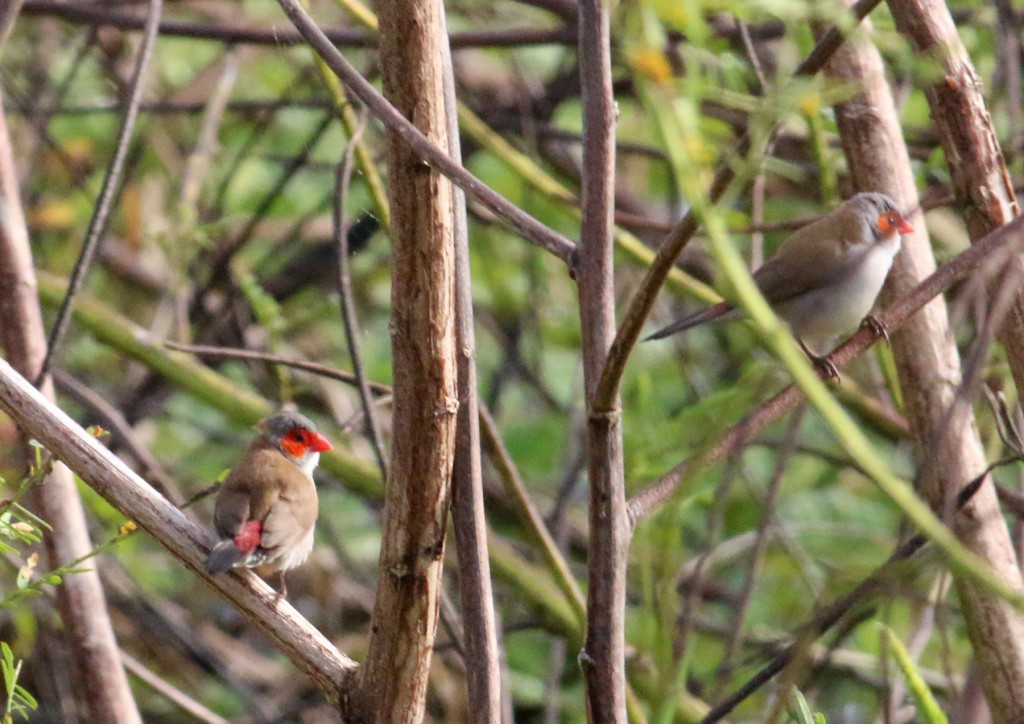
A pair from the flocks of Orange-cheeked Waxbills seen at Laguna Cartegena
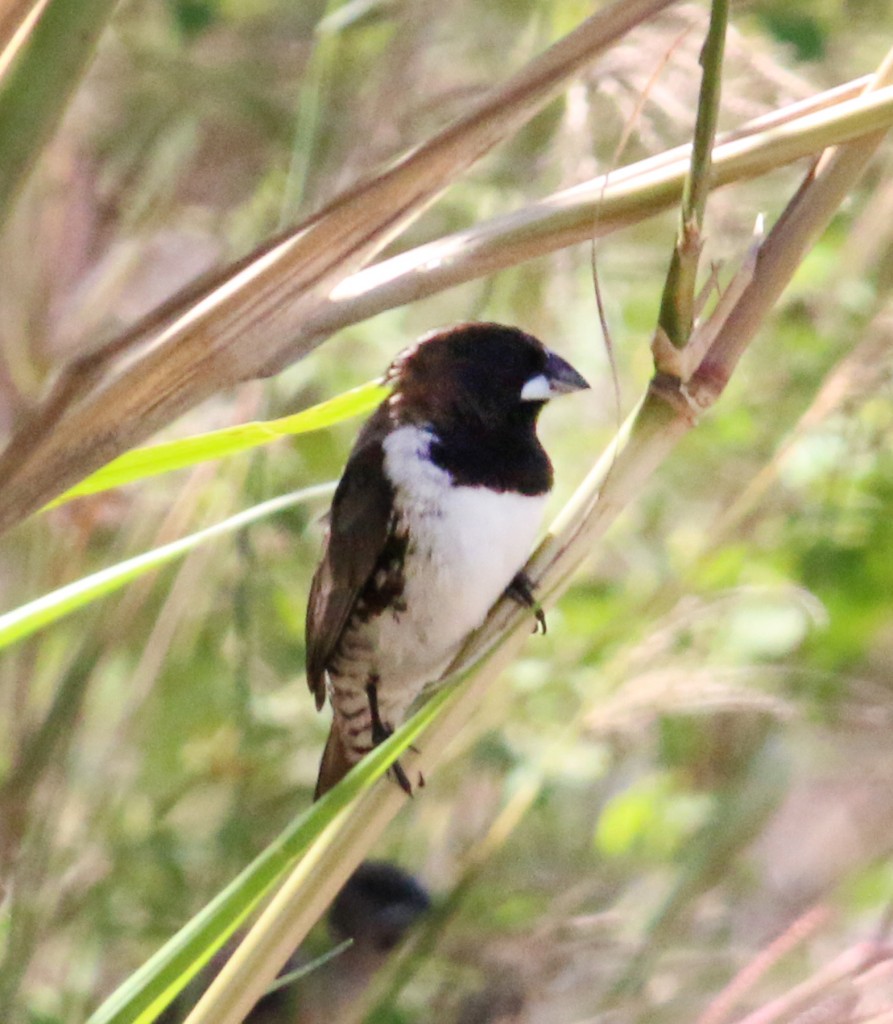
Bronze Mannikin, the third introduced species seen on this trip.
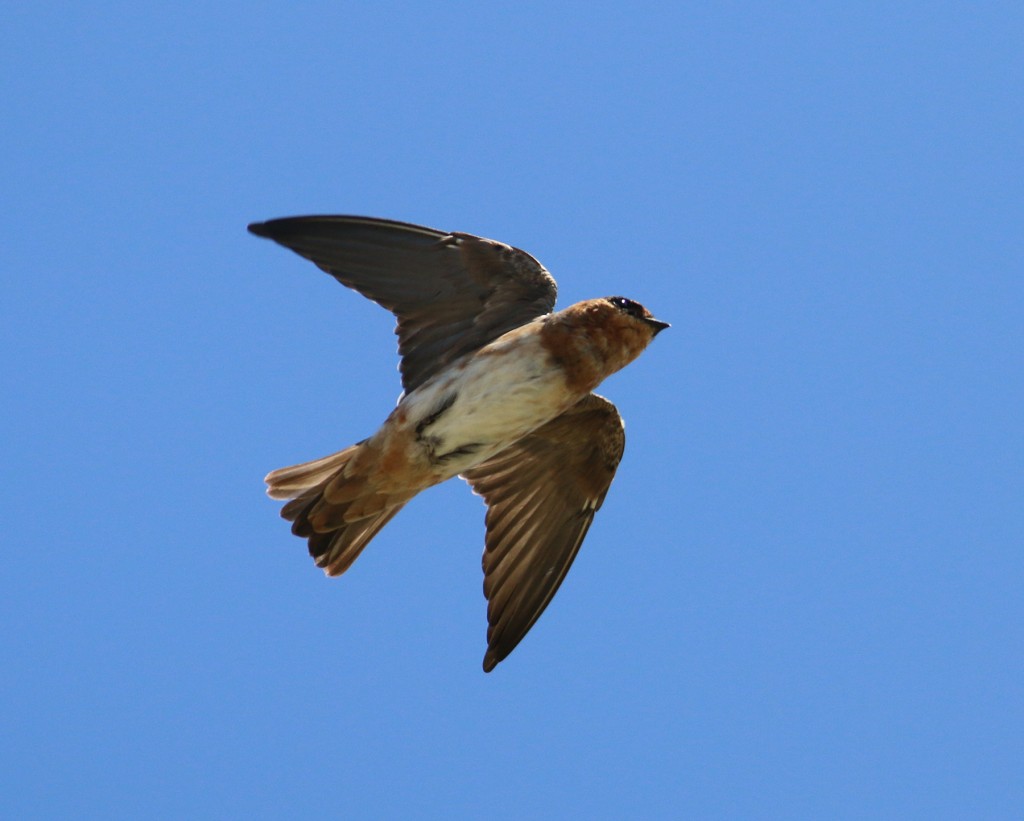
Cave Swallow seen in one of the agricultural fields near Lajas.
I neglected to mention our ‘adventure’ the previous night, when the noise and music from the adjacent plaza and bars continued past 2AM. That made two nights when it was hard to get to sleep, and I was not going to endure a third night like that. We cancelled our third night at Parador Villa Parguera and transferred to the Copamarina Resort in Guanica for our final night in southern Puerto Rico. What a difference! I would never recommend the Parador with the excessive noise, internet connectivity problems, and their trying to give us a room with a single bed instead of the two that we reserved. The Copamarina was more expensive, but it was also perfect. In the evening we walked the Ballena Trail in Guanica State Forest hoping to find Puerto Rican Nightjars. They started calling right on schedule at 6:20 PM, but unfortunately rain started coming down at 6:25. We eventually gave in to the rain and headed back to the hotel.
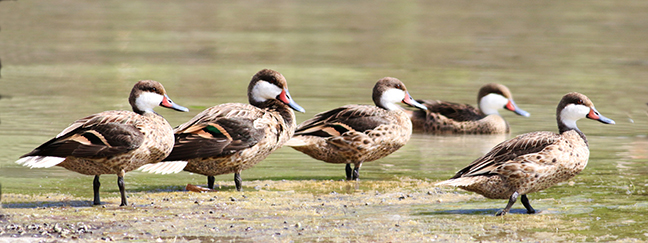
A small group of White-cheeked Pintails that visited the beach area at the Copamarina.
Day 5: We returned to Guanica at the Rte. 334 gate for another mostly nocturnal species, Puerto Rican Screech-owl. We heard at least 4 Screech-owls and a few Nightjars as the day began, but failed to see either of them. A morning walk through Guanica proved more productive than our mid-day excursion two days ago, with multiple Puerto Rican Lizard Cuckoos being a highlight.

A Puerto Rican Lizard-cuckoo from Guanica. The red eye patch distinguishes it from the similar Mangrove Cuckoo, which is also widely distributed on Puerto Rico.
Having seen or heard all of the endemics except for Puerto Rican Oriole at his point, we drove back towards the eastern end of the island for our final two days. Our home was to be the Casa Cubuy Ecolodge, located at ~1,500 ft above sea level in a forested valley just outside of the southern edge of El Yunque National Forest. This was a simple yet pleasant ecolodge, where we had a spacious room with a balcony overlooking the lush valley, although the shared common-space areas within the lodge were wonderful locations for watching birds flying between the treetops. We had by far our best views of Puerto Rican Spindalis, Loggerhead Kingbird, and many Scaly-naped Pigeons here. After an evening walk on the road and dinner in the lodge’s restaurant located 0.5 miles away, we were ready for a peaceful night’s sleep and a search for our final targets the following morning.
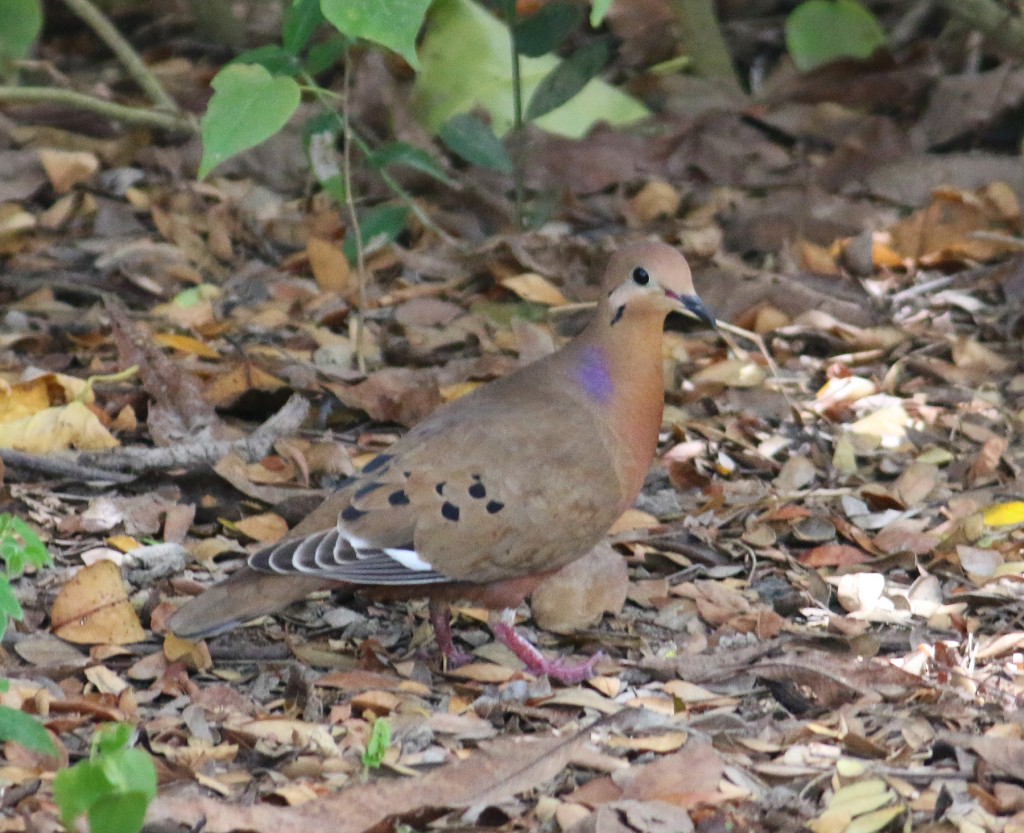
Zenaida Dove was found in several locations on this trip, but this one was photographed at a quick stop at Humacao Wetlands on the way to Casa Cubuy.
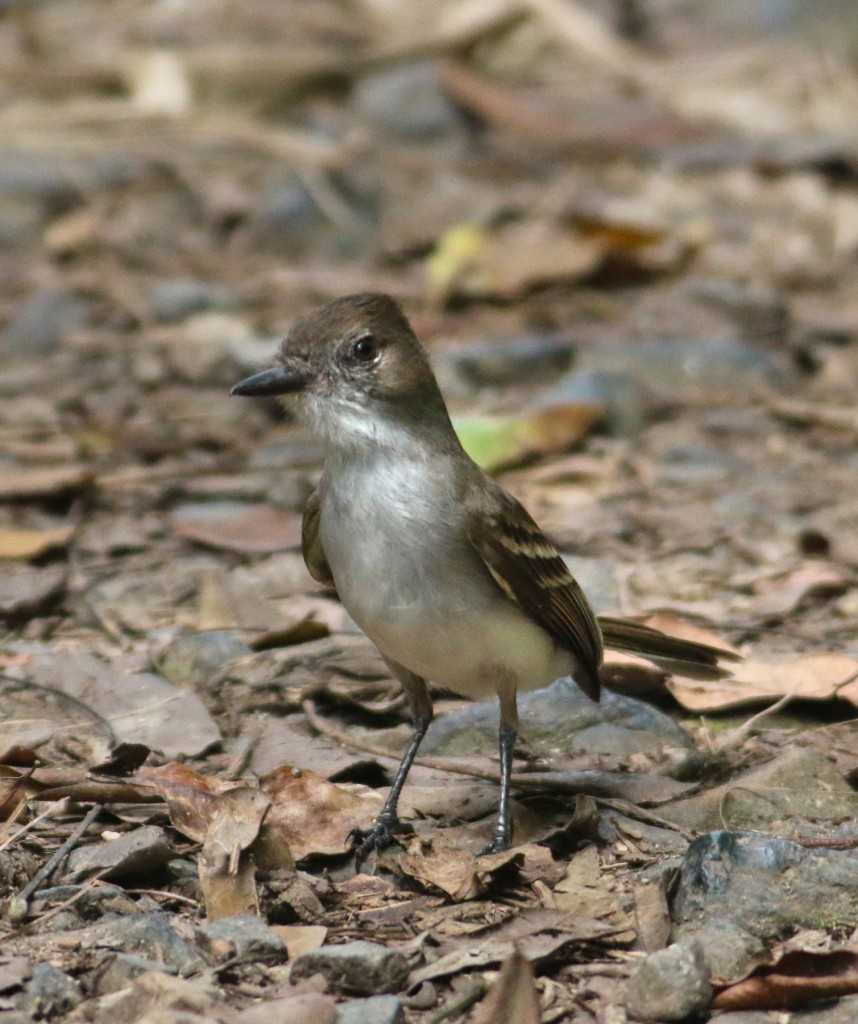
A Puerto Rican Flycatcher that was searching for nesting material on the forest floor at the Humacao Reserve
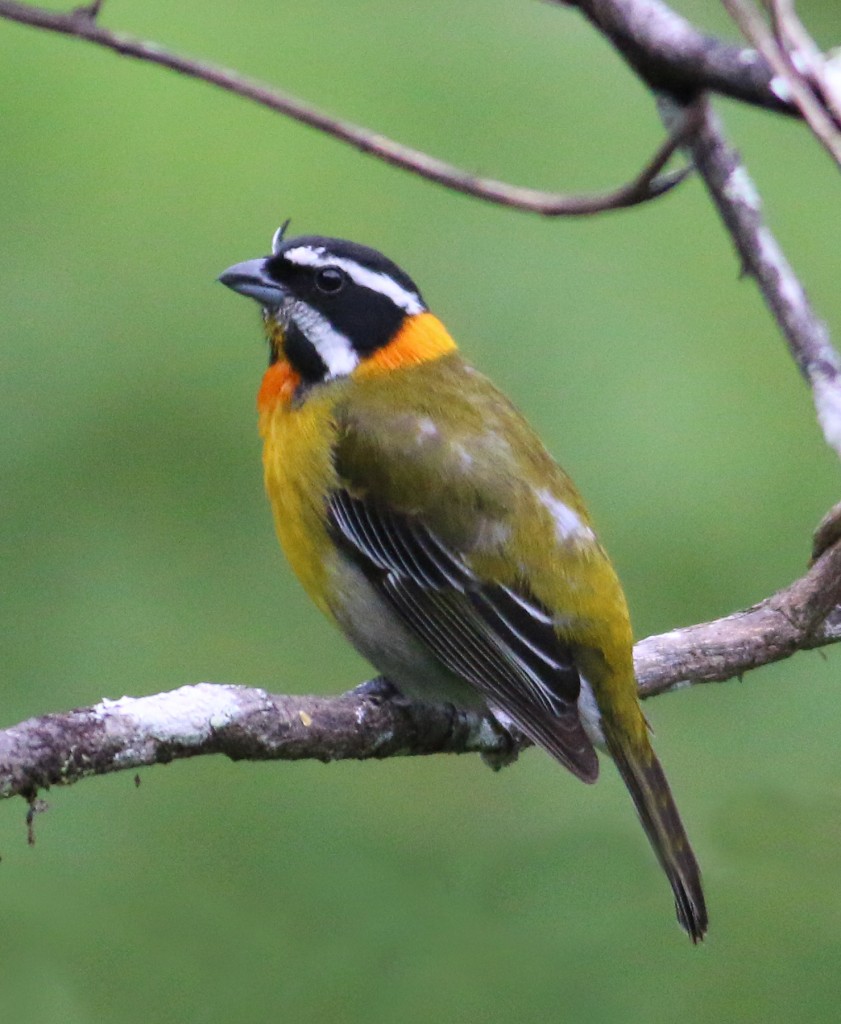
Puerto Rican Spindalis, a species that we saw in several locations, but you couldn’t beat the views of them in the treetops from Casa Cubuy.
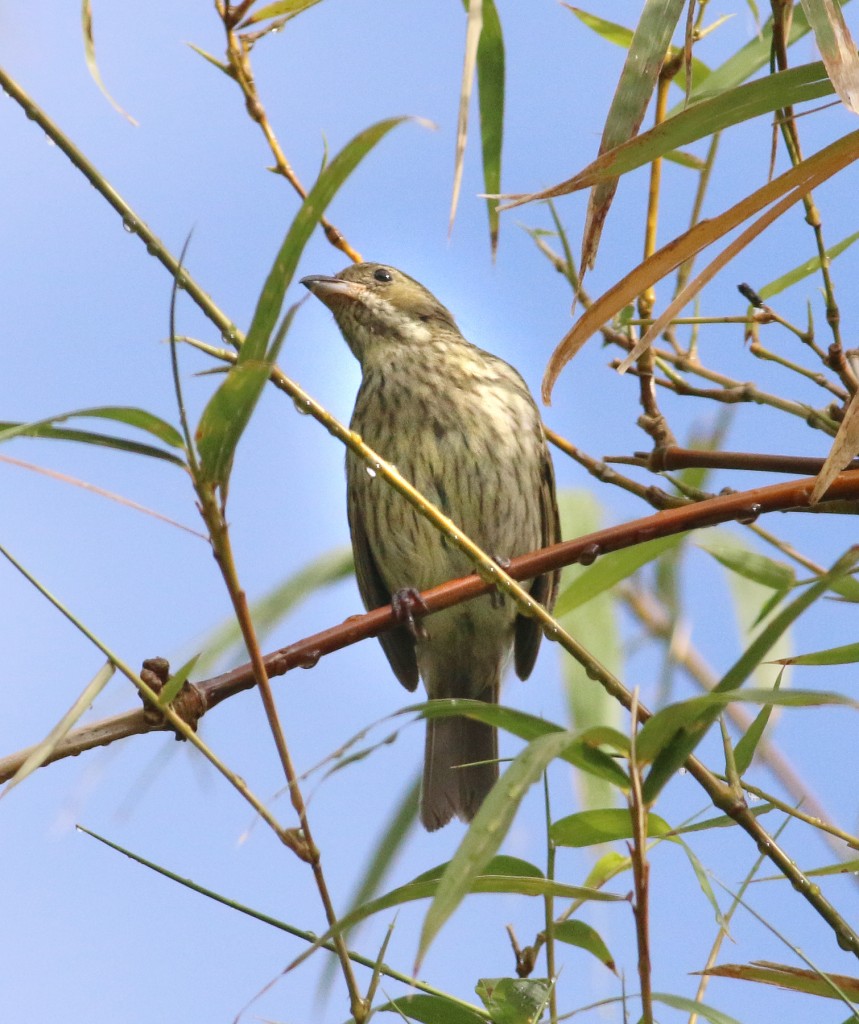
Here’s the female Puerto Rican Spindalis. It took a long time for us to figure out what this is.
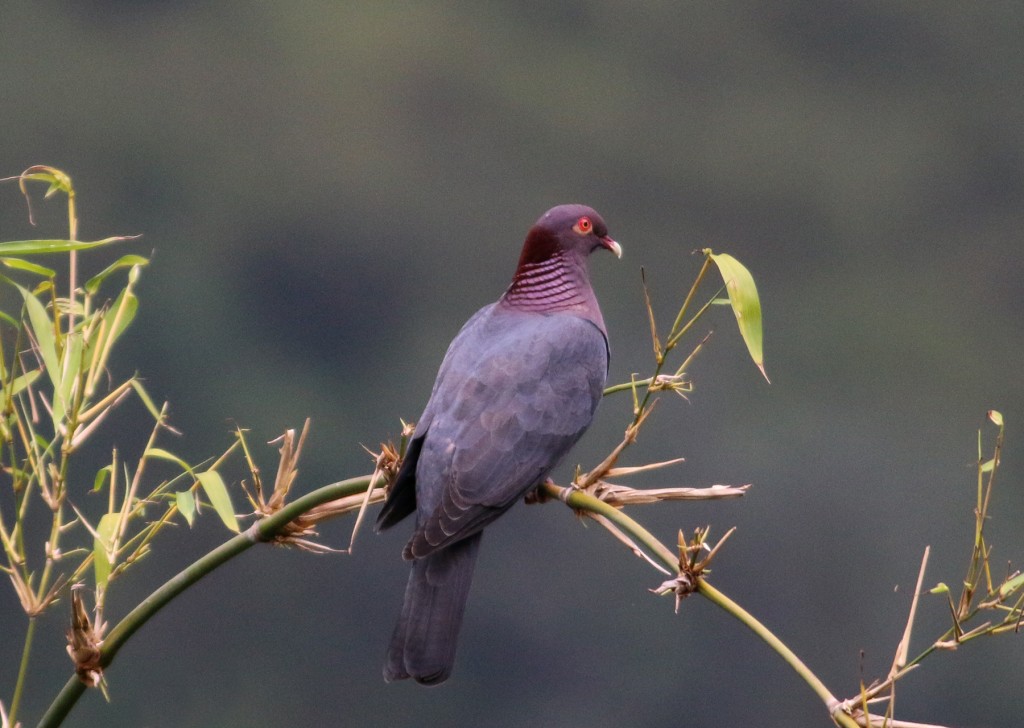
Scaly-naped Pigeon, another species that we saw from below in the highlands of Maricao, but which were nesting a few feet from the Casa Cubuy balcony, often perching nearby at eye level.
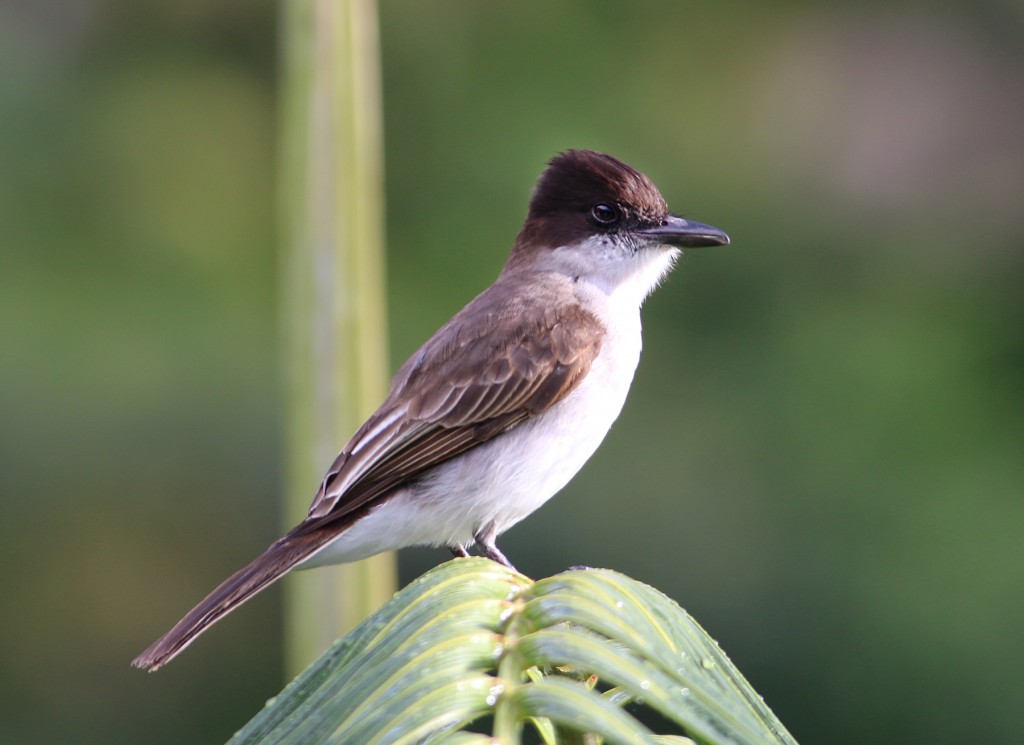
Loggerhead Kingbird, which was seen much less frequently than Gray Kingbird, but they were nesting at eye level at Casa Cubuy. Note the all-dark and peaked cap compared to the similar Gray Kingbird seen in the photo below.
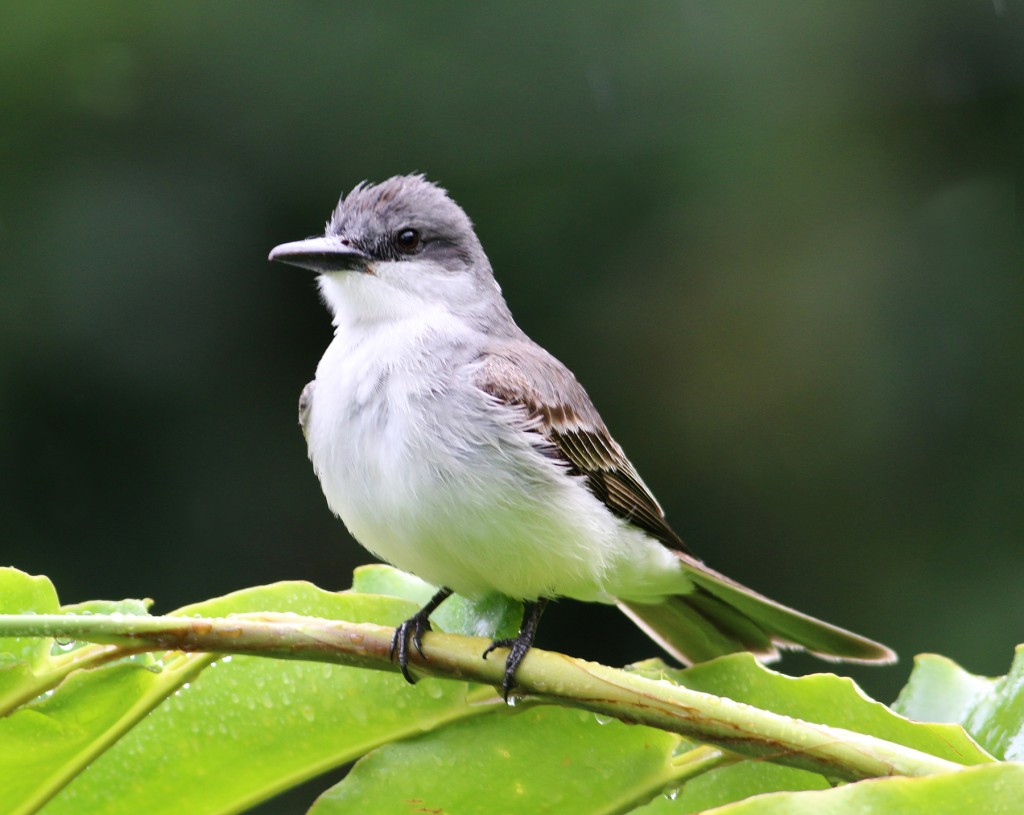
The ubiquitous Gray Kingbird, with its gray cap and black eye patch, was seen nearly everywhere on the island, often perched on telephone wires.
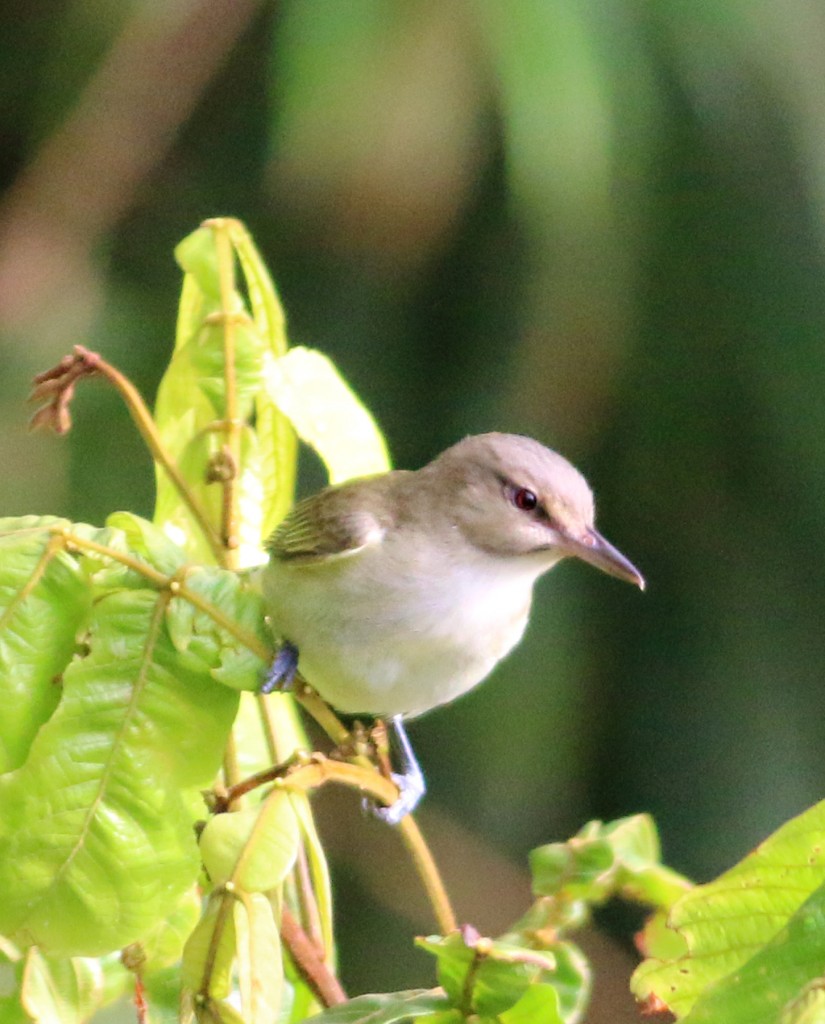
Black-whiskered Vireo. We saw and heard them all over the island, but by far the best views were from Casa Cubuy, where they nested just below the balcony.
I’d like to say a little more about Casa Cubuy, an ecolodge where we stayed for two nights just outside of the southern end of El Yunque National Forest. We were not expecting too much after already seeing nearly all of the target birds of Puerto Rico, but I really liked staying here. The clean and simple ecolodge atmosphere with good food was very welcome. Communal balconies allowed eye-level photos and views of birds that we normally would strain our neck to see. The road toward El Yunque dead-ends a 0.5 mile or so above Casa Cubuy, so there is little traffic, providing easy comfortable walks on the road through the forest and into the valley. This was my favorite place to stay in Puerto Rico.
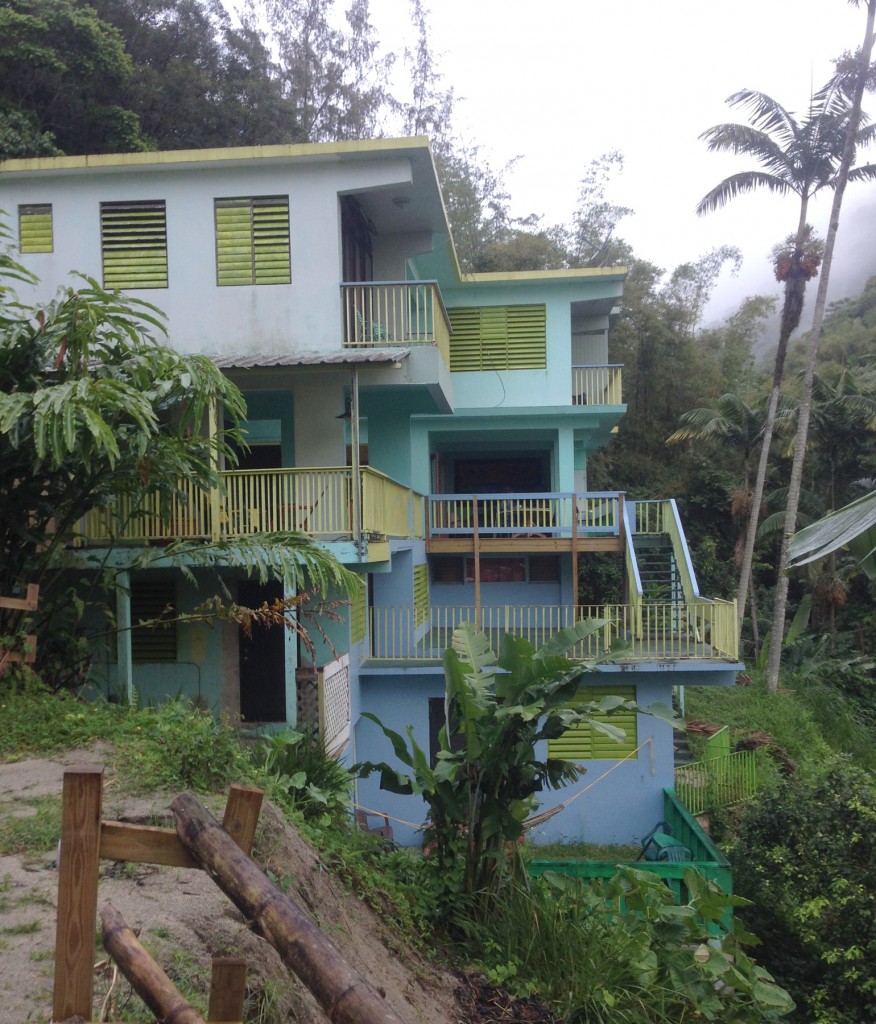
Casa Cubuy. It doesn’t look elegant, but it is clean, simple, and was a wonderful place to stay just outside of the southern border of El Yunque.
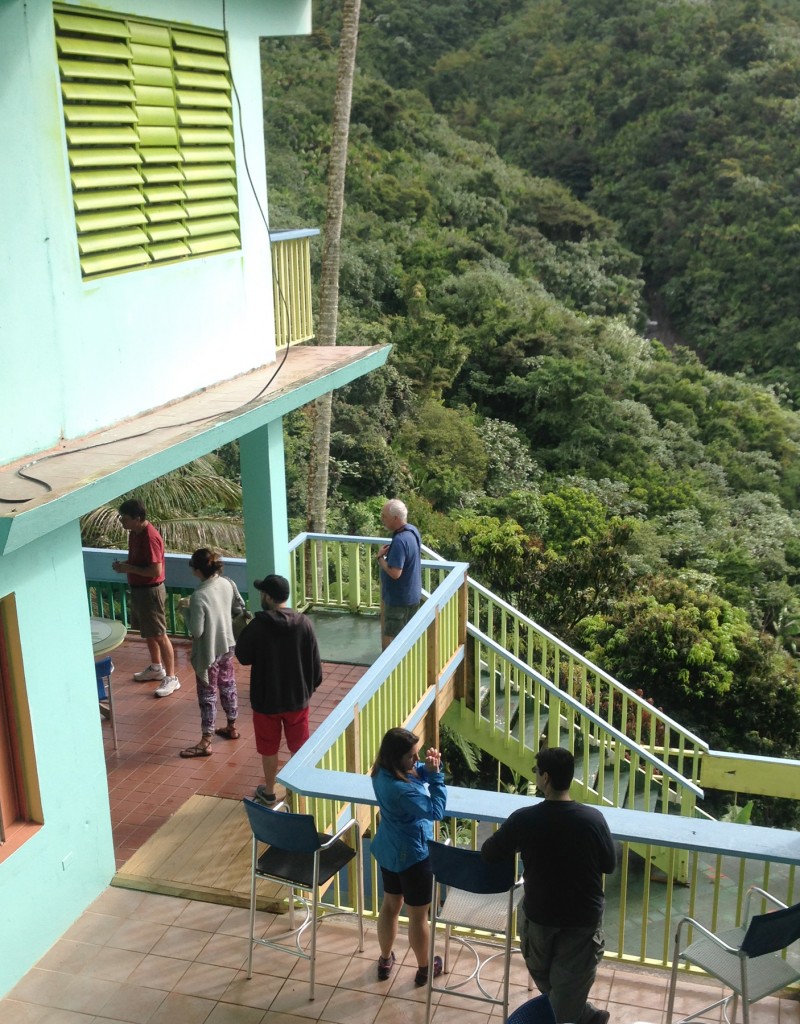
A view of the common area and balconies at Casa Cubuy.
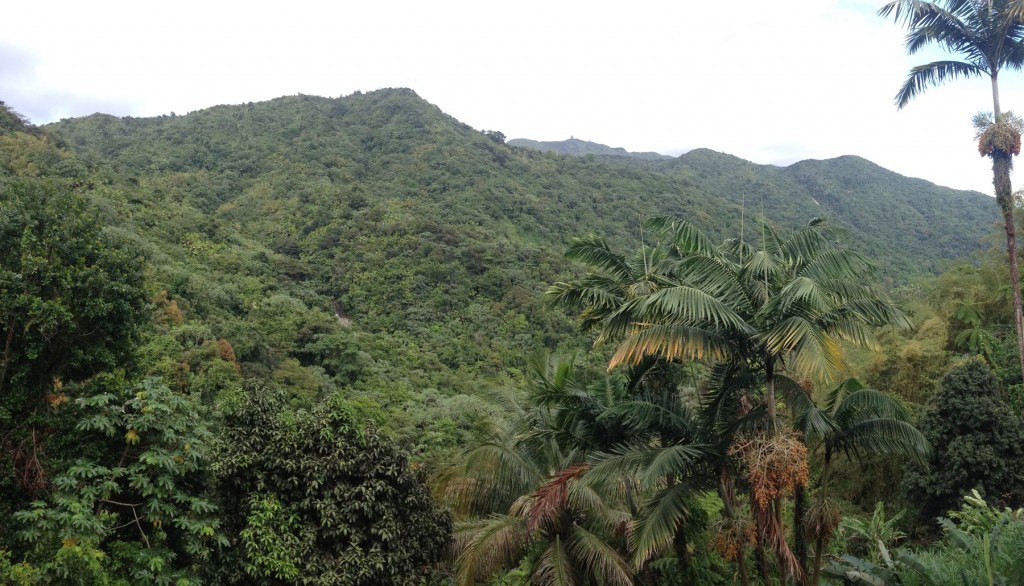
Here’s the view from the Casa Cubuy balcony, with treetop views across the lush valley. A great location for photographing treetop birds at eye level.
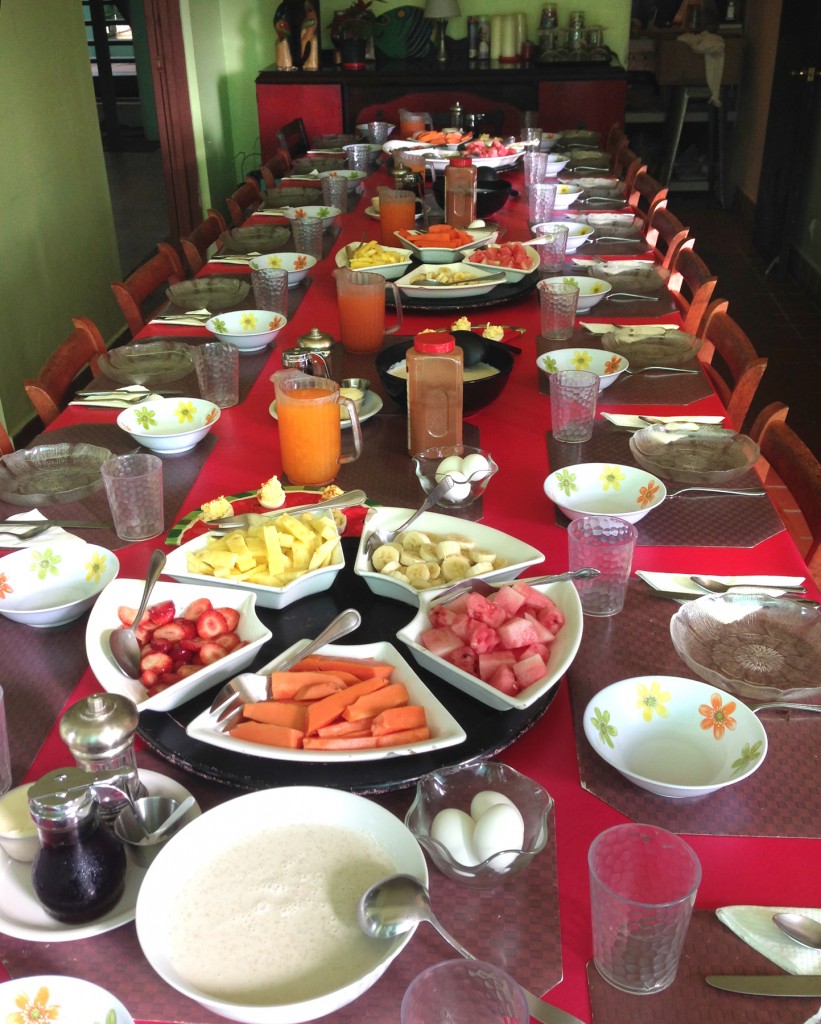
The communal breakfast spread at Casa Cubuy was all that you could ask for and more.
Day 6: Today’s main target was our final endemic, Puerto Rican Oriole. As the sun rose, the birding gods were smiling upon us, because just 20 ft away from our balcony we heard an Oriole singing its dawn song from a palm tree! Could we get any luckier?! In the afternoon we drove downhill 30 minutes to the coastal town of Fajardo. There are two Caribbean specialty hummingbirds that favor purple-flowered Jacaranda trees on this east coast at this time of year. At the Fajardo Inn we didn’t see any purple-flowering trees, nor any hummers in the flowers in the Inn gardens. We therefore drove ~10 minutes away, planning to bird an abandoned military field in Ceiba called Roosevelt Roads, but while driving there, we passed a road lined with purple-flowering trees. Indeed, in the first tree Rich spotted a hummingbird, and then another and then another. We had plenty of opportunity to scan through the multiple hummingbirds, eventually finding at least seven Green-throated Caribs and an Antillean Crested Hummingbird. These birds completed our target list, and after a hearty breakfast at Casa Cubuy the next morning we were ready to head home.
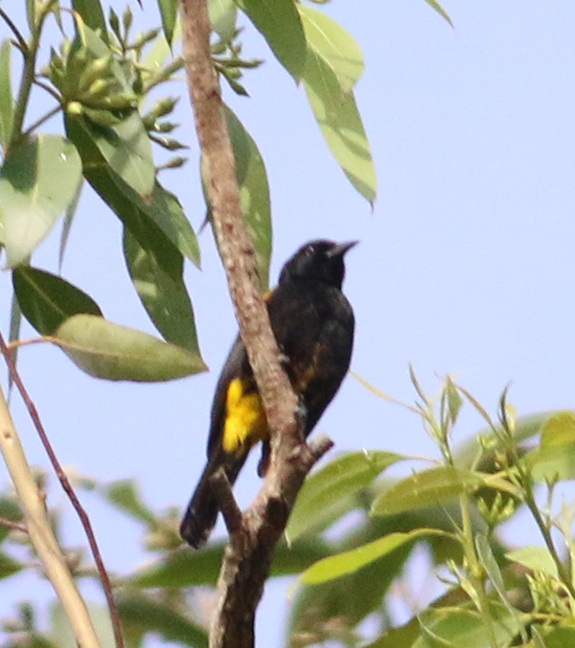
Puerto Rican Oriole, our final endemic species. They were nesting along the side of Casa Cubuy, but were relatively shy.
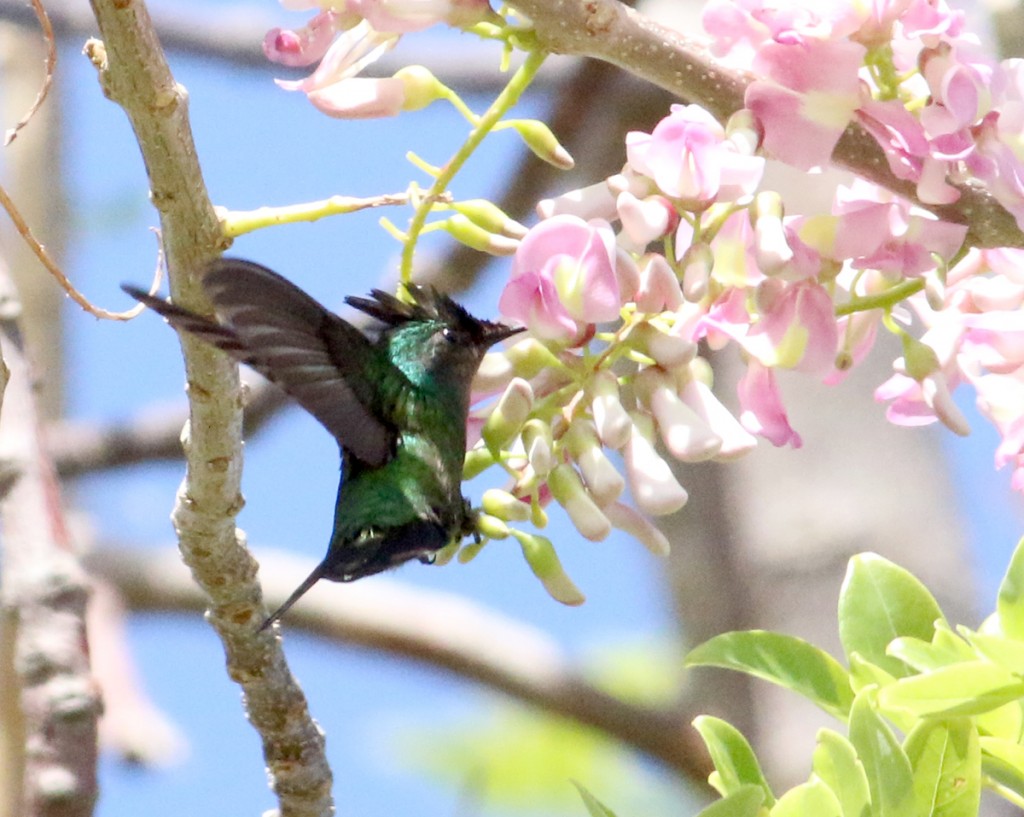
Antillean Crested Hummingbird, one of two Caribbean hummingbird specialties that inhabit the east coast. The small size, small bill, and crest makes it very distinctive.
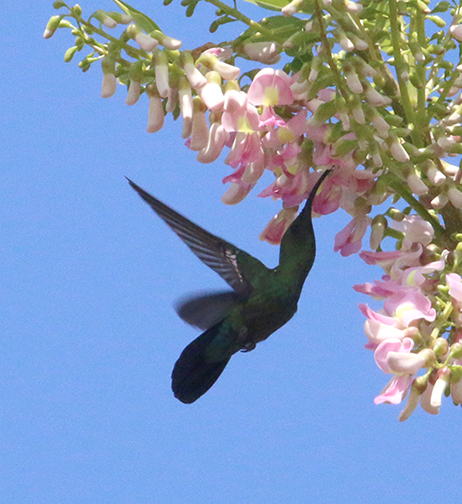
Green-throated Carib, another Caribbean specialty that favors the east coast of Puerto Rico.
A Few Final Comments
I prefer unguided or semi-guided birding trips rather than fully guided tours, with the reduced cost and the pleasure of finding and identifying birds yourself as the main motivating factors. I realize that this approach is not for everybody, but if you want to try an unguided trip, Puerto Rico is a really good place to start due to the organizational simplicity compared to trips to other countries. We were pleasantly surprised by a few things on this trip. First, Puerto has some poor areas, but overall, the poverty level does not approach the level that we have seen in other countries that we have birded (Colombia, Ecuador, Panama, Costa Rica). Probably for this reason, we had no concerns whatsoever about personal safety in the locations where we traveled, which made for a more relaxed trip. Second, we had heard about the aggressive Puerto Rican drivers and the narrow roads. Yes, some of the mountain roads are narrow and require caution on the turns, but overall we actually found the drivers to be more cautious than those back home in NJ. Overall, the roads were in great shape, equivalent in quality to those in the states. Finally, with concerns about Zika virus and other tropical diseases, any travels to the tropics raises concern about mosquitoes. Yet on this trip we did not see a single mosquito, and had absolutely no pest-related problems (no chiggers, ticks, flies, spiders, or scorpions). Heck, we have much more of a problem with insects in the marshes of NJ. We never even used our bug spray. Overall, we ended up with a total of 105 species, seeing or hearing all seventeen endemics. Total cost for this seven-day trip (including flight): $1,050 pp. Thirty-eight new lifers: priceless.
If you are considering a self-guided trip to Puerto Rico and would like advice or more details on how we did it, feel free to contact me at greg@birdquiz.net.
The endemic bird species of Puerto Rico
Puerto Rican Lizard-cuckoo We found these to be widespread, seeing or hearing them most days, from highlands to the dry forest of Guanica. Our best views and highest numbers were in Guanica. Learn their calls.
Puerto Rican Screech-owl We only heard them, near the PR-334 entrance gate one morning in Guanica.
Puerto Rican Nightjar A dry forest specialty. We heard them both at night and in the morning at Guanica, but never saw one.
Green Mango A highland hummingbird. We only saw one, at Maricao.
Puerto Rican Emerald We found one near the Guanica visitor center parking lot feeding on a couple stalks of yellow flowers.
Puerto Rican Tody These delightful birds were all over, in good numbers. Learning their calls makes it much easier to find them.
Puerto Rican Woodpecker We saw 1-3 of them nearly every day. Widespread.
Puerto Rican Parrot Very rare, but now able to be seen readily in Rio Abajo State Forest.
Puerto Rican Flycatcher Not very common for us, but we saw some well in Guanica and Calambache.
Puerto Rican Vireo Less common than the ubiquitous Black-whiskered Vireo. We saw it in Rio Abajo.
Elfin-woods Warbler A rare highland species. Similar in appearance to Black-and-white Warblers (which we saw in a few locations), but with more black on the face. They also feed very rapidly and erratically, different from the trunk-and-branch creeping behavior of B&W Warblers.
Adelaide’s Warbler Widely reported, and we heard them in a few places, but we saw most of ours in Guanica. The loud trilling song helps to find them.
Puerto Rican Spindalis We saw them in a few places in low numbers, but most readily at Casa Cubuy.
Puerto Rican Tanager Another highland specialty. We saw a dozen or so in small groups at Maricao.
Puerto Rican Bullfinch Listen for the loud call notes followed by a trill. The ones at Casa Cubuy remained hidden, but we had good luck seeing them at Maricao, Rio Abajo, and elsewhere.
Yellow-shouldered Blackbird Many people see this threatened species in La Parguera where they feed on discarded bread near a store in town. We saw them while eating in a local eatery just outside of Cabo Rojo, so we never bothered with the bread-eating version.
Puerto Rican Oriole This was the final species that we needed, and we were obliged with a pair that nested just outside our room at Casa Cubuy. Sometimes the birding gods smile upon us.
